


































































































“If it ain’t fun, don’t do it.”
“If you don’t have passion, don’t do it.”
People say these things all the time, but I live by them. I genuinely believe that with passion and persistence, you can chase anything in life. It’s a mindset. A belief that dreams aren’t just abstract, they’re blueprints. And with the right energy behind them, they become reality.
Over the past three years, everything around us has shifted. The industry has evolved. Audiences have transformed. A bold new generation has emerged, louder, freer, more unapologetically themselves than ever. When I launched YUNG, I didn’t just want to capture that shift. I wanted to champion it, long before the market caught on. We saw what was coming, and we leaned all the way in.
Today, I’m proud to say that YUNG is helping to define the cultural movement in this region. We’ve featured fearless voices, launched first-time talents, and built a space where realness always wins. We didn’t just feature creatives, we put them on the map.
People ask me all the time:
“How did you start?”
“How did you grow so fast?”
The truth is, it didn’t happen overnight. It came from years of publishing experience, countless lessons, and a small team that believed in the vision as fiercely as I did. It was about consistency, showing up, even when doubt crept in.
Was there fear? Of course. But I’ve learned that fear isn’t the enemy. It’s the sign you’re about to do something important. As Charles Duboulos, Brand Ambassador for Richard Mille said, “Without fear, there is no courage.” Fear pushes us, sharpens us, and demands more. It forces us to stretch, to grow, to become braver versions of ourselves.

And here’s the other big lesson: perfection is a myth. One that slows you down. I’m a perfectionist by nature, but over time, I’ve realized that chasing “perfect” can stop you from ever going to print, or hitting “Send”. The truth? We don’t need to be perfect. We just need to be present. Honest. Hungry. Willing to try, to fall, to build.
And by simply existing, by daring to show up, YUNG has made a difference.
For this anniversary issue, we bring new faces and new voices. It’s a celebration of what we’ve built, and what’s still ahead. Our cover stars lead the way: Rayan El Mahmoud, 19, blends Ghanaian and Lebanese heritage into a graceful yet bold presence. Lebanese Romy Nassar is a model by chance, a muse by nature, and an artist of presence whose beauty resists definition and whose voice insists on being heard. While Andrew Makadsi’s work spans from New York’s underground music scene, where he brings his Arab heritage to every beat as the co-founder and sonic architect of Function NYC, to luxury fashion and visual storytelling as Beyoncé’s Creative Director and beyond.
Furthermore, we also celebrate a special collab between YUNG and Claudette, a Kuwaiti brand that bridges art and fashion with an unapologetic edge. Together, we are excited to announce our first exclusive merchandise collaboration with a talented creative from the Arab world, set to drop at the end of April.
This issue is about energy, risk, and identity, it’s about creatives who don’t wait for permission. We wanted to celebrate with you and thank you for growing with us.
Founder and Editor in Chief - YUNG

Contents
Masthead
Contributors
The Anniversary Issue
The Mood
Fading Echoes
Hermès - The Alchemy of Scent
Romy Nassar – The One You Turn Around For
Rayan El Mahmoud – A Star in the Making
Andrew Makadsi – Sonics and Visuals
High Frequency
Confined
The Emergence of Saudi’s Art World
Walls of Identity
Metropolis Cinema
The Harmony of Moments
The Disappearing Artist Syndrome
Burberry - Without Borders
TAG Heuer - Driving Time Forward
Bvlgari - The Infinite Serpent
Jaeger-LeCoultre - An Icon Reimagined
Audemars Piguet - A Story of Resilience and Dedication
Black Smoke Red Flame
Chrome Glory
Prada Mode Comes to Abu Dhabi
Claudette in The Wild
FENDI - Writing The Future an Icon at a Time
Glow Into Spring
Sharjah Biennial 16
Yung Escapes
The Space
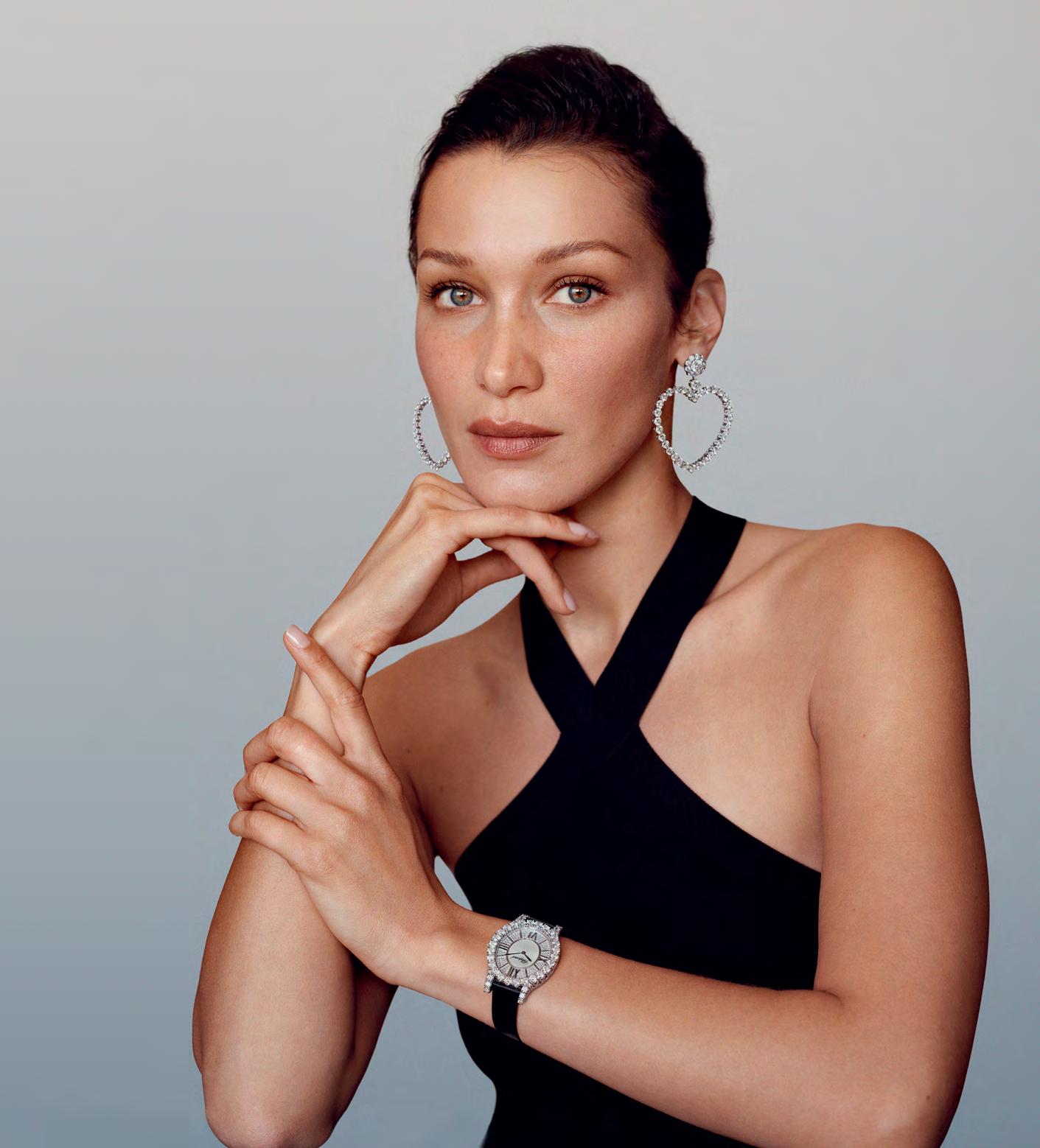
founder and editor in chief SANDRA YEGHIAZARIAN
creative director
SAIF HIDAYAH
art director
ATHINA SYMEONIDOU
managing editor
NADINE KAHIL
senior editor
LOUIS PARKS
producer LANA SHASH
creative project manager OMAIA JALLAD
editorial content assistant MAYA MAGED
digital writers MENNA SHANAB
MARIANA BAIÃO SANTOS
executive assistant
DARA HAMARNEH dara@thisisyung.com
SUBMISSIONS AND INQUIRIES hello@thisisyung.com
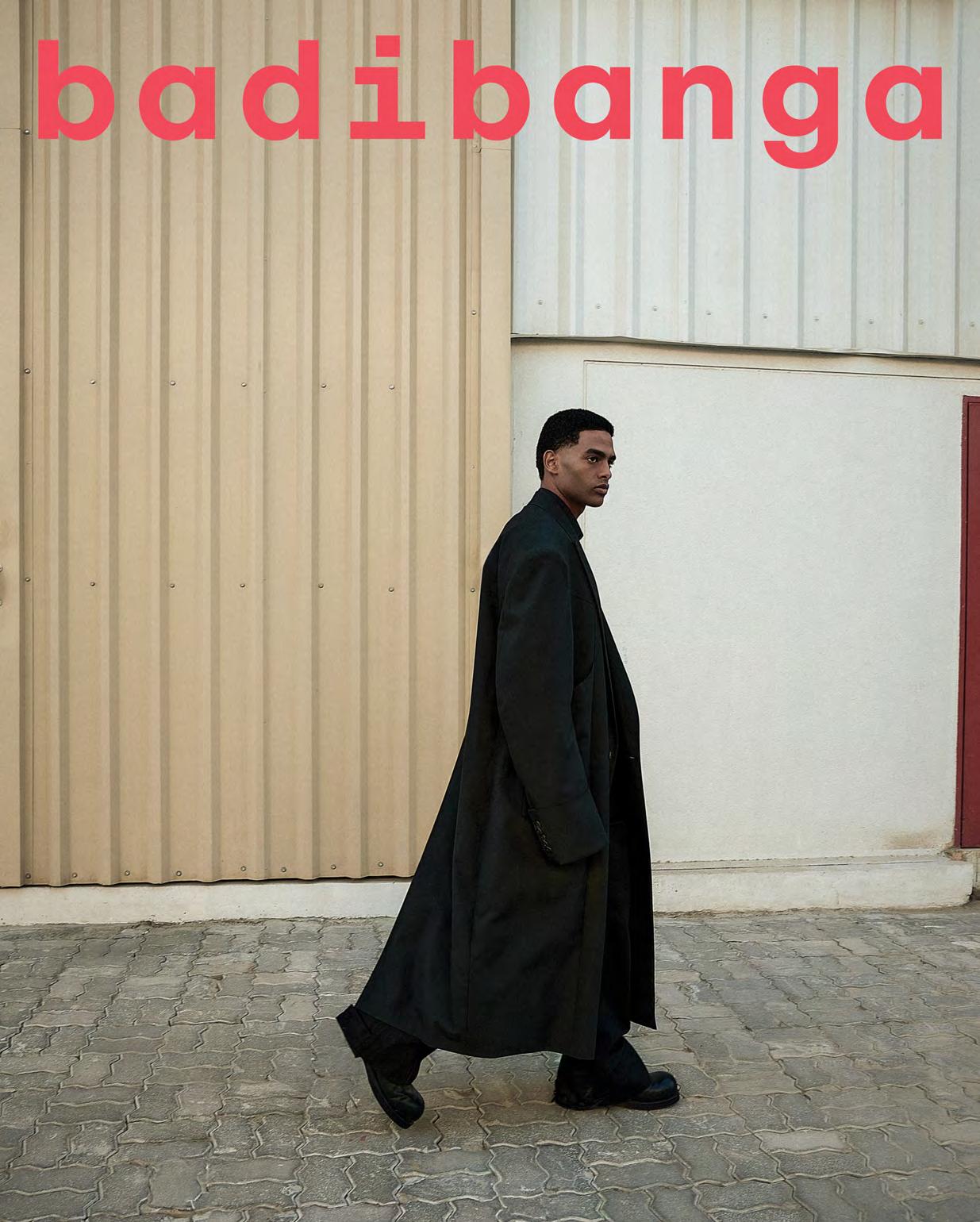
ADAM LOURAZI / ALEX JOSE / ALEX WILSON / AMER MOHAMAD / ANYA SETH / BARDHA
KQIKU / BEATA DUVAKER / BEN JOB / BILLY
CARR / CARLOS DURO / CONNIE ALLISTAT / DANIELA SUAREZ DE LOS RIOS / DAVID
IKUEPAMITAN / ELDA KASTRATI / ELENA
SGOURAS / EMI PAPANIKOLA / EMILIE MATTEI / EMILY WHITE / EMANUELE CARRERA /
GAELLE IBRAHIM / HAYA DABBOUS / IGNACIO DE TEIDRA / JACK CHIPPER / JAZMIN LOIS
RODRIGUEZ / JEFF CRUZ ZAMORA / JOAN
CALSINA / JOHANNELYS GARCIA / JOSHUA
ABECASSIS / KAY SLINKY / KING OWUSU / KORNELIJUS BUDRYS / LAMIA DAHMASH / LAYAN DABBOUS / LIAM JOHN HILL / LILY
RIMMER / LINA FERNANDA / LINDIE BENADE / LIZ MARTIN / LUCY RANSON / LUIS AYORA / MABEL BOON / MAI SAITO / MAKI SO / MALO
ESPERCIEUX / MARC MORROW / MARCIA
LENNONA / MARCO AIELLO / MIRKO DE PROPIS / MIWA MOROK / MOHAMMED SALKINE / NAZILA AZIZI / NICOLA SCLANO / NOUR AL DOHNI / OUALID BOUDRAR / OLYA KUSHYK / ORIOL ROBERT / PAOLA DALLA COSTA / PER
APPELGREN / PO TSUN LIN / RIYAM SELIM / ROSIE KING / ROSIE SLAWIŃSKA / ROSEANNA HACKETT / RUBY MENSAH / SARAH BARBOTIN / SEREN BAKIR / SHARBEL HASBANY / SHAY MERCHANT / SHEREE-JOURDAN / SOFIA BARBONI / TALEEDAH TAMER / TARIK BENNAFIA / TERESA GASCA / VADYM
YATSUN / VASILIOS SMARAGDAS / VASSO
STATHOPOULOU / VICTORY ONOWONI / YEHIA BEDIER / YUI OZAKI
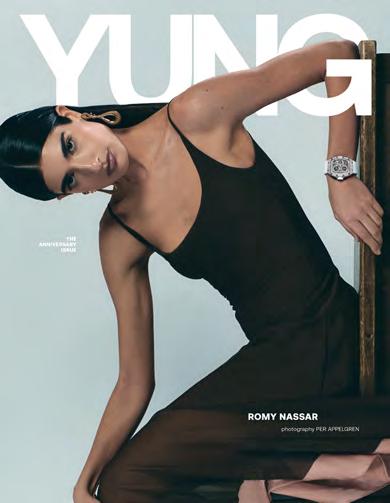

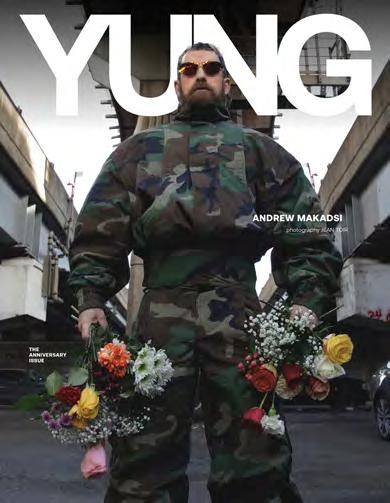
ROMY NASSAR photography PER APPELGREN
styling MIRKO DE PROPIS
RAYAN EL MAHMOUD photography VADYM YATSUN styling IGNACIO DE TIEDRA
ANDREW MAKADSI photography JEAN TOIR styling TOBIAS ULMER
Creatives featured from over 3
featured
covers to date
20locations across the Middle East
Yeghiazarian Editor in Chief
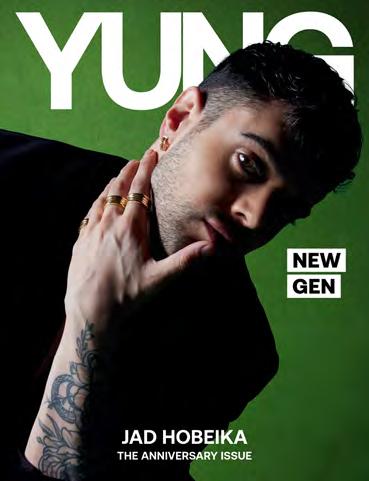
My favourite cover issue #07
My favourite cover is Jad Hobeika, a Lebanese designer now stepping into the spotlight alongside his father. As the son of renowned fashion designer Georges Hobeika, he’s starting to make his own mark in the fashion world. His debut cover in YUNG in collaboration with Bvlgari made it a bold statement. Jad represents the next generation of fashion designers.

Saif Hidayah
Creative Director
My favourite images issue #06, #11
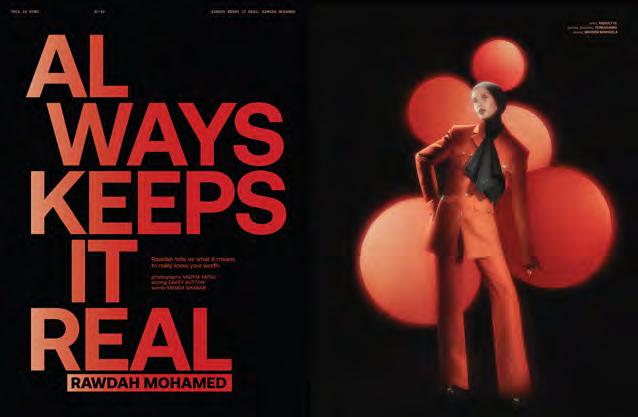
My favourite cover story issue #10

These are my favourite images because I feel like they best capture my creative voice. They explore a variety of mediums while showcasing my fascination with light manipulation.
I’m deeply inspired by the Rawdah cover, not just because of her striking presence, but because her story is one of resilience, identity, and redefining beauty on her own terms. In an industry often overwhelmed by repetitive and narrow beauty ideals, Rawdah stands out as a powerful force of change. Her journey, shaped by cultural diversity and fearless self-expression, challenges long-standing norms and offers a refreshing, much-needed perspective in fashion today. She’s not just breaking boundaries, she’s reshaping them.
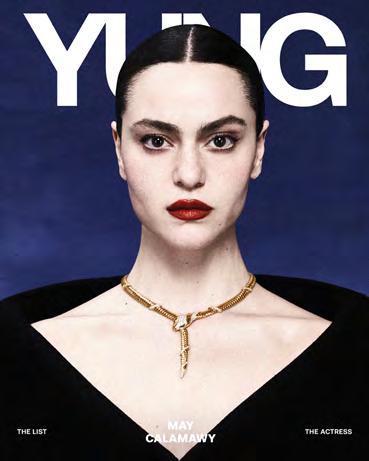
My favourite cover issue #10
My favourite cover was May Calamawy and it’s for a very personal reason, because I got to go interview her on set and saw some of the photoshoot.

Louis Parks
Senior Editor

Menna Shanab Writer
My favourite cover issue #06
It was the first time the Sudanese scene was spotlighted like that, and witnessing the impact was surreal. During the war, with an album three years in the making, we shifted the creative to match the story—marking a major turning point for Soulja and showing how powerful media can be in amplifying a voice.
My favourite cover story issue #08
I love this interview with Kira Yaghnam. She poured out her soul and her passion and enthusiasm for her craft shone through in everything she said.

Dara Hamarneh Editorial Content Assistant
My favourite cover issue #04
It looks like a painting was photographed — nostalgic and intentional. It’s everything YUNG is about; rooted in memory, but undeniably fresh.
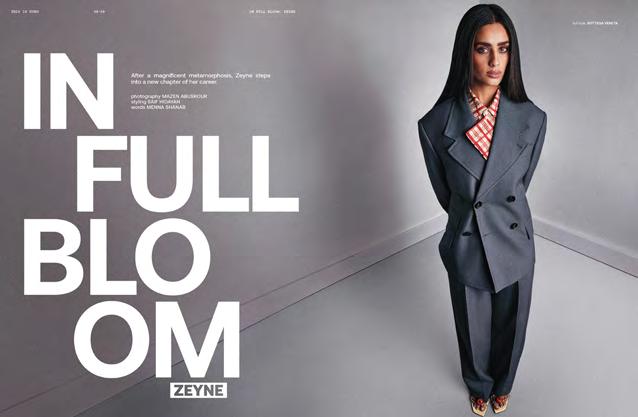
My favourite cover story issue #10
I love this cover story because it reflects how far both YUNG and Zeyne have come since her first cover story—the evolution of the magazine, her voice and art form, and the community around both.
We asked our readers to choose some of their favourite covers and they didn’t disappoint!
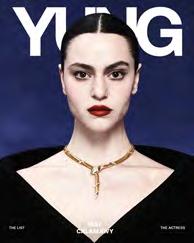

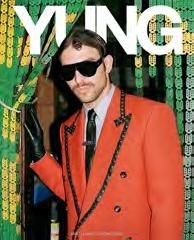
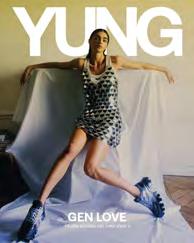


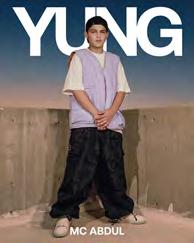


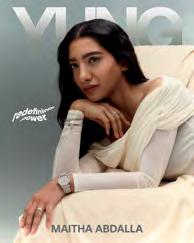


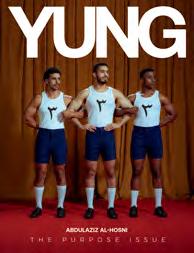

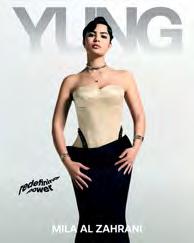
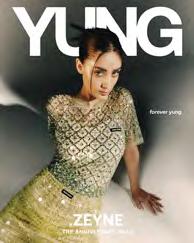

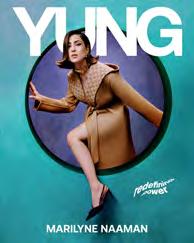
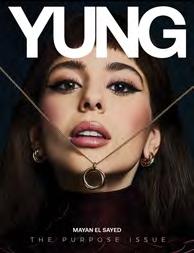


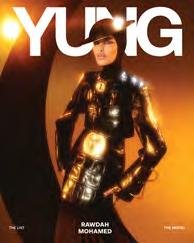
words
Yannis Davy Guibinga sees photography as a language—one that reclaims narratives and reshapes perspectives. Born in Libreville, Gabon, and now based in Montreal, he uses his lens to document the evolving identities of Africans and the diaspora, capturing stories that refuse to be simplified. His striking compositions and bold use of colour have led to collaborations with Apple, Google, and Adobe, as well as features at Art Basel and the BET Awards. His artwork for The Highs & the Lows by Chance the Rapper, displayed in Times Square and on The Tonight Show Starring Jimmy Fallon, cemented his influence on the global stage. Whether behind the camera or on a TED Talk stage, Guibinga is shaping how the world sees Africa—on his own terms.
What first sparked your interest in photography, and how did you develop your signature style?
My interest in photography began during my teenage years in Libreville, Gabon. At 17, I started capturing portraits of friends using my phone, inspired by young French photographers like Alice Kong and Théo Gosselin, who created professional-grade images with minimal equipment. This early experimentation laid the foundation for my distinctive style, characterized by bold contrasts, rich textures, and vibrant colours reminiscent of fashion editorials and theatrical design.
Your work captures a new generation of Africans embracing their identities. What drew you to this specific narrative?
I believe that relocating from Libreville to Canada significantly influenced my artistic perspective. This geographical and cultural transition heightened my awareness of African identities and the diaspora, fueling my desire to showcase the diversity and richness of African experiences through my lens.
Growing up in Libreville and now being based in Montreal, how has this duality influenced your perspective as an artist?
This duality has provided me with a unique vantage point, allowing me to juxtapose my African heritage with my experiences in North America. I believe that this blend of cultural influences enriches my work, enabling me to create art that resonates with a global audience while remaining rooted in African traditions.
Are there any photographers, artists, or movements that have significantly shaped your creative approach?
My work is influenced by my early fascination with superhero origin stories and Greek mythology, which has evolved into a commitment to amplifying African narratives in the global imagination. I draw inspiration from traditional African aesthetic elements, such as the different kinds of headwraps and body paints that exist across the continent, and I’m influenced by the experimental stage designs of American director Robert Wilson as well as the works of artists such as Lina Iris Viktor and the Brazilian photographing duo MAR+VIN. This blend of influences informs my composite techniques and the creation of vibrant, otherworldly backdrops that frame my subjects.
Your portraits serve as a powerful counter-narrative to Western cultural imperialism. How do you approach storytelling in your work?
In my storytelling, I aim to challenge stereotypes and preconceived notions about African identities. I seek to highlight the commonalities of human experience while celebrating the unique expressions found within African cultures by exploring universal themes through an African lens.
What are some common misconceptions about African identity that you aim to challenge through your work?
I try to address misconceptions about African identity, striving to present a nuanced and authentic portrayal that counters the monolithic narratives. My portraits celebrate the diversity and complexity of African experiences, challenging reductive stereotypes and offering a more comprehensive understanding of the continent’s cultural landscape.
You’ve collaborated with global brands like Apple and Adobe. How do you navigate commercial work while staying true to your artistic voice?
Collaborations with global brands have allowed me to expand my platform, allowing me to reach a broader audience while maintaining my artistic integrity. I try to approach these partnerships with a commitment to authenticity, ensuring that my creative voice remains at the forefront of any commercial endeavor.
From giving a TED Talk to exhibiting at Art Basel, what has been the most defining moment of your career so far?
Reflecting on my career, I would cite my collaboration with Chance the Rapper on the artwork for “The Highs & the Lows” as a defining moment. Seeing my piece displayed in prominent venues like Times Square and featured on platforms such as The Tonight Show Starring Jimmy Fallon underscored the impact of my work and reinforced my mission to elevate African art and African images on a more global stage.
If you could capture a single moment in time—past, present, or future—what would it be and why?
I think I would want to photograph the very first sunset. I have always been fascinated by myths and legends and I have always wondered about the first sunset and the beings who were able to witness it. This interest shows up in many of my works such as “Tales of the First Sunrise,” where I reimagine the origin of the world through a blend of Renaissance painting aesthetics and traditional African sculpture compositions, depicting gods and humans witnessing the dawn of time.
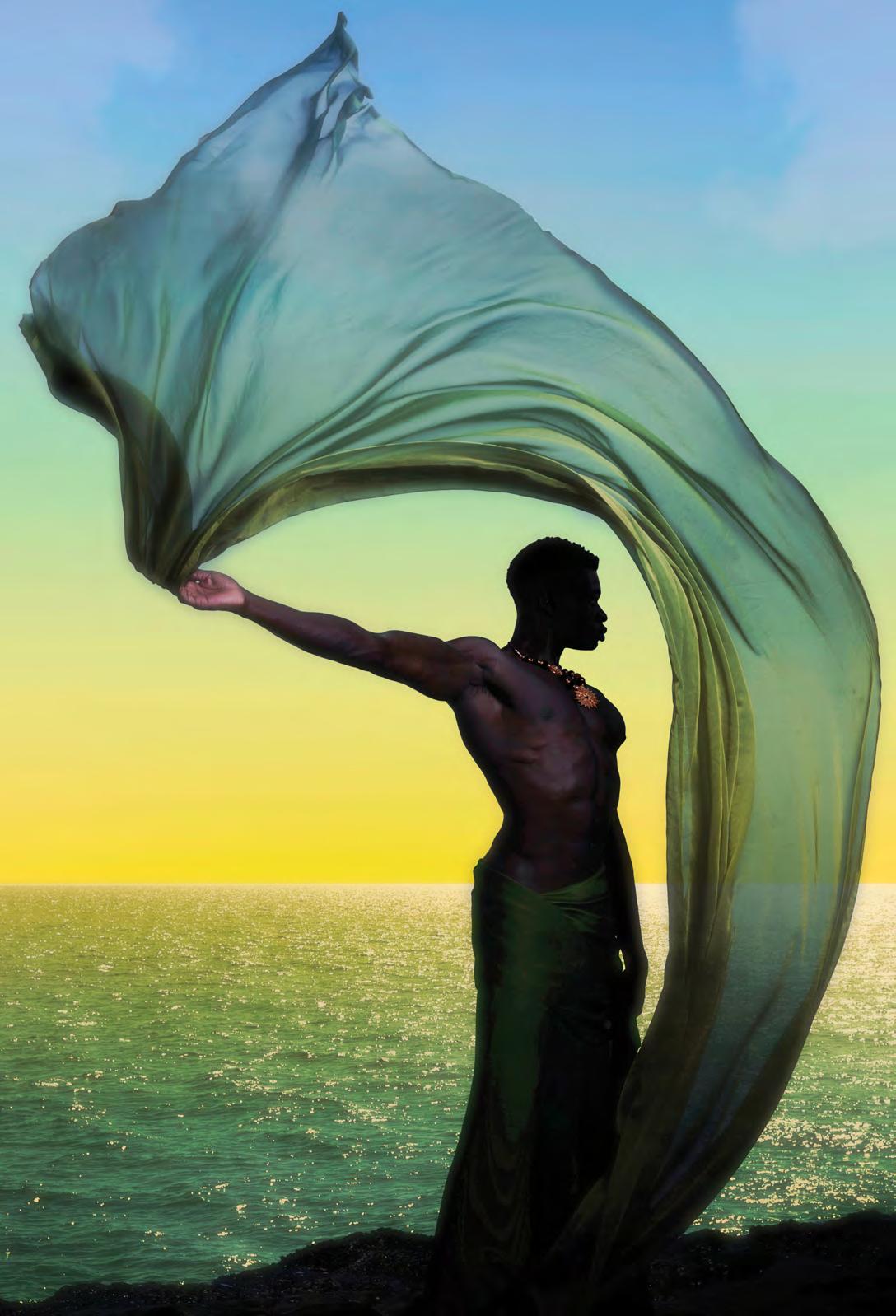



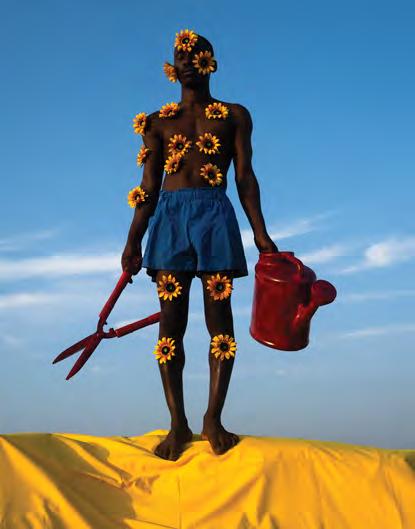
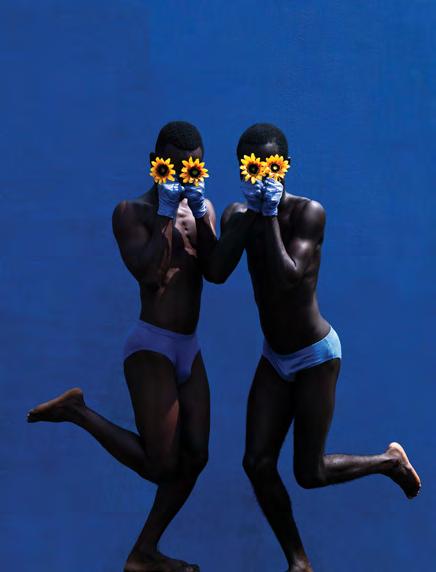


Accra-based photographer Nana Yaw Oduro doesn’t just capture images—he orchestrates emotions. Blending fiction with personal narratives, he transforms everyday scenes into poetic self-portraits, using colour, space, and carefully chosen subjects to tell deeply personal stories. His compositions exist in a dreamlike in-between—rooted in reality yet untethered from time or place. Whether bold and vibrant or stark in monochrome, his work thrives on instinct, curiosity, and an unfiltered imagination. With international recognition and a growing list of accolades, Oduro continues to redefine photography through his lens, proving that inspiration is everywhere.
Your photographic journey began in 2017, shortly after graduating from the University of Ghana. What sparked your interest in photography, and how has your approach to the craft evolved since then?
Growing up, I always felt I had so much to express. It was predominantly in a form of poetry when I found a voice to share my feelings. I decided to make it more visual and that’s when I fell on photography because I believed it had all the elements to allow me to create as close to the ideas I had as possible over all other art media. Truth is, even during my university days I was creating with the little time I could get, though not as much.
My approach to my craft hasn’t changed much since then. I’d say I’ve grown more intentional and dedicated to the craft so I’m able to capture emotions the closest to how I actually feel them.
Your work features fictional self-portraits, with models portraying biographical roles. How do you craft emotional narratives in your photography, and what’s your process for bringing these stories to life?
I always say I would love to photograph myself but that’s not really feasible so to get and capture the best result, I shoot a lot of close people because I believe they are the ones that best look like me, have similar or shared experiences as me and may understand the vision well. Also it has got to do with comfort and connection. I just allow them to be themselves without so much interference because as I seek to capture myself through them, I capture THEM as well. I see myself more in them than I would in a stranger. With close people, family and friends, it’s not too much work for them to understand the moments and emotions I seek to get. Not to say I don’t shoot strangers at all.
How do you choose your settings, and what significance do they hold in conveying the stories you wish to tell?
Scenery is very important to me because at the core of my practice, I’m expressing my experiences and my set adds to the portrayal of that. Some of my ideas even come from
chancing upon a scene first. So for my practice, choosing or building a set is very crucial because they add so much to conveying the message I seek to share with the image. This takes two forms. Sometimes I find the perfect scene and in other cases, I create the set by inviting a few additional props to fit what I want and create the perfect scene for the idea.
As a photographer based in Accra, how does your environment influence your creative process and the stories you choose to tell through your images? My environment, I believe has had a massive impact on me because I shoot to express myself, how I feel. My experiences and everything I am and know, I think has been shaped by my surroundings. The way of life of the people, the way I was brought up, the colourful sceneries, that I have grown to see, consume, hear, has impacted and shaped everything I am and embody.
Can you share any memorable experiences or moments from your photographic journey that have had a significant impact on your artistic vision or approach? Absolutely. I would say two experiences. With the first not being visual, but writing. The poet Charles Bukowski; discovering his whole artistry gave me absolute confidence because he was unconventional, which taught me to kill the idea that art is supposed to be a certain kind of way, but [to] go all the way to create what I feel and want to express. And the last being very recent. A work I created in Paris for COTY which was a new experience for me that challenged my capabilities because I had to do more practical work than usual.
What’s the most unusual or unexpected location you’ve ever taken a photograph in?
That would be a body of water covered with beautiful common duckweed believed to be a habitat for some wild animals. I needed to shoot there because the scene had everything to make my idea whole and also the fact that it was a perfect natural set.
Nada Baraka’s paintings pulse with movement, emotion, and a sense of constant transformation. The Egyptian visual artist, who earned her BA from the American University in Cairo and an MA from Central Saint Martins in London, crafts works that hover between abstraction and surrealism. Her art is a reflection of flux—memories and emotions erupt onto the canvas in layers of bold colour and intricate forms. Baraka’s process is both intentional and instinctive, challenging conventional narratives and inviting viewers to sit with uncertainty, uncover hidden meanings, and experience the raw, unfiltered energy that defines her work.
How did your journey into visual art begin, and what drew you to painting as your primary medium?
My journey into visual art began in university when I was minoring in it. As I took more courses, I realized this was my true passion. Although I experimented with various mediums, painting stood out as my favourite— it brought me joy, and I could lose track of time while immersed in it. What truly drew me to visual arts was the unmatched power of creating something from nothing with each project.
Your work exists in a state of flux between abstraction and surrealism—what inspires this balance, and how do you navigate it?
My work operates between the conscious and subconscious. Finding balance can be challenging, but I start with research and inspiration, which provides a foundation. From there, I let my imagination guide me. However, conscious decisions, such as colour choices or specific objects, are essential to give the work context.
Can you tell us about your creative process? How do you approach a blank canvas?
My process starts with a reference or concept. I build layers on the canvas, allowing an unintentional landscape to emerge. Then, I gather inspiration from the references on my studio wall, almost like creating a collage.
Your paintings often explore the idea of eruption. What does this concept mean to you, and how does it manifest in your work?
Eruption represents how our bodies store memories and experiences, creating a hidden version of ourselves that builds up until it bursts. This concept is important to me because life is constantly changing and evolving—my work reflects that endless flux, never fully finished, always in motion.
How has your time studying in Cairo and London influenced your artistic perspective and approach?
Studying in Cairo instilled in me strength, depth, and the ability to thrive under pressure, while embracing chaos. It shaped who I am today. London, on the other hand, refined me as a professional, offering the privilege of working alongside artists from around the world. This broadened my understanding of the international art scene and deepened my appreciation for the field.
How do you want people to feel when they engage with your paintings?
I want viewers to take their time with my work, letting it speak to them. Even if it’s just one part of the piece, I hope they can connect with it and feel something. It’s about them experiencing the world I’ve created on the canvas, feeling the emotions, the contradictions, and making their own personal connection with my work.
How do you know when a painting is finished, especially when working in a fluid and evolving style?
It’s all about trusting your instincts. Sometimes I overwork a painting and get stuck in a loop, but I’ve learned there’s no formula. The key is balancing flow with context, letting the piece evolve while staying grounded in what it’s trying to say.
How do you approach colour in your paintings—do you plan it intentionally, or does it come naturally during the process? My approach to colour varies—some works are carefully planned, while others evolve naturally. For example, in my upcoming show at Tabari Artspace, I’m exploring postcards from my late grandfather’s archives. I draw on the colours from those images to create a new relationship with the text, context, and my fragmented memories of my grandfather.
If your art had a secret message hidden in every piece, what would you want only the most observant viewers to discover?
I’d want viewers to sit with the work and uncover their own hidden messages—like a puzzle I don’t have all the answers to. But I hope they feel something, whether it’s unease, joy, tension, or warmth, because they’re all there.
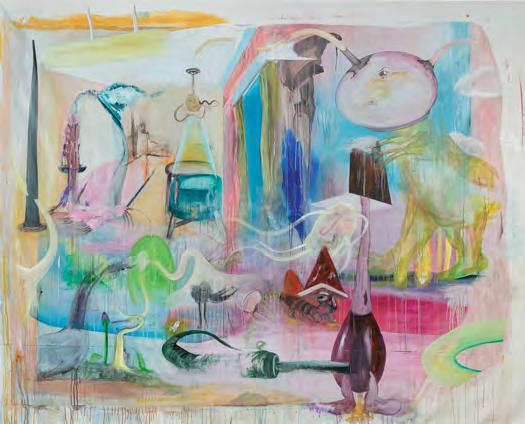



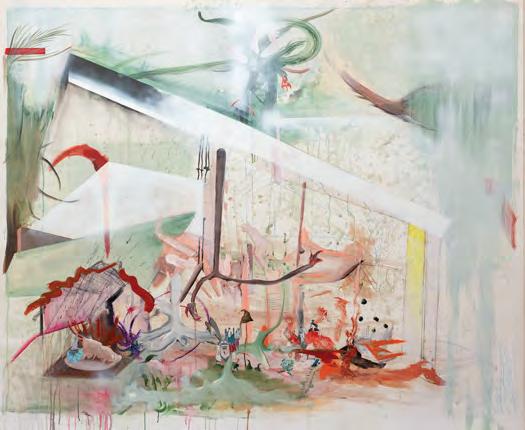


Design studio KASA LIN, founded by Syrian-Bulgarian creative director Lina Kassab, embodies her diverse influences and design philosophy. Growing up between Dubai and London and trained in Interior and Spatial Design, Kassab views objects as vessels of memory, carrying stories shaped by time and touch. KASA LIN rejects fleeting trends, focusing on enduring eyewear, jewellery, and homeware. Each piece encourages a deep connection, shifting from passive consumption to intentional collecting.
What inspired you to launch KASA LIN, and how did your journey in design begin?
KASA LIN was founded on my belief that fashion and accessories are investments in personal stories and creative expression. It combines my passion for uncovering unique, expressive pieces, including my vintage eyewear collection, with a desire to challenge the fast-paced, trend-driven world of fashion. My design journey was inspired by my father’s background in jewellery—through him, I began designing and producing my own jewellery pieces. A conversation about an earring I designed led to the suggestion of starting my own brand. This passion was further nurtured during my BA in Interior and Spatial Design, where I learned the importance of thoughtful, intentional design. During my Master’s degree, I was introduced to the environmental impact of the fashion industry, which profoundly shocked me and ignited my drive to create a design house with timeless, intentional pieces built to last.
KASA LIN focuses on creating investment pieces rather than trend-driven products. How do you encourage consumers to adopt this mindset?
Our approach blends creative freedom with modular designs centred on tactility that cultivates an interactive engagement with consumers. The modularity allows for personalisation, ensuring that each customer feels deeply connected to their purchase. This interactive relationship extends beyond the initial transaction and fosters emotional investment in the product. Our philosophy encourages a mindset shift— products are not meant to be disposed of after one season, but cherished over time. Our designs empower customers to be a part of the process, allowing them to personalise and update their pieces, ensuring longevity and relevance.
Sustainability and longevity are core to your brand. What does “circular design” mean to you, and how do you implement it?
Circular design is a philosophy that guides every aspect of our brand. From the selection of materials to the manufacturing process, we aim to create products that have a lasting impact—not just in their form but in their lifecycle. The idea is to craft pieces that not only withstand the test of time but evolve with their owners. Our limited-edition pieces are designed to be cherished and passed down, encouraging a lasting connection with the product. By offering updates and add-ons, we enable customers to renew and customise their pieces, extending their life and avoiding unnecessary waste.
How do you balance functionality and artistic expression in your designs?
Each of our designs undergoes multiple prototyping stages to strike the perfect balance between function and form. We focus on precision, using the highest quality materials to ensure that our products are not only aesthetically compelling but also comfortable and durable. The artistry lies in the details— we prioritise craftsmanship and innovation to create pieces that remain timeless while meeting the needs of modern-day life. Every design is the result of careful consideration and a commitment to both practicality and beauty.
You describe KASA LIN as multidisciplinary. How do eyewear, jewellery, and homeware connect within your brand’s vision?
KASA LIN extends beyond luxury accessories; it’s about creating a cohesive narrative across product categories, including eyewear, jewellery, and homeware. These categories all share a commitment to design excellence, functionality, and the use of high-quality materials. The luxury accessory category naturally holds a higher investment mindset from a customer standpoint, making it more adaptive to our philosophy. The items we design are built to endure over time, requiring minimal upkeep and providing long-term value . This mindset extends to our Curios collection, our collector’s corner of curated vintage objects, reinforcing our belief in the longevity of well-crafted pieces and paving the way for future homeware offerings.
Can you walk us through the creative process behind one of your most iconic pieces?
Our debut collection, Fragments, was inspired by the idea of personal history and the fragments of life that come together to form a meaningful whole. As a vintage eyewear collector, I drew inspiration from the 90s and the craftsmanship of past collections. The process began with mood boards and freehand sketches, which were then transformed into technical designs. We visited a workshop in Barcelona, where we reviewed over 3,000 pairs of vintage sunglasses to identify construction details we wanted to incorporate. The result is a collection that celebrates craftsmanship with visible screws and other design elements that highlight its technical complexity.
How do you engage with your community of collectors and curators to shape the brand’s direction?
We engage with our community through a multi-channel approach, sharing the stories behind our designs and processes to create deeper connections with the brand. Through exclusive events, behind-the-scenes content, and curated newsletters, we offer insights into the creative journey of KASA LIN. We see our customers as valued members of a community based on trust, transparency, and shared values—empowering them to be part of a narrative that resonates with their own principles.
Sharon Rose is a Palestinian multidisciplinary expressionist artist exploring humanness in an increasingly automated world. Blending performance, fashion, installation, sound, poetry, and historical inquiry, she creates immersive experiences that challenge societal norms and spark radical thought. Her work dismantles mental and material barriers, fostering wonder and play while reshaping perceptions of the tangible world. Collaboration is central to her practice, as she engages with fellow artists to expand philosophical inquiries. Through these collective explorations, Rose transforms art into a dialogue—one that continuously evolves, inviting audiences to rethink, reimagine, and actively participate in the ever-unfolding human experience.
Your heritage is a mix of Palestinian, Irish, and Swedish roots. How do these different cultural influences manifest in your artistic and fashion pursuits?
My mother is Palestinian, and my father was born in the United States (my grandfather was first generation from Sweden, while my grandmother second generation Irish, from Northern Ireland.) Our extended family is mixed, it’s a melting pot. Being around my family, there was always something to learn. The world is diverse, and makes a fun family. That’s the kind of attitude of my art and my life. And art is just an expression, like receiving good news.

How has growing up in Haifa shaped your work? There was always a felt instability, at times I wished my mother, God bless her soul, had agreed to go to America. Growing up, I deeply appreciate her decision to stay. Whether they do or don’t, can or can’t: everyone talks about Hijra, a hot topic of discussion. I remember thinking as a kid- “What’s there to do with my life?” We don’t have self determination.
I didn’t know anything about art, or performance but I had this deep curiosity for meaningfulness. I let the city; its architectural landscape, its dynamics, its segregation, and the way it’s used as a gaslighting landmark for coexistence, all speak to me…
Haifa is one of the most beautiful places in the world. Waking up to look at the view, will I see Jabal El Sheikh today? Will I get to see bits of Lebanon today? The sound of the birds, the sea, it’s smell. I have not swam in the water for more than a year now. All I can think about is Gaza. the sounds of the jets. And in the background, always having that conversation, whether to stay, or leave my beloved Haifa for a bit? Who shall take my place? What is my role? A responsibility that Palestinians put on themselves. I never felt for a long time that I should leave. There in the background too, I thought: How do I want to make who I am?
Your work spans performance theory, storytelling, fashion, and dance. How do these disciplines intersect in your creative process?
Fashion evolved as a performance, a communication. Like a sculpture, so electrified with meaning and expression, the past, and the future. It’s a type of nonverbal communication that goes beyond language. I cultivate the essence that carries this dying flesh. I FASHION (VERB) THE FUTURE, it’s my philosophy. Playing on the magical and absurd of existence by merging these disciplines/ interests that really have always informed one another.
In pieces like Spade and Classical Myths, you use performance to challenge systems of power. What draws you to performance as a medium for resistance?
I wanted ‘SPADE’ to challenge the constraints on expression in our society. Occupation leaks into our self perception and how we treat each other. Don’t laugh too much, don’t be loud, stay in your lane, don’t grab attention. To break rules one must break these patterns within themselves. My sister built a cement shirt-like structure on me that weighed me down as soon as she dressed me. I broke off and ripped it apart. I emerged out of the constraints, and opened up to the audience. It was a challenge for me to do that, I faced the police in my head. In time and space, I took on the embodiment of reclaiming MY expressions, buried under the architecture of trained bodies. I captured drilling and excavating oneself. What’s to be underneath? What is the foundation? What is the beginning ? Reclaimed sovereignty / agency, break everything that isnt real.

Classical myths was a live performance, This time in London. Who am I talking to? The performance wanted to shed light on the hypocrisy of human affairs.
I created a ‘tent’-like installation with blind spots. I attempt to perform the broken communication between the marginalized and those free to roam the exhibition space. Although ruling society covers the marginalized with subhuman stereotypes, they are still moving and communicating. Do you care to listen? To look into my eyes?
This installation also didn’t want to belong, didn’t want to merge into the aesthetics of the white cube.
I wanted to highlight that solidarity is first acknowledging the absurd dynamic between the charitable, passive viewer- and the forced into a web of marginalization, stuck.
This installation could represent the urban slums of Rio, Palestine, like Al Naqab… the streets of Paris or New York filled with poverty drenched in the fifth of the upper classes…
You never intended to enter the fashion world—what changed, and how do you navigate fashion as an extension of your artistic expression?
Everything started from fashion. Fashion was my gateway into art, into philosophy. I used to do photoshoots with my friends, make movies, shows and video clips. I started from a static image, and slowly it developed into expressive movement, dance, sound and more complex compositions of expression. My career.
You explore fluidity and meaning in your work. What does “fluidity” mean to you in the context of identity, art, and resistance?
I don’t live in the boundaries of the flesh, or limitations of identity or culture. Our inner world keeps expanding. Ideas are so fragile but can change the world. Revolution is an idea.
Everything talks to me. Poetry is all around. The concept of fluidity helped me look beyond my circumstance. Living in ’48, I was isolated and things gatekept. I feel so blessed to trust God and not my limited knowledge!! To ease my heart, knowing I am everywhere and nowhere. I am where I need to be and God has a plan for me. I resist this world because it tells me who I am, but I know who I am, and most importantly God knows who I am. No more mental clutter!! This world is a SHAM.
Palestinian architect Riyad Joucka explores the intersection of technology, tradition, and experimentation. As the founder of MEAN* (Middle East Architecture Network), he pushes the boundaries of computational design while staying rooted in regional narratives. His work redefines the built environment, blending digital fabrication with cultural identity. With experience spanning New York, Hong Kong, and Dubai, Joucka continues to challenge architectural possibilities. For him, technology isn’t just a tool—it’s a catalyst for creativity, shaping spaces that feel both futuristic and deeply connected to heritage.
Coming from a family of architects and entrepreneurs, how did that shape your perspective on architecture from an early age? Interesting that you know that! Both of my parents met in architecture school, and my maternal grandparents met at the Bellas Artes in Rome. My father has been running his architecture practice in Amman, Jordan, for nearly 40 years, and I used to visit sites with him as a kid. We would also paint together in his studio. My grandfather was a celebrated painter, sculptor, and artist. Visiting my grandmother’s house felt like stepping into an archive of his successes—an intimidating legacy to follow, but I still tried to replicate his paintings.
This upbringing undoubtedly shaped my path in architecture, allowing me to see beyond the conformity of the built environment around us. It pushed me to carve out my own vision. My siblings have also been influenced in similar ways—my brother, Hashem, is an incredible digital artist, and my sister, Hind, is an art journalist running a successful platform out of Amman.
What drew you to the intersection of computation, material research, and design?
During my undergraduate studies, I felt frustrated with how architecture was taught—it often leaned toward a conventional, old-school approach. However, I had always been fascinated by computers from an early age. After graduating, I began experimenting with digital fabrication and computational design, realizing that whenever someone told me my idea “wouldn’t work,” there was usually a way to make it happen—if I understood materials, coding, and how to navigate the process.
You founded MEAN* as a community blending architecture, technology, and material research. What was your vision when launching it, and how has it evolved?
Yes! The idea behind MEAN*was to create a cloud-based interdisciplinary platform that brings specialists together to push the boundaries of architecture in the region. What started as a research initiative has now evolved into a multifaceted architecture studio, with a portfolio spanning architectural research, product design, interiors, and built projects.
What are some of the most groundbreaking technologies you’ve incorporated into your designs?
We work extensively with 3D printing, Virtual Reality (VR), and Augmented Reality (AR). Recently, we’ve also been experimenting with AI, which holds a lot of potential in streamlining workflows and accelerating design processes.

I later joined the Emergent Technologies and Design (EmTech) program at the Architectural Association (AA), where I refined this focus and developed a new love for architecture. While theory and skill remain essential, technology has become a powerful tool to help materialize avant-garde ideas.
How do you balance the artistic and technical aspects of architecture in your projects?
The tools available to designers today are like paintbrushes—the more skilled you are with them, the more effectively you can express creativity. While architecture is bound by client briefs, timelines, and budgets, technology allows us to maximize impact within these constraints. It’s about using innovation to enhance both form and function, without compromising artistic vision.
How do you see artificial intelligence and machine learning influencing architecture in the next decade?
I once came across a quote by writer Joanna Maciejewska that perfectly sums up my perspective: “I want AI to do my laundry and dishes so that I can do art and writing, not for AI to do my art and writing so I can do my laundry and dishes.”
Right now, AI lacks the human sensibility needed to create with warmth and intent. However, it’s an excellent tool for efficiency. I think we’ll soon see a clear distinction between “AI-generated art” and “art empowered by AI.”
Dubai has become a hub for architectural innovation. How has the city influenced your work and creative process?
Dubai has been my home for over seven years now. It’s a diverse, multicultural city with incredible energy and an appetite for new ideas. More importantly, it serves as a global launchpad, allowing a Middle Eastern architectural voice to reach the world.
Beyond running MEAN* out of Dubai Design District (D3) with a portfolio spanning the Middle East, North America and Europe, I also serve as a Research Fellow in Practice and Adjunct Assistant Professor at Zayed University. Dubai has given me the space to evolve and thrive while staying true to my passion.
If you could design a dream project anywhere in the world, with no constraints, what would it be and why?
As a proud Palestinian, my dream project would be The Museum of Innovation and Technology in Nablus—for obvious reasons :)

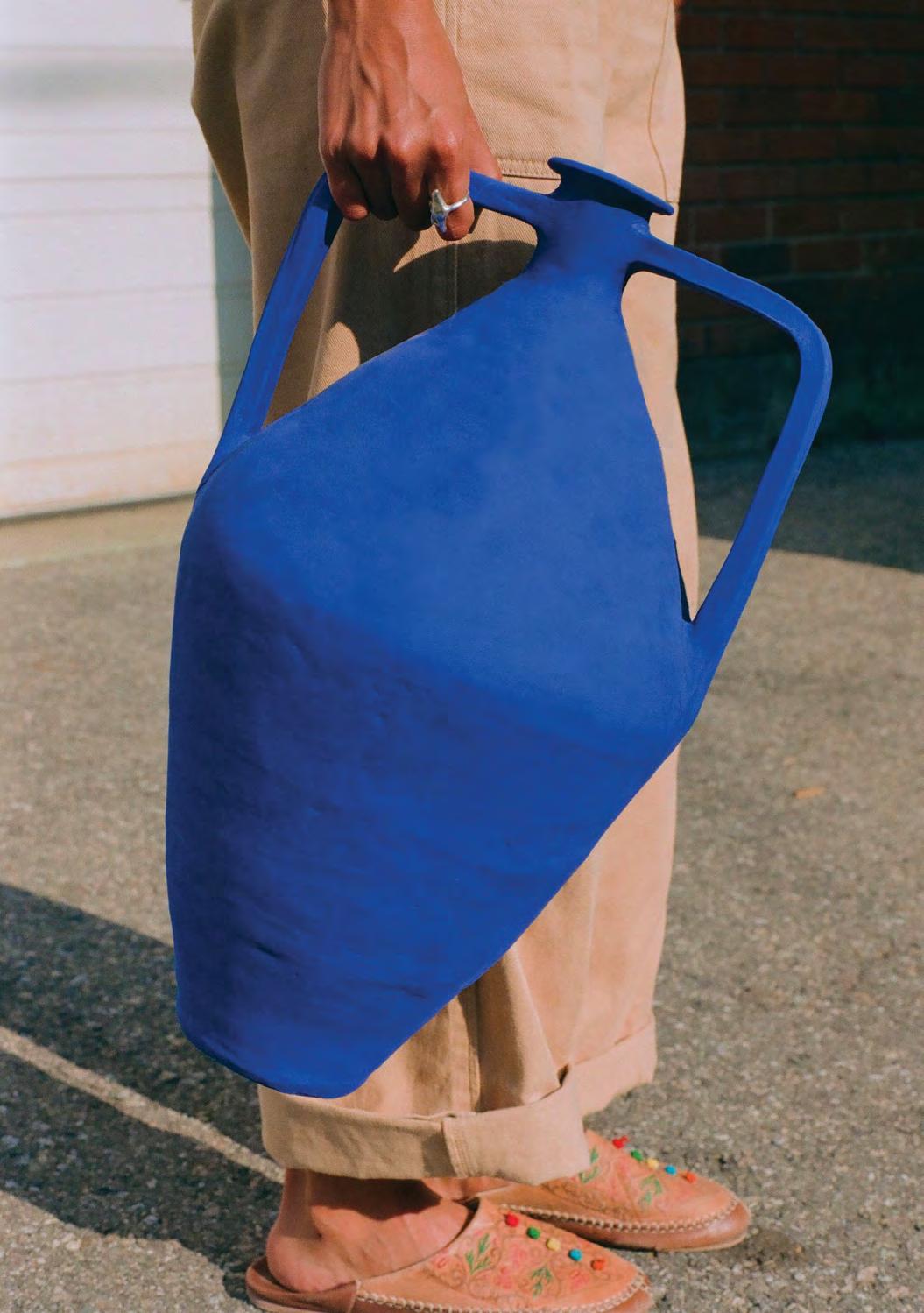
For Tamara “Solem” Al-Issa, clay is more than just a material; it’s a portal. Based in Toronto, the Syrian-Filipina sculptor, moulds time, memory, and longing into tangible form, drawing from the rich architectural and cultural tapestries of SWANA and Southeast Asia. Her work both preserves and reimagines history, blending tradition with contemporary expression. Through her hands, clay becomes more than earth—it’s a conversation, a bridge between places, eras, and emotions, allowing her to exist in multiple spaces at once, preserving both time and feeling.
What first drew you to sculpture as a medium, and how did your artistic journey begin?
I had always been creative as far as I can remember, with painting and writing music as my first outlets. About nine years ago, I tried a drop-in pottery class to distract me from the stress of university. I went in with the intention to pick up a new hobby, and it quickly became an obsession. I practiced out of many different studios, did energy exchanges for studio time, and then finally opened my first studio in 2021 where I began teaching wheel-throwing and hand-building. Once selling vases started taking off, I honed in on my own practice and style.
Being Syrian and Filipina, how do these two cultural backgrounds shape your work and artistic identity?
Pottery is a significant characteristic of both sides of my cultural backgrounds. In the Philippines, clay pots are still used to make specific dishes and are very common in Filipino households. In the Middle East, pottery reflects divine order and beauty, seen in intricate patterns and lustres on Islamic wares. Growing up, I always felt attracted to pottery because of how archaic yet timeless it is. Pottery helped me explore my cultural heritage, and still continues to do so.
Your work explores architecture and practices from SWANA and Southeast Asia. What specific memories or places have influenced your art the most?
I was born in Jeddah, Saudi Arabia, and I remember being so touched by the older, traditional architecture in AlBalad- specifically the pops of bright colours, intricate patterns, and the raw,
clay-like textures of the buildings. Living in Saudi, I was always surrounded by the colour blue as well. It is a significant colour in Islam and is thought to protect against evil. In the Philippines, pots are everywhere! Mostly functionally, which fascinated me as a child since pottery there has really upheld its original purpose. The methods of making them are also the same. This influenced me to continue using traditional methods, even down to using a manual potter’s wheel.
Your work revolves around the idea of preserving time. How do you translate that concept into physical forms?
Pottery itself is a preservation of time. Ceramics have withstood the elements, natural disasters and war, preserving the nuances of humanity and recording them for future generations. Pottery will continue to outlast us, too. I have always been interested in this medium because of this ancient yet timeless quality. Although I do consider my recent work to be contemporary, I have been enjoying combining such traditional, artifactual shapes with a striking blue that almost seems two-dimensional and imperceptible: an homage to the mystical qualities of turquoise and the widely misunderstood and heavily Orientalized blue Raqqa ceramics from Syria.
You’ve spoken about yearning as a way to bridge the metaphysical gap between the self and home. How does your work express this idea?
Yearning to be close to the Motherland has always manifested in a very visual/ tactile way for me. I recall architecture, colours and textures and connect profound feelings to those senses. I
intend to draw from these memories to create vases that resemble elements of the MENA region. I used to be much more direct with imagery in my earlier work, inscribing illustrations from photos that I or my family have taken in the region.
How does nostalgia influence your creative process? Do you intentionally seek out certain memories, or do they emerge organically through your work?
I think it’s a mix of both. I usually lead with a curiosity, sifting through memories and then researching certain elements of these memories further. I also think that my “inspiration” manifests very subconsciously.
Blue is a dominant colour in your work. What does it represent to you?
Everybody has their own mysterious, yet profound relationship with this particular blue. I think this mysterious connection keeps me curious about this blue. When I was young, I was always surrounded by blue due to its prominence in household/public decor. It also simply represents the Red Sea to me, where I spent most of my time as a child.
Your sculptures often have an organic, almost ancient quality to them. Are there any historical or cultural artifacts that inspire your work?
All ancient pottery inspires my work, specifically the classical “pitcher” or “amphora” shapes. Raqqa wares are something I often come back to. They are a distinct style of vases that were made during the Ayyubid dynasty in Syria characterized by their intricate inscriptions and bright turquoise glaze.
Ishaq Madan is a Bahraini photographer whose work drifts between the streets and the subconscious, capturing the raw beauty of imperfection. A self-taught artist, his lens gravitates toward the human condition—its stillness, its chaos, its fleeting emotions. Madan’s photography is driven by a desire to bridge Bahrain with the wider world, using imagery as a universal language. Rejecting perfection, he embraces experimentation—playing with framing, perspective, and print-based storytelling to create compelling, unconventional narratives. His work has been exhibited at MoMA, the Bahrain Authority for Culture & Antiquities, and the Sharjah Art Foundation, each marking a new chapter in his evolving visual language.
As a self-taught photographer, what first drew you to the medium, and how did you develop your craft over time?
I believe the seed was planted when I was a kid as I used to take photos during family trips, more so, I have always been curious and observant, the perfect ingredients for honing the craft.
Your work often explores the human condition. What initially sparked your interest in this theme?
It comes down to understanding my own existence in this world and the similar experiences we collectively share, as life is a journey. I suppose I am trying to find answers through these experiences.
How does your Bahraini heritage influence your artistic vision and storytelling?
In an ever evolving world and social media’s tendency to create a tunnel narrative heavily shaped by Orientalism towards our region, it’s important as artists to take control of misinformation and shape it to highlight the beauty and intricacy of our heritage beyond the boxes we have been placed in.
You aim to bridge the gap between Bahrain and the world through visual stories. What do you think is the most misunderstood aspect of Bahraini culture that you try to capture?
While abroad I have had my share of experiences with ignorant or misguided people who tend to attribute to us oil and camels as their only understanding of our existence. Whereas the culture is rich with a number of elements included in UNESCO’s cultural heritage list that aims to preserve their significance.
Street photography requires a keen eye for the fleeting moment. How do you decide what to capture, and what makes an image compelling to you?
The beautiful thing about it is that it’s a cumulative process of everything I consume. That being said, inspiration from movies, photobooks, or even conversations tends to shape and attract things to me, allowing me to search for things that I can initially only imagine.
Conceptual photography allows for more control and intention— how do you balance that with the spontaneity of street photography? It depends on the visual story I am trying to communicate, the balance is derived from a need to be visually imperfect and, in parallel, tasteful.
What role does emotion play in your photography, and how do you convey it visually?
A bridge between my state of mind and the expressive need to simply release those emotions visually. Looking at my images, colours and how the subject is portrayed plays a key role in revealing my emotional state.
Photography is constantly evolving. How do you challenge yourself to grow and push the boundaries of your work?
I look for ways to express twists visually, seeking imperfections rather than the nuances of perfection often shoved down our throats in this age of social media. These can come in the form of experiments with frames, to simply focusing on publishing printbased content.
If you could experiment with a completely different artistic medium, what would it be and why?
I love music. It has influenced me more often than not, as such I would definitely pick playing the piano, as it grounds you and allows for many forms of expression.
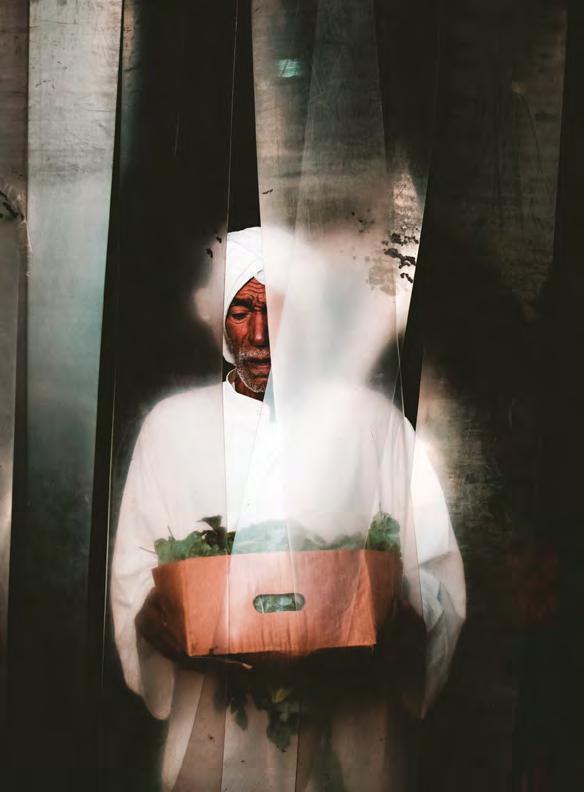
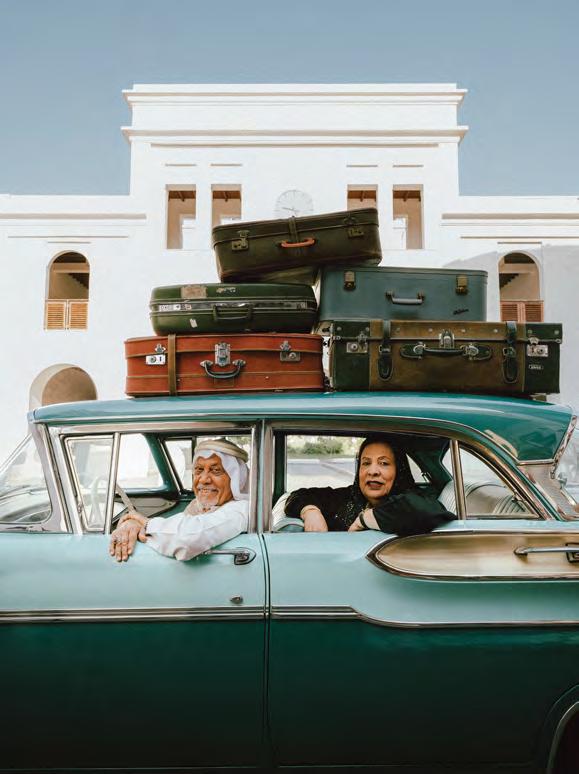




Raised in the vibrant streets of Casablanca, Hamza Lafrouji—known as Psycho Moustache—believes he was destined to hold a camera. Inspired by his uncle, he discovered photography as his true passion, drawn to capturing the raw beauty of Sidi Moumen and Derb Sultan. Starting as a street photographer, he documented simple realities and unfiltered expressions. As people grew wary of the camera, he transitioned to working with models, refining his craft. Now a street fashion photographer, he turns fleeting moments into visual stories.
What first drew you to photography, and when did you realize it was your true passion?
My first real encounter with a camera was during a family trip. My father and uncle always carried film cameras, and I was mesmerized by how an image transformed from a negative to a vibrant photo, eventually becoming part of our family albums. It felt like magic. That moment sparked something in me—it made me realize photography wasn’t just about freezing moments; it was a way of seeing and interpreting the world uniquely. That curiosity grew into a passion that I couldn’t ignore.
You started with street photography and later transitioned to working with models. How did that shift change your creative process?
Street photography, which I started with just my phone, taught me how to observe people—their movements, emotions, and untold stories. It was my introduction to composition and capturing raw, unfiltered moments. Over time, I connected with creatives like Salima Mahraoui, who shared my interest in fashion. Naturally, I transitioned into editorial and fashion photography. Working with a team expanded my creative scope—I discovered how styling, set design, and direction could elevate a concept. Eventually, surrealist portraiture became my signature, allowing me to blend reality with imagination.
Growing up in Sidi Moumen and Derb Sultan, how have these neighbourhoods influenced your artistic vision? Derb Sultan shaped my values and deepened my understanding


of human connection—it taught me the significance of storytelling, community, and raw emotion. Sidi Moumen, on the other hand, carried a different energy, almost like a Moroccan favela, where life was complex yet deeply intertwined. These neighbourhoods made me realize that art can emerge from anywhere. They influenced my framing, pushing me to capture the depth and essence of people and their surroundings.
Props seem to add an extra layer to your storytelling. How do you choose them, and what role do they play in your work? Props are like silent narrators in my work. I choose them based on the mood and emotions I want to evoke. Sometimes, they create contrast; other times, they subtly blend into the scene, adding depth and dimension. Shadows, reflections, or even an everyday object can shift the energy of an image. I love finding beauty in the unexpected, transforming ordinary items into something surreal or symbolic. The smallest detail can completely alter an image’s impact.
Your photography often feels cinematic. Are there any films, artists, or directors that inspire your work? Why? Absolutely. Filmmakers like Alejandro Jodorowsky (The Holy Mountain) and David Lynch (Eraserhead) have profoundly influenced me. Their ability to blend surrealism with deep, symbolic narratives aligns with my approach to photography. Salvador Dalí’s dreamlike distortions inspire my compositions, while Kendrick Lamar’s music videos shape my perspective on movement and storytelling. I strive to infuse my work with the same layered, immersive experience that these artists masterfully create.
What has been the most challenging shoot you’ve worked on in terms of styling and props?
One of my most challenging shoots involved unconventional props that had to feel like they belonged in the environment. The challenge was making surreal elements appear organic rather than forced. Styling played a crucial role—it had to seamlessly connect the fantasy and reality within the frame. Balancing all these elements while maintaining strong composition pushed me to think differently. That experience reminded me that photography isn’t just about capturing images; it’s about weaving together elements that tell a compelling visual story.
If you could create your dream shoot with unlimited resources, what would it look like?
My dream shoot would be set in an otherworldly landscape— somewhere like Iceland, where nature feels almost surreal. I’d love to collaborate with artists like Adele, Nicole Kidman, and Joaquin Phoenix, using Moroccan cultural influences as a foundation. The vision would merge fashion, cinema, and fine art into one seamless experience, making every frame feel like a painting in motion. Every element, from the lighting to the set design, would be meticulously curated to create something timeless and immersive.
If your camera could speak, what do you think it would say about your journey as a photographer?
If my camera could talk, it would tell a story of transformation— from capturing spontaneous street moments to crafting surreal editorials with intricate storytelling. It would speak of growth, endless experimentation, and countless moments of trial and discovery. My camera has been my most trusted companion, helping me refine my vision and redefine my art with every shot. My journey has been one of constant evolution, always pushing the limits to see the world in a new light.
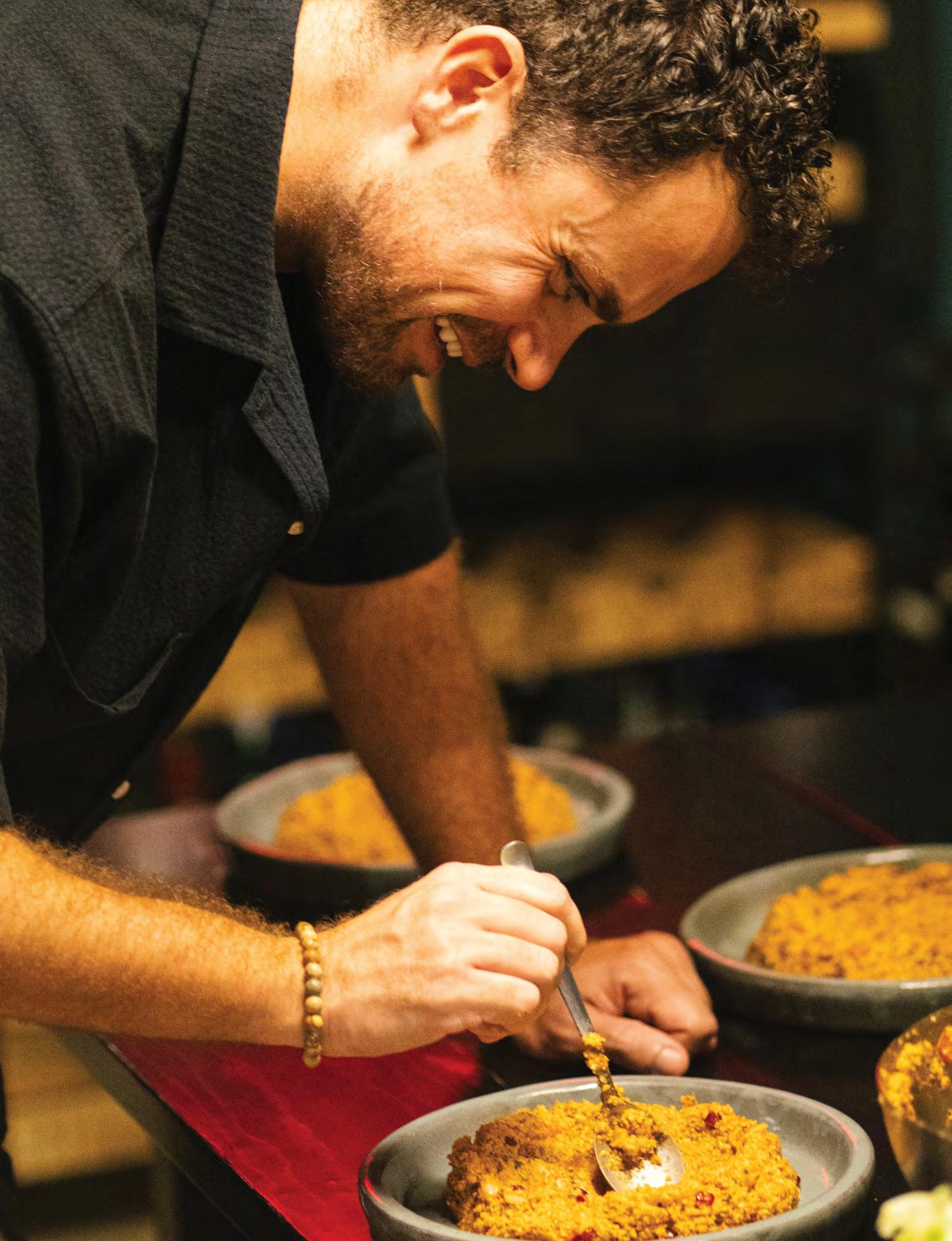
Ahmad Halawa, the chef behind Dubai’s sought-after supper clubs, is redefining Levantine cuisine with a fresh perspective. With no formal training, but an instinctive grasp of flavour, he crafts dishes that balance nostalgia with innovation. Inspired by his Palestinian background, he says food is made with love and precision, Halawa sees cooking as both an art and a form of cultural preservation. His intimate gatherings invite guests to experience Palestine through taste, memory, and community— turning every meal into a homecoming, rich with history, resilience, and a sense of belonging.
You were encouraged to cook from a young age—what are some of your earliest food memories that shaped your passion for cooking?
Creating was always encouraged in our household, I will always remember when me and my older siblings would dabble with random ingredients in the fridge and create dishes for us to munch on when we had free time.
What dish best represents your childhood, and why?
Knafeh! It’s a celebratory dish that always brought me joy and was mostly related to good memories. I love knafeh in all its forms, hot or cold.
How has Nablus influenced the way you think about food and cooking?
People from Nablus have truly mastered the art of creating a rich and diverse array of dishes, both sweet and savoury. We don’t just cook; we pour a lot of love and effort into every dish. When it comes to food, we take it seriously and go the extra mile—whether it’s in the techniques we use or the amount of care we put into each preparation. One thing we’re especially known for is stuffing almost every vegetable you can think of. And it’s not just about what’s common; we use unique and distinctive ingredients like akoub, lakhneh, and ennab, among many others. Such ingredients add depth and character to our food, making Nablus cuisine stand out as something truly special.
Who are some of the biggest culinary influences in your life, both personally and professionally?
I give credit to both my parents, they gave me high standards for ingredients and flavour.
Palestinian cuisine is deeply rooted in tradition and history. How do you balance authenticity with modern innovation in your dishes?
I choose to respect the authenticity of the recipes and presentation, therefore I reinterpret certain recipes by putting mild spins on them without offending the recipes.
Food can be a powerful form of cultural preservation. What role do you see yourself playing in keeping Palestinian culinary traditions alive?
I see myself playing a role in modernizing the experience around Palestinian food by keeping our culinary traditions relevant and appealing to different generations. I do this through adding elements
of lifestyle, music, and even special table setups, while ensuring the food itself remains authentic. By combining tradition with a contemporary atmosphere, I aim to create a cultural experience that resonates with both younger generations and those more familiar with the heritage. It’s about making Palestinian cuisine not just a meal, but a celebration of culture and community.
If you could cook a meal that tells the story of Palestine, what dishes would be on the menu and why?
Maaloubeh! A dish of great history and significance in relation to resistance and victory against many invaders including the crusaders! It And will always be a reminder of who we are.
Your Dubai supper clubs have gained a strong following. What makes the experience so special for guests?
It’s personal, I choose to treat my guests as family, make them feel at home, with the aim to ignite that homey nostalgic feeling through food, music, storytelling and any other touch point of the experience.
Beyond taste, what emotions or messages do you want people to take away from your food?
Beyond just the taste, I want people to walk away from my food with a sense of home and nostalgia—feeling that connection to something familiar and comforting. But most importantly, I want them to feel the resilience and strength that comes with our food. It’s a reminder that our identity is something no one can take away from us. Each dish carries a story of survival, culture, and pride, reflecting the endurance of our people and our traditions, no matter the challenges we face.
How has working in Dubai—a melting pot of cultures—shaped your approach to food?
Working in Dubai, a true melting pot of cultures, has really shaped my approach to food in a unique way. It’s given me the freedom to dream, to create, and to be constantly inspired by the diversity around me. Being surrounded by so many different culinary traditions has expanded my perspective and encouraged me to think outside the box. But at the same time, it’s reaffirmed my commitment to sharing Palestinian culture through food. I’ve chosen to use this opportunity to connect with as many people as I can, showcasing the richness of our heritage and letting others experience it through the dishes I create.
Tasneem Sarkez, a Brooklyn-based artist and NYU graduate, is gaining recognition for her “Arab kitsch” style—a vibrant blend of pop culture, symbolism, and diaspora nostalgia. Born to Libyan parents in post-9/11 America, she offers a Gen Z perspective on anti-colonial narratives and internet culture. Her art seamlessly merges cultural heritage with personal and collective memory, drawing inspiration from history, social issues, and her Arab diaspora experience. Sarkez’s storytelling and reimagining of cultural memory push boundaries, transforming everyday imagery into striking, thought-provoking art that resonates with a generation connected to its roots while navigating a globalized world.
What initially drew you to art, and when did you realise it would become your primary focus?
Art has been a part of my life from a young age. It’s something that’s been the most intuitive aspect of my life. And that intuition has felt more focused in recent years, but if I had to pinpoint a singular moment it would be the trip I took to Morocco in 2018. It was my first time travelling alone, and I was there for a month and half. I learned a lot about myself and one of those things was how much I cared to have art in my life. I haven’t been the same since.
Your work is deeply rooted in identity and cultural materiality. How did growing up in Portland, being an Arab, influence your artistic perspective?
The Arab community is quite small in Portland, so I think seeking that sense of community in relationship to art influenced my perspective on the contemporaneity of it all, with my interest in the internet, the digital, memes, et cetera, all while finding these “pockets” of home–as a feeling.
How has studying at NYU shaped your approach to art, and what has been the most valuable lesson you’ve learned?
I initially didn’t plan to go to school for art, which is funny to think about now. I was set to be a psychologist. So I think to immerse myself fully in a school that is centred around all kinds of art, while still having a liberal arts education, positioned me to have more of a well-rounded academic background in art, than just a literal studio practice. Which is something that I didn’t want to lose in studying art. So overall it made me more sensible to the amalgam of what I’ve learned, and how that finds itself into my praxis. I’ve really developed a routine of research and studio practice during university that works for me, and still is my everyday routine.
Your work explores the “translational abstraction of Arabness.” How do you define this term in relation to your art?
When we think of our senses and how we react to the idea of publicness, it’s not just a literal understanding of where we position ourselves in physical environments, but also in the metaphorical conceptions of collective thought and language that influences us beyond a tangible level. To play with the boundaries of private and public within my work,

to signify cultural semiotics subtly, or even loudly, it’s very dynamic for me. My work develops a translational abstraction of identity and its self-conception that resides in the alternative of that. And that is where the work resides. In that abstract idea of tension.
Your book Ayonha was acquired by the Met’s library. How does working in print and archiving connect to your larger artistic practice?
I’m a collector of many things. My work in print is just an extension of that obsession I have, to see the physicality of culture and the things I’m excited by. I’m influenced by books of all sorts - art, photography, essays, poetry, et cetera, and I like to surround myself with them. There’s a longevity to books in archiving that is a bit different than paintings and sculpture. It’s more accessible as a material to understand, and can travel with you. I can carry a book around everyday in my bag, but not a painting, you know. It’s that sentiment with archiving that is important to keep histories alive by documenting them.
You incorporate memes and pop culture into your work, such as the Calvin-Gaddafi image. What role does internet culture play in your artistic language? Internet culture informs the methodology of the work. How I compose a painting in terms of form, or choose a particular font, a colour, the cropping of the image – that shared lexicon that exists between art and the internet informs how I relay the message to the audience. And in turn the audience can place itself into the modernity of how we come to understand images. It’s really about language and thinking how much technology has adapted with us as a society. That word “technology” originated in a time where we used that to define the idea of craft and its methods’. So I think we’ve adapted to technology both in terms of society and linguistically and that impacts the readability and legibility of art, photos, and reality, to where we are very comfortable to identify a photo as a “meme” just off of its merits.
If your art could have a conversation with you, what do you think it would say? Good morning.
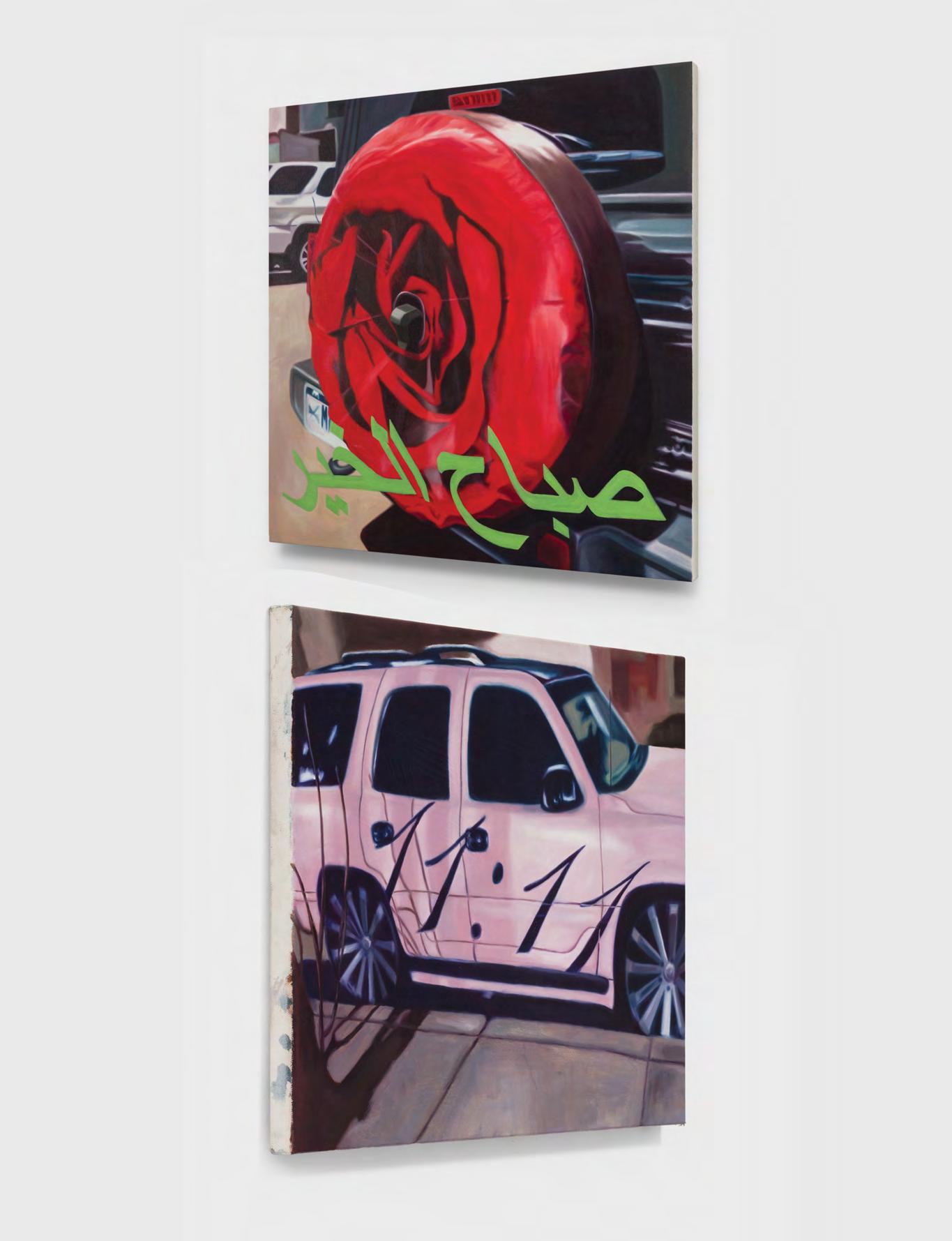

by
Based in Beirut, Moe Rida is a makeup artist and hairstylist known for his mastery of colour, texture, and precision. He has collaborated with some of the region’s most renowned designers, including Elie Saab and Hussein Bazaza, crafting looks that fuse classic elegance with bold experimentation. Beyond the runway and editorials, his expertise extends to film and television—most notably as head of hair and makeup for Season 2 of AlRawabi School for Girls —proving that beauty isn’t just about technique, but a powerful form of storytelling.
What first drew you to the world of makeup and hairstyling, and when did you realize it was your true calling?
My mother is a hairdresser. Growing up I used to watch her work and occasionally assist her. Through learning her craft and witnessing the joy it brought, I knew then that hairstyling and makeup artistry was my calling.
Beirut has a rich history in fashion and beauty—how has the city influenced your artistic approach?
The city is a major melting pot of different vivid styles. Just walking through its streets one notices the essence of true Beirut style. It is the perfect mix of modernity, chic, nostalgia, romance, heritage and avant-garde which influences me constantly.
Who were your biggest inspirations when starting your career, and how have they shaped your aesthetic?
Hairstylists and makeup artists in the 90’s were truly ahead of their time. Artists like Kevyn Aucoin, Francois Nars, Oribe, Tyen, and Topolino were visionaries and are still referenced to this day by me and other artists.
You’ve worked with some of the biggest designers in the region. How does collaborating with fashion houses like Elie Saab and Krikor Jabotian influence your creative vision?
It’s a beautiful process of meshing ideas and techniques together to create a unique image. At times, a texture in the fabric or a certain combination of colours would inspire a hair and makeup look. It’s important to be creative yet stay true to the designers’ DNA.
Makeup and hairstyling are both powerful tools in storytelling. How do you approach each look to ensure it aligns with the mood of the shoot?
I tend to ask myself the 4W’s: what, who, when, and
where; that usually aligns me with the spirit of the editorial. At times, hair and makeup are the protagonists of the story, and other times they’re just a silent background.
Do you have a signature touch or beauty philosophy that sets your work apart in the industry?
Maximalism vs. Minimalism, and nothing in between. It’s either or for me. Also I’m obsessed with FRECKLES! I try to add them whenever I can.
What challenges do makeup artists and hairstylists face in the high-fashion industry, and how do you navigate them?
Creativity is crucial for any artist. It’s good to reference something rather than copy it. My way of doing that is remixing an idea with other, not so random ideas to create a one of a kind concept. If that makes any sense!
What do you think makes fashion and beauty in the Middle East distinct from the rest of the world?
In the Middle East, the fashion and beauty industry brilliantly brings heritage and culture to the scene and makes it universal, and it makes me ridiculously proud.
If you could create a dream beauty look for any celebrity—past or present—who would it be and why? Our icon SABAH is the epitome of style, glamour, camp, and showmanship. I mean just thinking about creating a look for her gives me the chills.

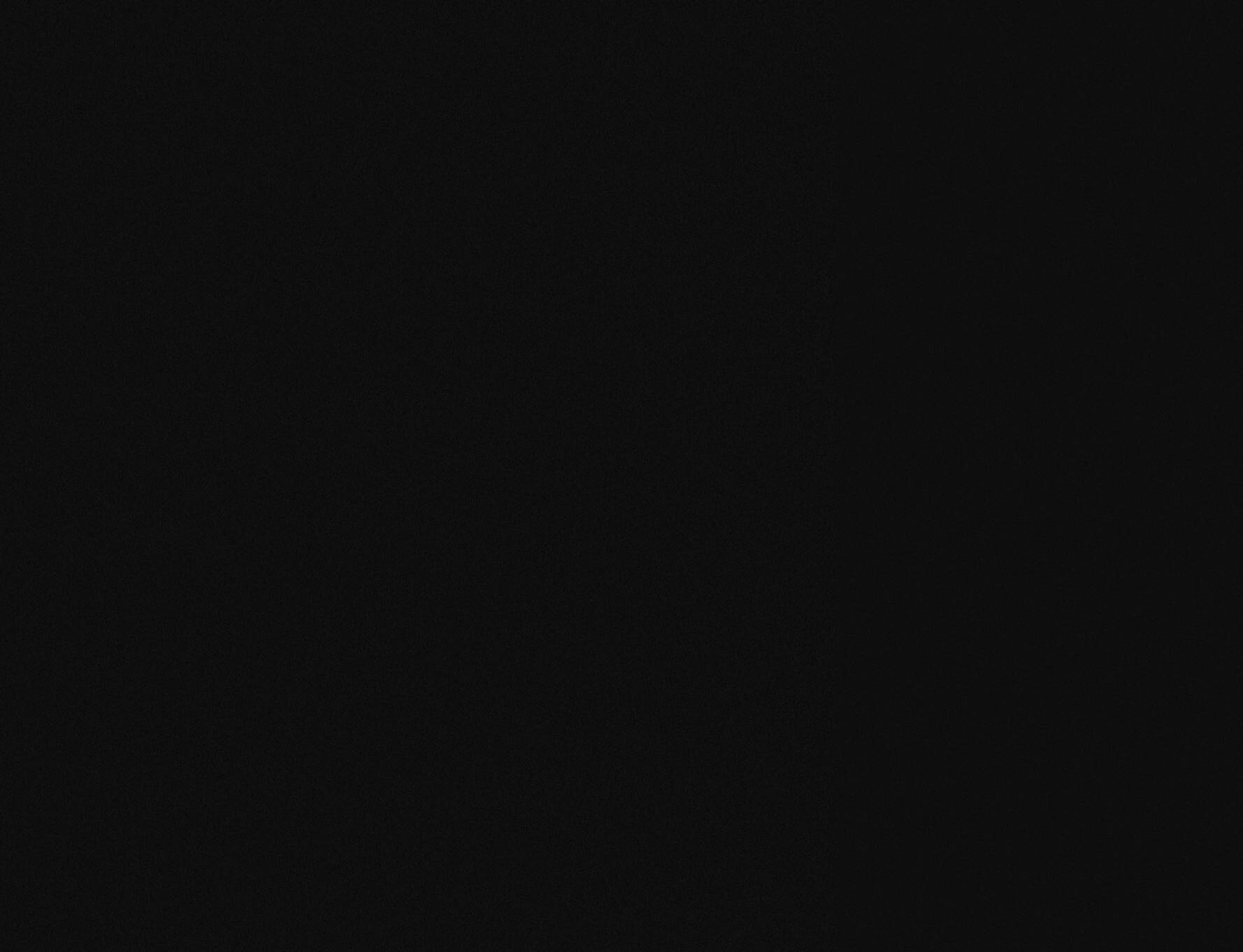
Desire, defiance, and reinvention fuel Roxane’s music. The Lebanese singer-songwriter blends sultry R&B with pop and Afro beats, redefining Arab women’s self-expression and power. A year ago, she released her debut EP HARAM, turning cultural taboos into anthems of self-discovery. Now, she’s gearing up for her upcoming album—Ensa, an album born from an unexpected health setback—and a refusal to let anything bring her down. Effortlessly detached yet deeply intentional, Roxane crafts empowering anthems that prove that knowing your worth is the ultimate rebellion.
What first inspired you to pursue music, and when did you realize it was your calling?
I was very privileged to grow up in an environment where pursuing an artistic career was always an option. Musicians were all around me, so sometimes I wonder if I even had a choice in the matter. I considered becoming a dancer or a novelist, so it was going to be an unconventional path either way… It wasn’t until I got over my crippling stage fright at 17 years old and performed for an audience that I knew what I was capable of. I knew it was my calling because it was as thrilling as it was terrifying, and yet couldn’t imagine not feeling that rush every chance I could.
Growing up in Lebanon, how did the cultural and political landscape shape your artistic voice?
I grew up submerged with messaging about what women can’t do. I challenged those rules every chance I could, in the loudest of ways, until I decided there is more power in just existing. It’s not controversial to do whatever you want.
You describe your music as both raw and intentional. How do you balance vulnerability with power in your songwriting?
I can imagine that the average person would hear my music and assume my intentions are to provoke. And they are, but not in the way they’d think. I aim to start conversations, and make people feel less alone in the struggles that my songs tackle. Less alone in their shame, their guilt, their fear. There is power in admitting that defiance is a challenge, and it comes at a cost. And there is immense power in paying that cost for the sake of being true to yourself and your desires, as an Arab woman or a member of a marginalized community. That being said, there is vulnerability in searching for community and asking for help, and I hope my songs create a safe space to facilitate those conversations.
Arab cultural restrictions are a big theme in your work. What has been the most challenging part of addressing these topics through your music?
I think the most challenging part of making the kind of music I make is having to repeatedly make excuses for it. Having to explain how real and relevant all of these topics are and prove their validity to people who are either in denial or so narrow minded they cannot empathize with an experience that’s not their own. At this point, the music can speak for itself, and the girls that get it, get it.
Your upcoming single “Ensa” - what inspired the song? Funnily enough, I wasn’t fresh out of a heartbreak at the time ‘Ensa’ came to life. Around a year ago, during an unexpected health interlude, I was adamant to make the downtime productive. In one of my writing sessions with my co-writer Aleks, we talked about my refusal to let anything bring me down, not my health, not job and certainly not a boy. Previous tracks of mine could be described as loud or in-your-face, but ‘Ensa’ is the soundtrack of nonchalance. Whether in love or in life, I was done pleading, I was done chasing. You’re either worthy, or you don’t deserve me.
What do you hope your music will change for Arab women and marginalized communities in the industry? My mission is and always will be to alleviate the burden of shame on those oppressed by it. I’ve found a powerful catalyst to do so on a personal level, and I can only hope that my music can do the same with others. I’d be honoured to simply spark some courage in someone, make them feel less alone. I hope my songs act as a Bat Signal, so whenever someone is looking for an outlet for self-expression, they know they’re safe with me.
If your younger self could hear your music today, what do you think she’d say?
I hope she’d feel I did her justice. She searched her whole life for someone that looked like her to look up to. She is my motivation, and I hope she’s happy knowing that her older self is doing what she can to make sure people don’t ever feel as alone as she did.
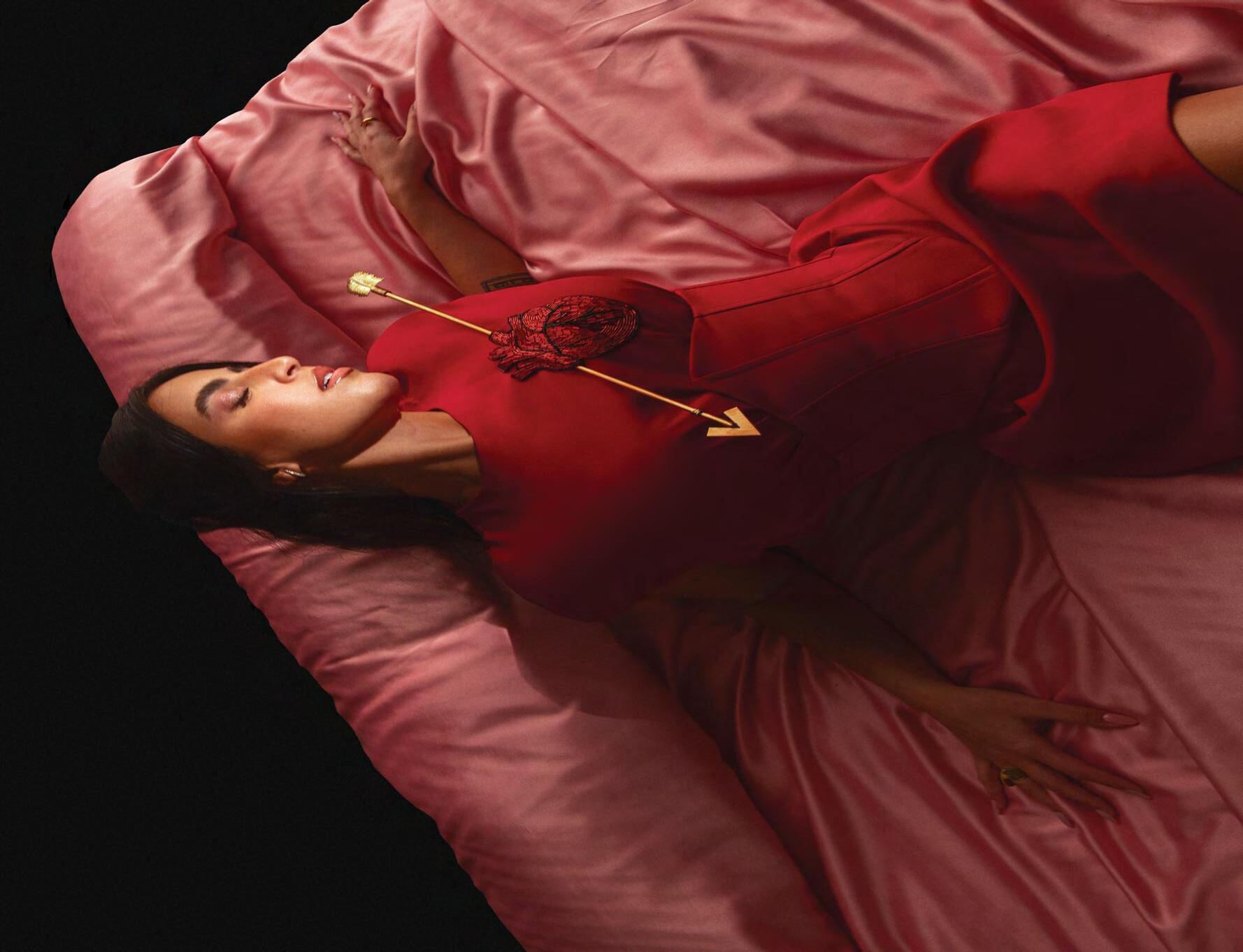
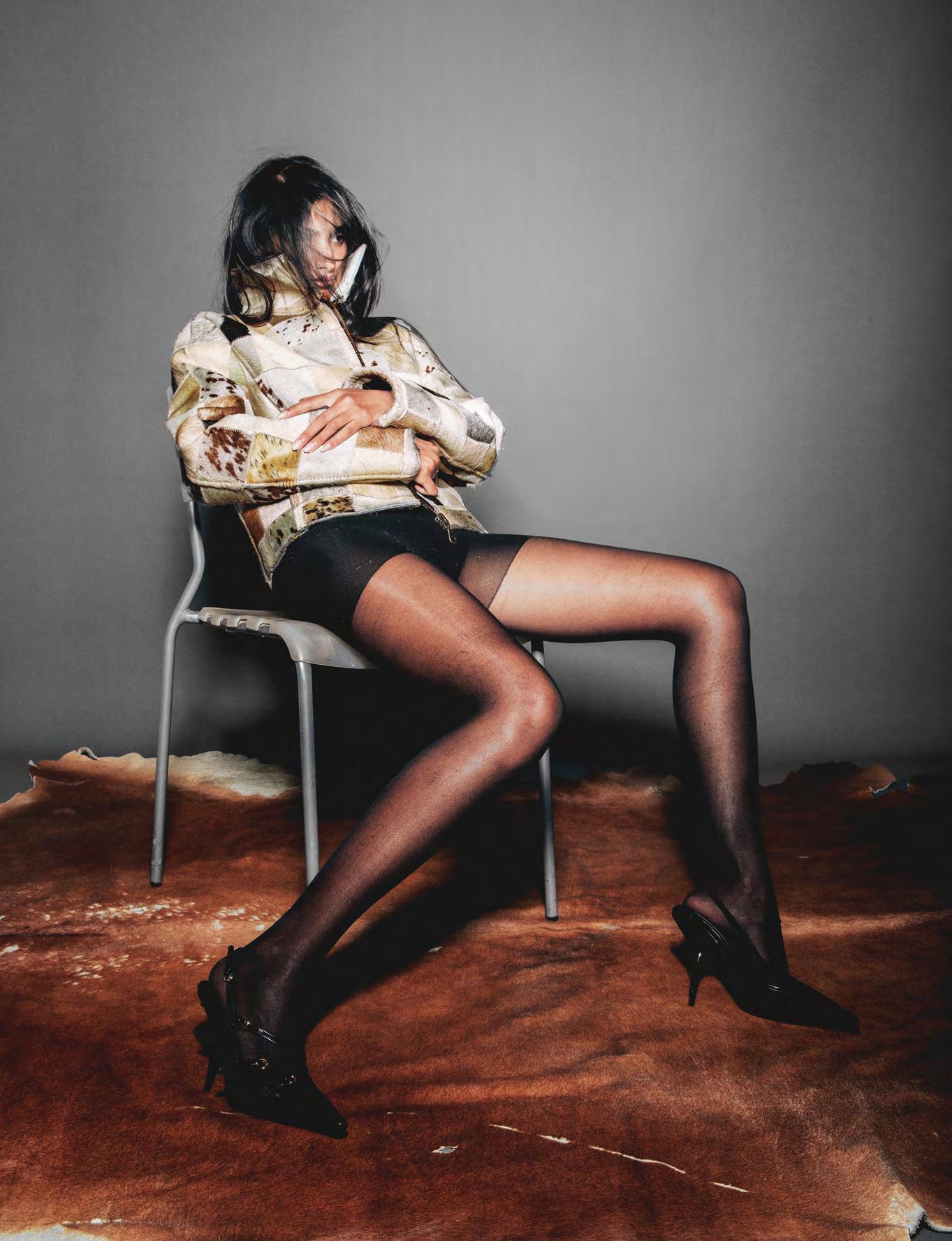
Malak Jaouda has always seen fashion as more than just clothing—it’s a language, a form of self-expression, and a lifelong passion. Known for her bold style and inventive eye, she turned her love for dressing up into something bigger: MALLAKÄ. Founded in 2021, the brand is her creative playground, where she transforms ideas into wearable art. Every collection is a reflection of her vision—unique, stylish, and deeply personal. For Malak, MALLAKÄ isn’t just a brand; it’s a journey of growth, resilience, and self-discovery—one that continues to shape both her identity and the people who wear it.
What inspired you to launch MALLAKÄ in 2021, and how has the brand evolved since its inception?
The inspiration behind launching MALLAKÄ stemmed from my need to create something that reflected my personal vision and passion for fashion design and styling. I wanted my brand to reflect the space between casual streetwear, and elevated high fashion. I wanted to design pieces that were not just clothing but a form of art—pieces that told a story, sparked conversation, and offered a unique take on streetwear. I chose leather as a core element because of its durability, versatility, and timeless appeal. Since 2021, the brand has grown from a small passion project to a more defined and recognized name in the fashion space. I’ve focused on refining my designs, incorporating feedback from customers, and exploring new collections that balance both style and function.
How has your personal journey influenced the designs and ethos of MALLAKÄ?
My journey has had a huge influence on the designs and ethos of MALLAKÄ. As someone who has always been passionate about fashion and self-expression, my personal style often reflects boldness, creativity, and an adventurous spirit. This is mirrored in the brand’s designs, which often feature bold cuts, innovative leather treatments, and pieces that stand out without being too loud. MALLAKÄ, to me, is a reflection of my journey— embracing failure, learning, and growing. It embodies my desire to push boundaries and celebrate individuality.
How do you balance staying true to your personal style while appealing to a broader audience?
Balancing personal style with broad appeal is a challenge, but I focus on staying true to the essence of MALLAKÄ— quality, creativity, and uniqueness —while ensuring the designs are versatile enough for a wide range of people. While my personal style may lean toward edgier or bolder looks, I design with the understanding that different people express themselves in unique ways. I try to create pieces that offer both versatility and individuality, so anyone who wears MALLAKÄ can feel confident and stylish, regardless of their personal taste.
In your opinion, what sets MALLAKÄ apart from other fashion brands in the industry?
What sets MALLAKÄ apart is its focus on craftsmanship and individuality, with a particular emphasis on leather as a primary material. While many brands in the streetwear space rely on the same fabrics and styles, MALLAKÄ
creates standout pieces that showcase an artistic approach to leather, combining luxury with street culture. The attention to detail, the rawness, and the boldness in our designs are all elements that make MALLAKÄ distinct. I also believe the brand’s commitment to quality and its constant evolution, staying relevant without compromising on authenticity, sets it apart.
How do your cultural background and experiences influence the aesthetic and values of MALLAKÄ?
My cultural background plays a significant role in shaping the aesthetic and values of MALLAKÄ. Growing up, I was exposed to a mix of styles, traditions, and influences, which has helped me develop a strong sense of identity. This multicultural perspective informs my design choices, whether it’s a specific colour palette, a silhouette, or the incorporation of textures and materials that have personal significance. I also value the idea of combining street culture with timeless luxury, reflecting a fusion of different worlds—much like my own experience navigating different cultural landscapes.
Did you pursue formal education in fashion design, or are you self-taught? How has your educational path influenced your approach to design?
I’m largely self-taught, and my journey into fashion design has been one of learning through hands-on experience. Although I didn’t pursue formal education in the traditional sense, I’ve been driven by an unrelenting passion for design and a natural curiosity to learn and improve. This has led me to experiment with materials, techniques, and concepts, pushing me to stay true to my own creative instincts. My approach to design is fluid and not bound by formalities, which allows me to break free from conventional design rules and create pieces that truly feel personal and innovative.
If you could see any individual wearing MALLAKÄ, who would it be and why?
If I could see any individual wearing MALLAKÄ, it would be someone like Kanye West. His ability to blend streetwear with high fashion and constantly push creative boundaries aligns with what MALLAKÄ represents. He embodies a unique vision, much like the one I strive to achieve with the brand —bold, disruptive, and boundary-pushing. I would love to see someone like him wearing MALLAKÄ, as it would feel like a natural partnership in terms of aesthetic and values.
Firas Abou Fakher has spent nearly two decades shaping the sound of Arab music and amplifying its global reach. As a founding member of Mashrou’ Leila and now Vice President at Universal Music MENA, he helped spark a new wave of Arabic-language music. His compositions have scored award-winning films and series, including The Shamima Begum Story, for which he won a BAFTA in 2024. Beyond music, he’s collaborated with Apple, the V&A Museum, and MDLBEAST, using sound to document Arab stories. A member of the Recording Academy, and lecturing at NYU, Columbia, Dartmouth, and SciencesPo—he continues to push boundaries, challenging narratives, and redefining Arab music on a global stage.
What’s your earliest memory of music, and how did it shape your career?
Growing up in Abu Dhabi and going to cassette stands with my grandma, buying cassettes for MJ, and X and X, and then coming to Lebanon during the summer and trading them for my cousin’s cassettes of Najwa Karam, Wael Kfoury, and, and, and…
Your compositions span genres—from electro-pop with Mashrou’ Leila to orchestral film scores. How do you approach genre fluidity in your work?
I honestly try hard to not think in genres. With Mashrou’ Leila, I was always looking at how to evolve and push the boundaries of what I did before. And scoring allows me to experiment with styles and instruments I would never have approached otherwise.
You co-founded Last Floor Productions in 2020. What inspired you to make the shift into film and television?
I was taking a break from making music for a while, and needed to find a creative outlet. And to be honest, Arab stories were being told by the wrong people for too long. It was time to change that.
Do you find storytelling in music to be different from storytelling in film? How do the two influence each other in your work?
I guess I see them as different dialects of the same language but sound is uniquely powerful in a world dominated by the visual.
Your work often carries political and social undertones. Do you believe art has a responsibility to challenge the status quo?
Art that doesn’t challenge is decor, and sometimes affirming where you’re from and who you are is challenging in its own right.
You’ve given talks at NYU, Concordia, and other institutions—how have these experiences influenced your approach to music and storytelling?
Teaching and learning are the same thing for me. Every time I walk into a room with students, I leave with new ideas. I hope they do, too.
You’ve been part of shaping an alternative Arab music scene. What do you think is the next phase of Middle Eastern music?
More fearlessness and experimentation. More artists ditching formulas, blending folklore with Hip-Hop, Maqsoum with RnB… And realizing that being rooted is the actual key to success.
How do you see the role of major labels evolving in the region’s music industry?
As the industry in our region matures and stabilizes, I believe artist development will become the most important function in music. That’s the reason I was so attracted to join Universal Music, the entire trajectory is developing and growing artists.
As a music executive, what strategies are you implementing to support emerging artists in the region and to integrate their work into the international music scene?
I think the true key to becoming a global artist is to fully immerse yourself in the specifics of where you are from and what that sounds and feels like. I’m not interested in a ‘watered-down Arab-flavour’ for a western audience. Authenticity is the most powerful currency today, and my strategy is to make that more powerful.
As a multi-instrumentalist, do you have a favourite instrument to compose on?
I try to learn new instruments constantly to avoid falling into predictable habits. I naturally head to the piano or the guitar, but writing a piece on a Cello or a Duduk forces me to think completely differently about music.
Who are some of the composers, musicians, or filmmakers who have had a major influence on your creative journey?
Soapkills, Cheb Khaled, Ziad Rahbani, Amr Diab, Ryuichi Sakamoto, Trent Reznor, Park Chan-wook, Asghar Farhadi, Elia Sleiman…

Capturing the fleeting beauty of light and shadow, striking contrasts and fluid silhouettes evoke a sense of fashion fading like a whispered memory.


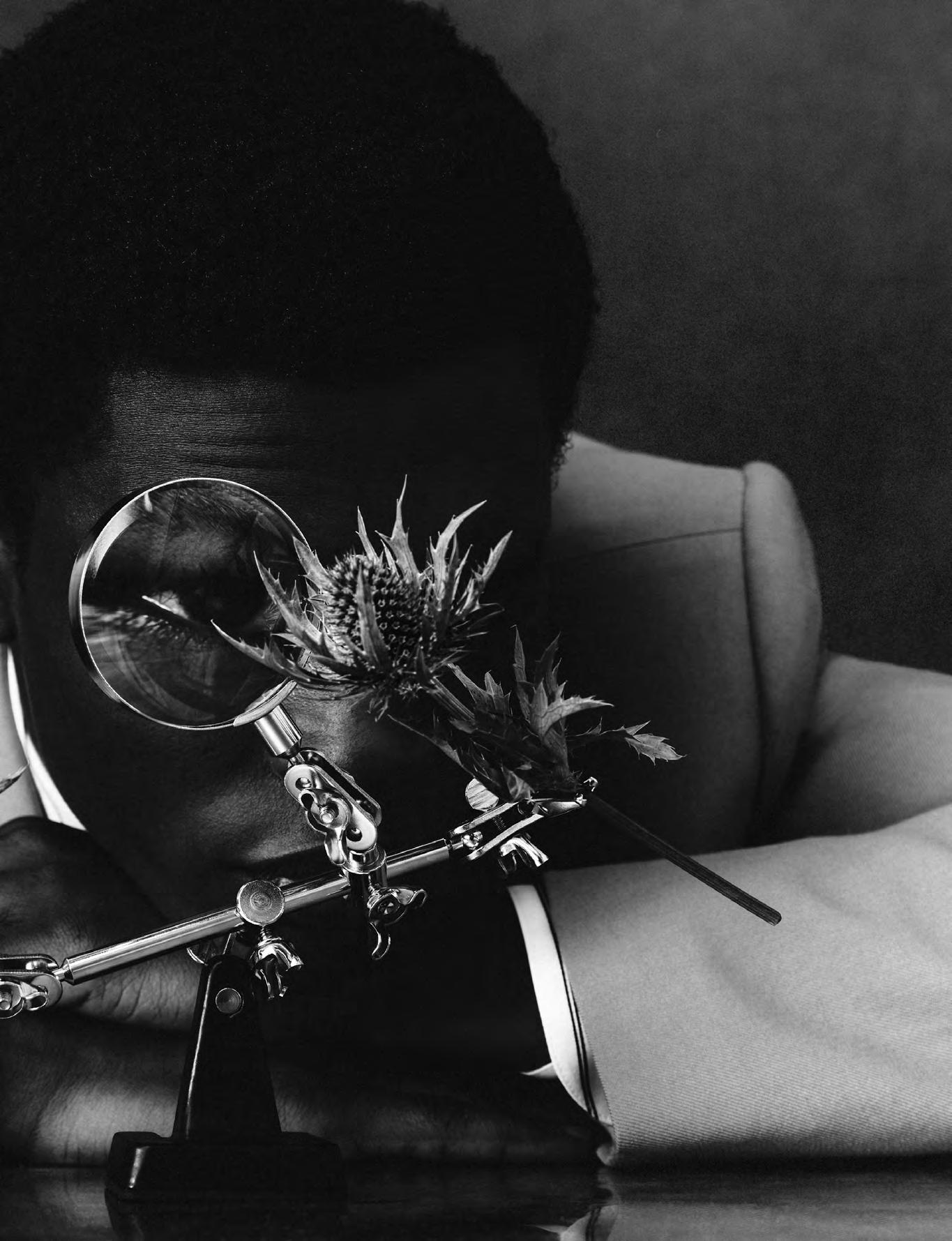


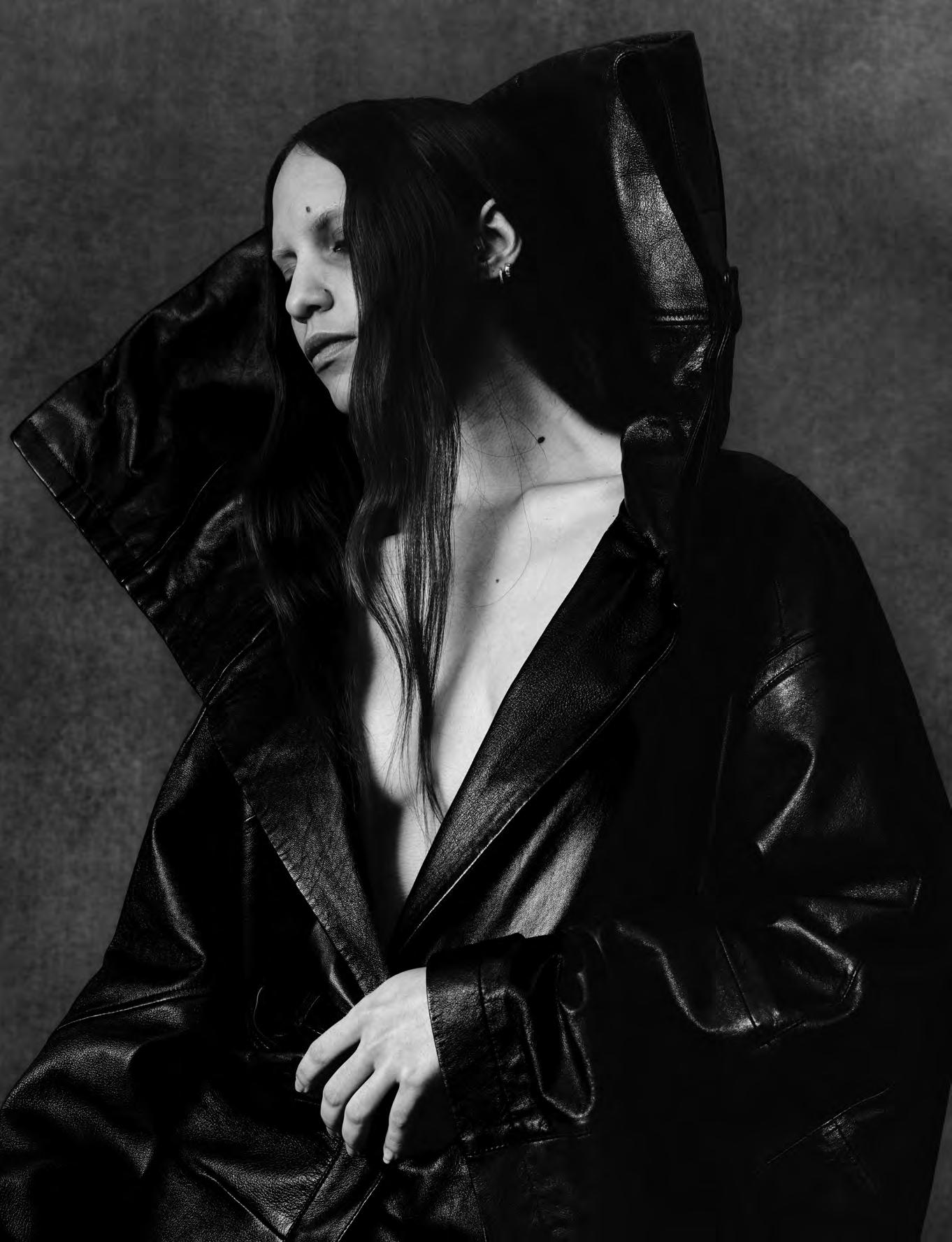
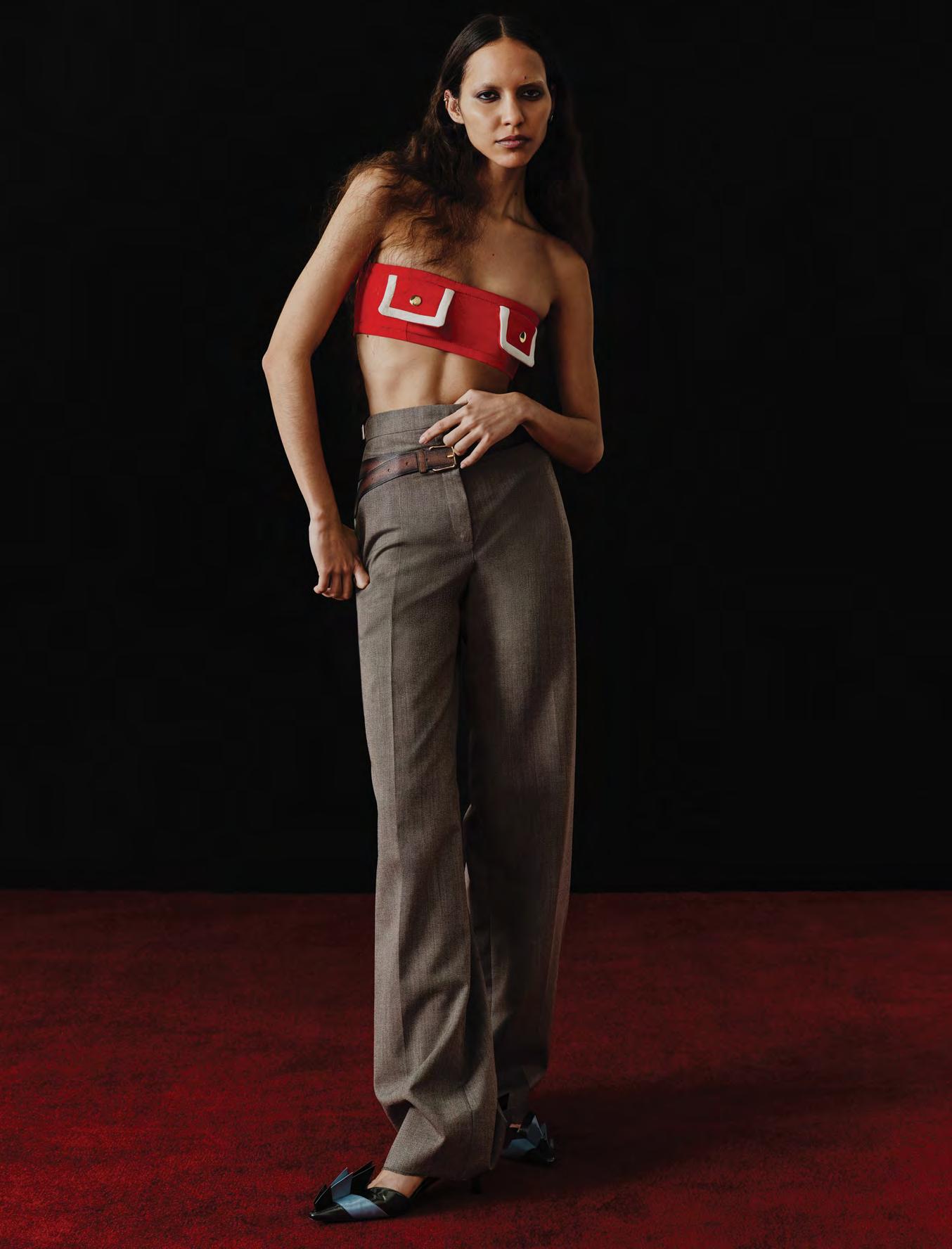
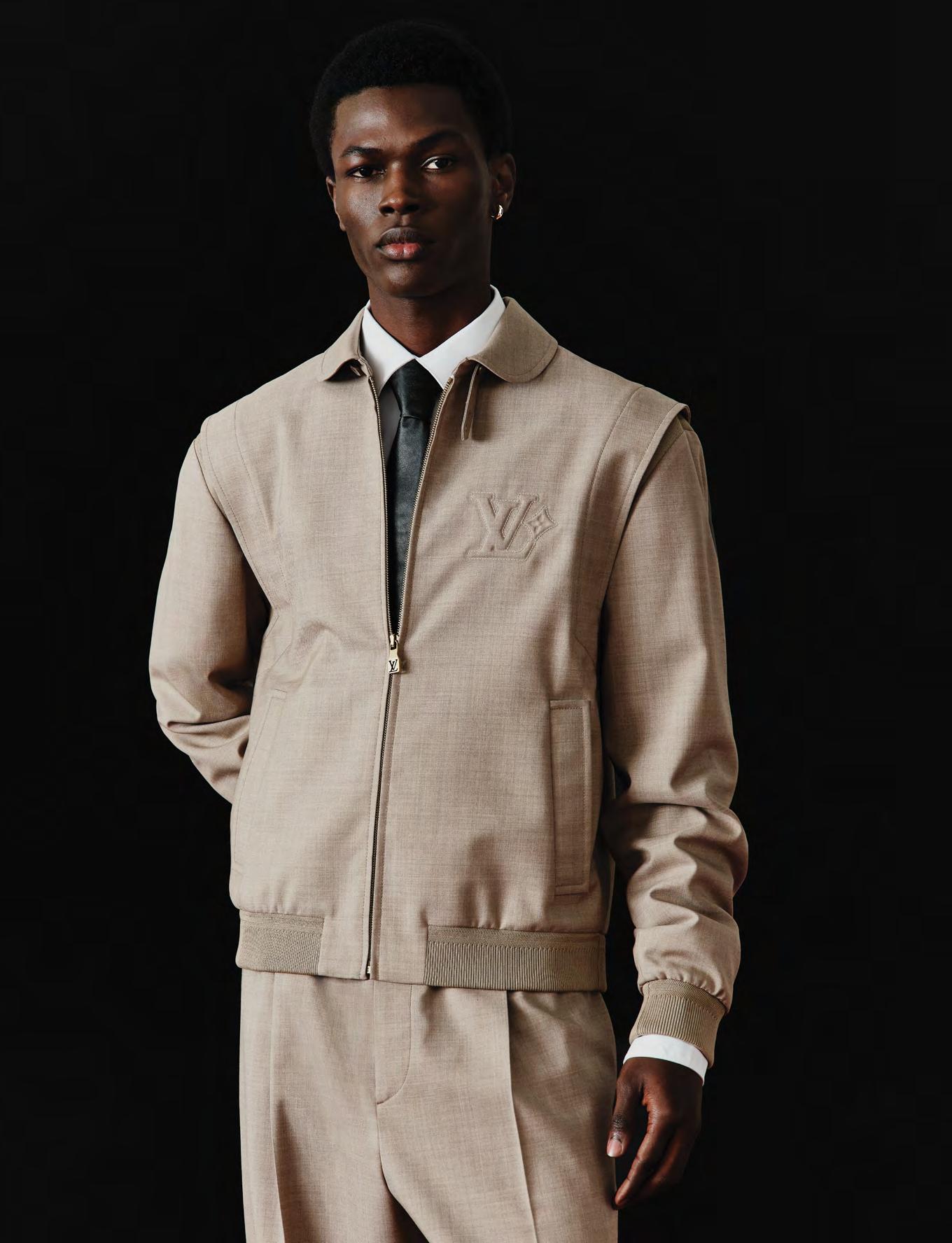










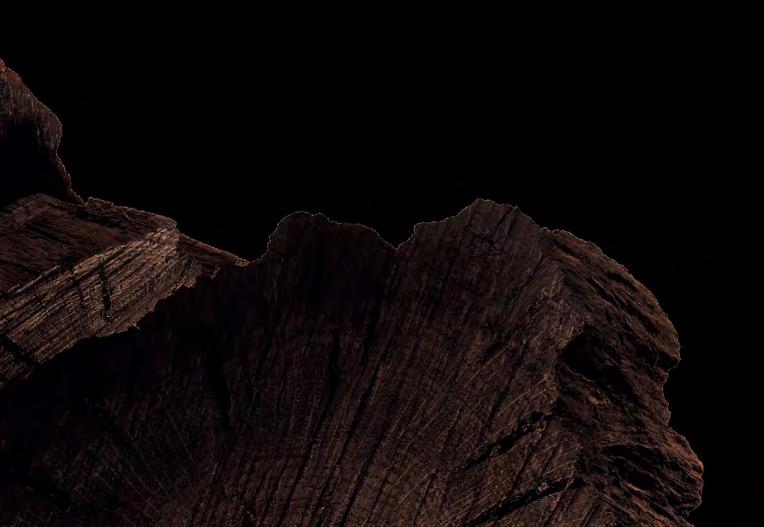
Christine Nagel on the legendary Terre d’Hermès and the art of perfumery.
words LOUIS PARKS
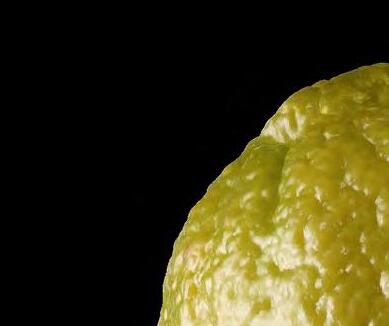
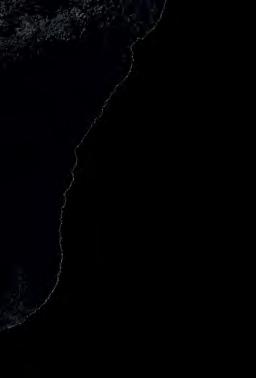
Great perfume is more than a scent hanging in the air— it’s an invisible form of art, capable of evoking emotions, memories, and experiences. Christine Nagel, the Director of Olfactive Creation at Hermès Parfums, embodies this philosophy. From her unconventional entry into the perfume industry to her latest creation, Terre d’Hermès Eau de arfum Intense, Nagel has crafted a legacy defined by bold creativity, technical mastery, and a relentless pursuit of emotion through scent. Here, she reveals the inspirations behind her work, her personal philosophy on fragrance, and what it means to create for one of the world’s most prestigious luxury houses.
Before she became one of the most celebrated noses in the industry, Christine Nagel’s first love was chemistry. “My background is in organic chemistry,” she says. It was this foundation that first introduced her to the world of fragrance when she stumbled upon Firmenich, a perfume and flavour company, in Geneva. “And in that company, there was, I read, a Nobel Prize winner.” she recalls. “And one day I wrote a letter saying, I would love to work at that company. So they received me and they said, “Come, come”.”
Perfumes were a man’s game, however, Firmenich eventually relented and she began working on scents. Her early career involved the technical task of reverse-engineering existing fragrances using only her nose—a skill few perfumers develop in today’s era of mass spectrometry. “Mass spectrometers find 90% of the formula [of any perfume]. But 40 years ago, it was only with the nose you could do that. So imagine if at one point you identified limonene. I know that it comes from a citrus fruit. Is it an orange? Is it a grapefruit? Is it a mandarin? Is it a bergamot? Is it a lime, a lemon? And if I decide that it’s an orange, then does it come from California? Does it come from here? It’s a bit like wine, you know? It wasn’t creative as a job, but it was very technical.” Though she often talks in terms of art, Nagel credits her early technical experiences as the foundation of her fearless approach to perfumery, “It gave me the assurance to never be afraid. I dare everything,” she says.
Nagel describes herself as a sponge, absorbing inspiration from art, literature, cuisine, and travel, “Perfume is a question of emotion. You create a fragrance and you hope to create an emotion. And I would say that everything that nourishes me, my only way of bringing it out is to create perfumes,” she says.
While she likens the creation of a perfume to craftsmanship, she emphasizes the rigorous training and discipline that’s required. “To be a good perfumer, you need 90% hard work. That is to say, it’s this memory that the other people don’t work on. You’ve got to work on your olfactory memory,” she says with a smile. “And then you have to have the artistic sense. You have it or you don’t, you know?”
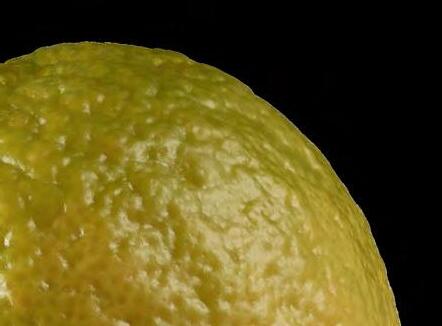
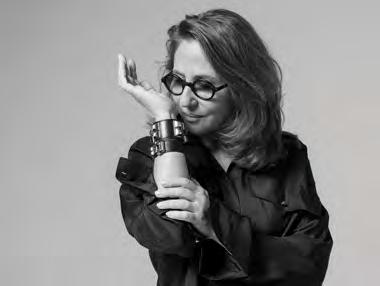
At Hermès, Nagel has been granted unparalleled creative freedom, “I choose what I want. I work on whichever plant I want. And I’m free with my time,” she says. “I’m not told, oh, in September, the perfume must be ready. And of course, I don’t have any price constraints for the raw material. And I have the choice of a very wide range of raw materials. I’m one of the rare perfumers who can really get ingredients made bespoke. I can ask for an extraction of a small grain that nobody’s heard of.”
This liberty has allowed her to push boundaries and take risks—a philosophy embraced by the house’s leadership. “Axel Dumas once told me, ‘Christine, continue to be daring. Without audacity, there is no creation.’ And even more impressively, he told me, ‘You have the right to make mistakes.’ That kind of support is rare.”
One of her most daring projects has been reinterpreting Terre d’Hermès, a modern classic created by the legendary Jean-Claude Ellena. “Terre d’Hermès is a monument,” Nagel acknowledges. “If I had created it, I would have been immensely proud.”
When she finally decided to put her own mark on it, she approached it like a scientist—deconstructing the fragrance to understand its essence. “I did what I know how to do, that is to say, I started to deconstruct the perfume. I used the techniques that I had learned in the beginning of my perfume making. And I realised that when you actually arrive with eight, ten ingredients, you already had the signature of Terre. Often that is what defines a great perfume,” she says. This revelation gave her the confidence to make subtle yet powerful modifications.
For the new Terre d’Hermès Eau de Parfum Intense, she sought to capture the raw energy of volcanic earth. “A volcano has that strength, that force, the lava that comes out of the earth. And these flamboyant colours are interesting as well. In synaesthesia, I like to work with smell and colour and smell and texture, fragrance and texture,” she says. To translate this into scent, she introduced unexpected elements: roasted coffee for a smoky depth, liquorice wood for an intriguing sweetness, and a mineral accord inspired by lava stone. “Lava stone is fascinating because it is very black and dense. And at the same time, it’s very light. It’s full of alveoli,” she says, her voice full of wonder. The result is a fragrance that stays true to the DNA of Terre d’Hermès while offering a bold new interpretation. “It’s recognizably Terre, but with a fiery intensity,” says Nagel.


“To be a good perfumer, you need 90% hard work. That is to say, it’s this memory that other people don’t work on.”
All this, her freedom, and the house’s dedication to excellence is what sets Hermès apart, according to Nagel. “Hermès never lies. When I use liquorice, I use real liquorice. We don’t cut corners. And, twenty years ago, Hermès was among the first to create a private collection, Hermessence, focused on magnifying raw materials. Today, many brands have followed, but we continue to lead with integrity,” she says.
Sustainability is another key pillar of the house’s approach, the new bottles are refillable, and “we’re doing what it takes so that all our collections [will] be refillable,” she says. The glass is recycled, and the ink used on the box and paper “has sustainable values”. When it comes to the actual scent, “Hermes always sends a team to do the audits to be sure of the provenance, the source, the way in which people who harvest the flowers and other materials work. So the way we look into things is very serious,” she says.
As Nagel continues to shape the olfactory identity of Hermès, she remains steadfast in her mission: to evoke emotion. “All I know how to do is make perfumes. I don’t know how to draw. I don’t know how to sing. I dance very badly, but I eat very well,” she says with a laugh. Hermès’ perfumes, you sense, are in good hands. ■
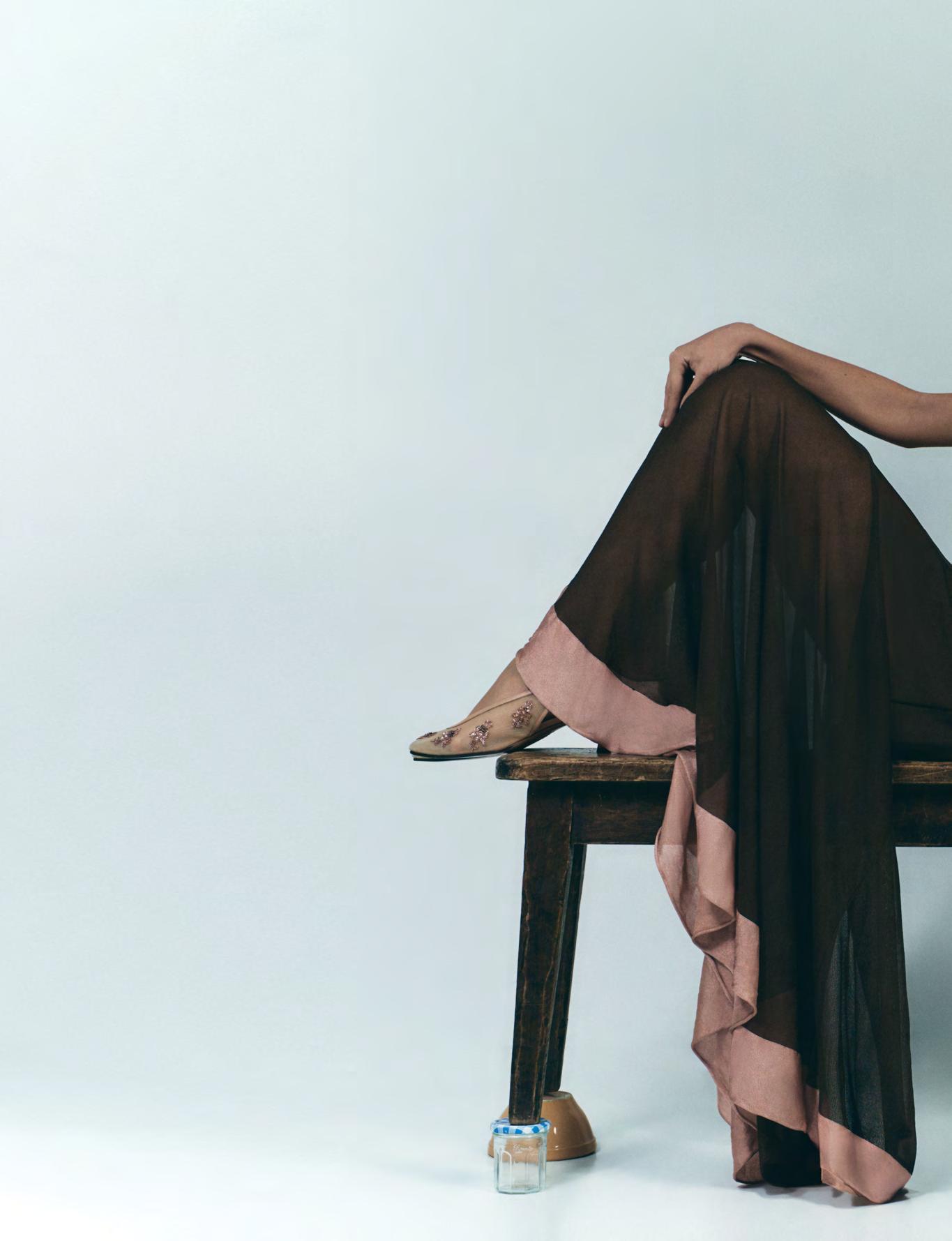
photography PER APPELGREN
styling MIRKO DE PROPIS
words MARIANA BAIÃO SANTOS
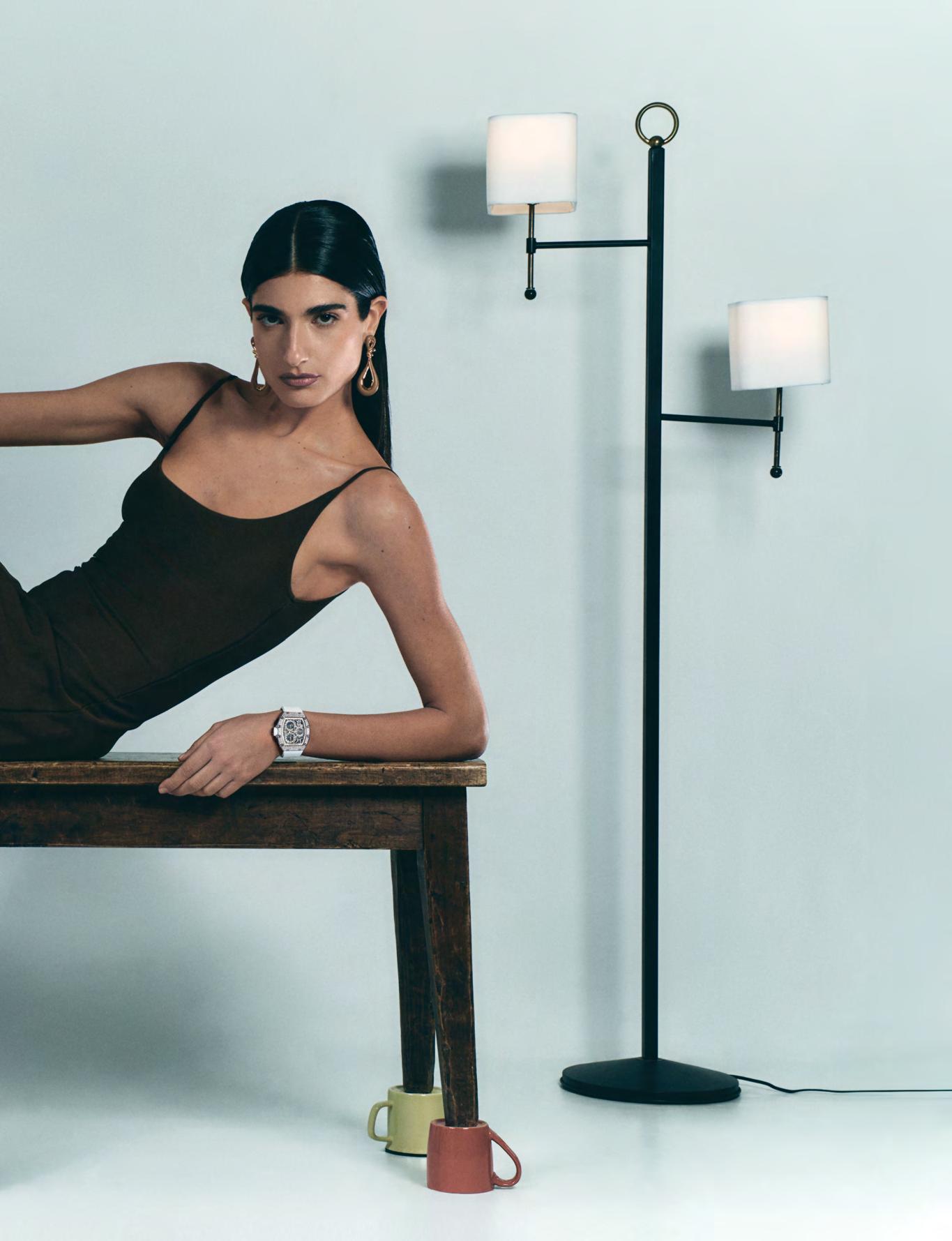

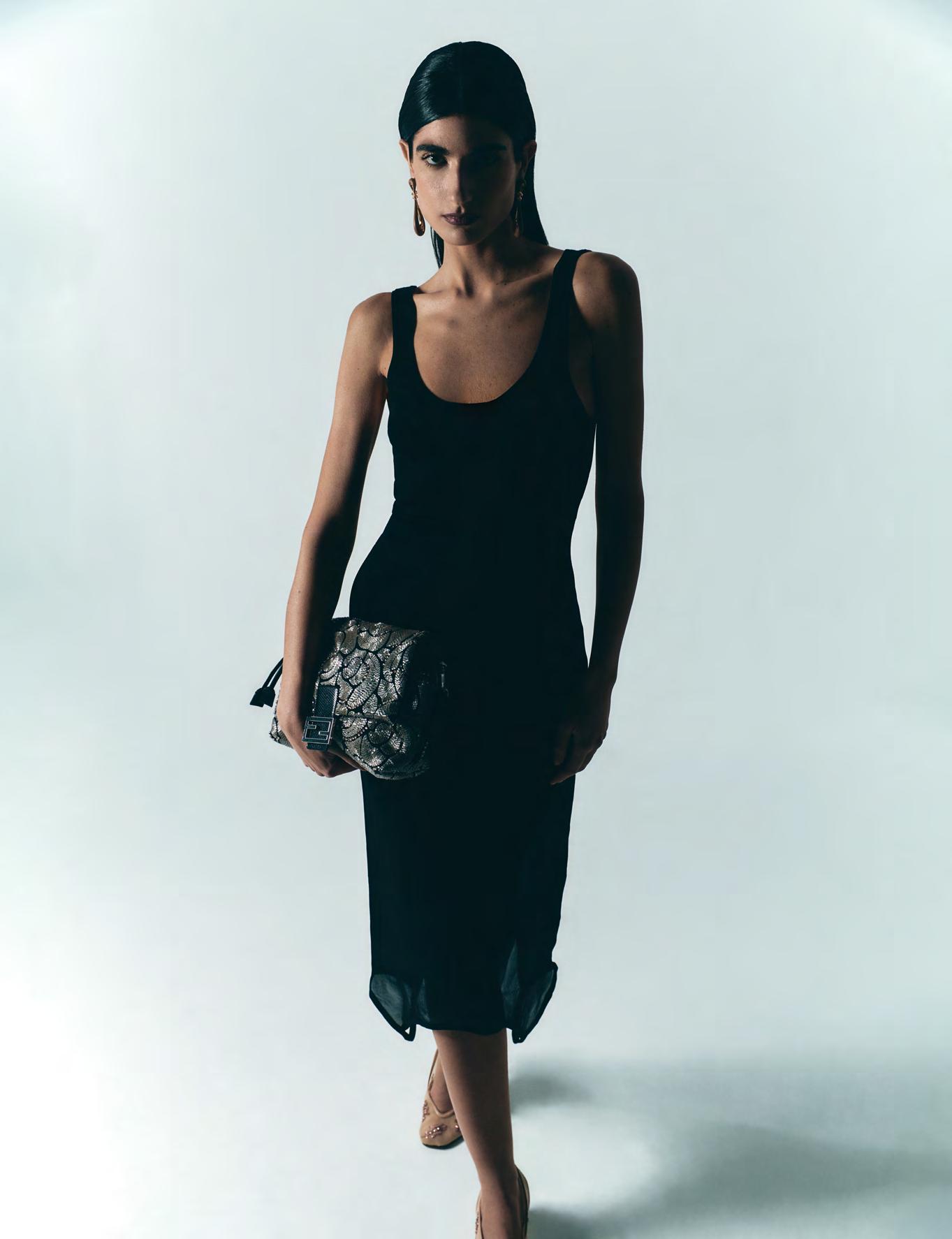
Like the RM 07-01 in its radiant ceramic tones, summer sways in French colours, a delicate waltz carried by the breeze of innovation. A season kissed by light, where wonder and creation entwine.
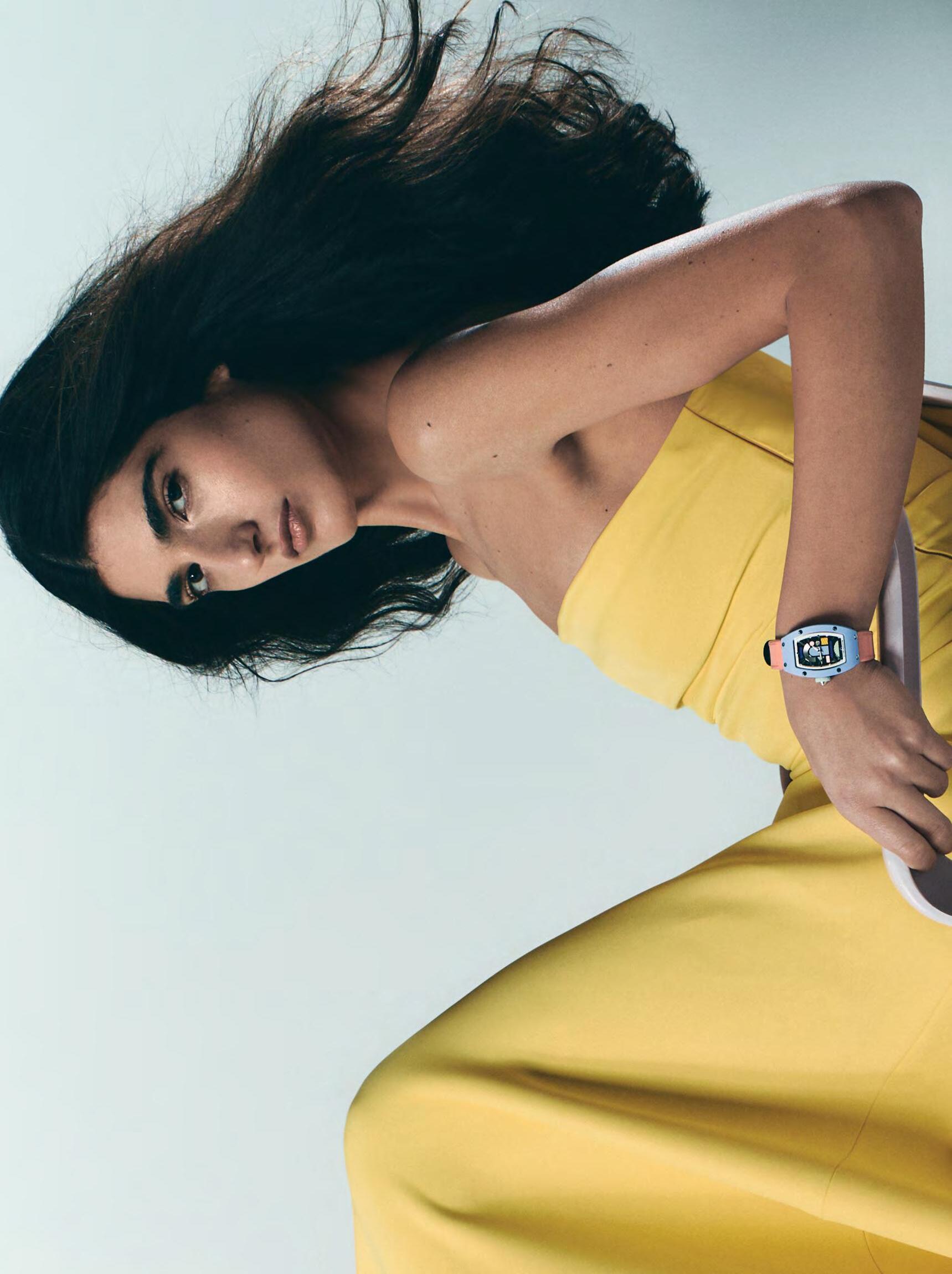
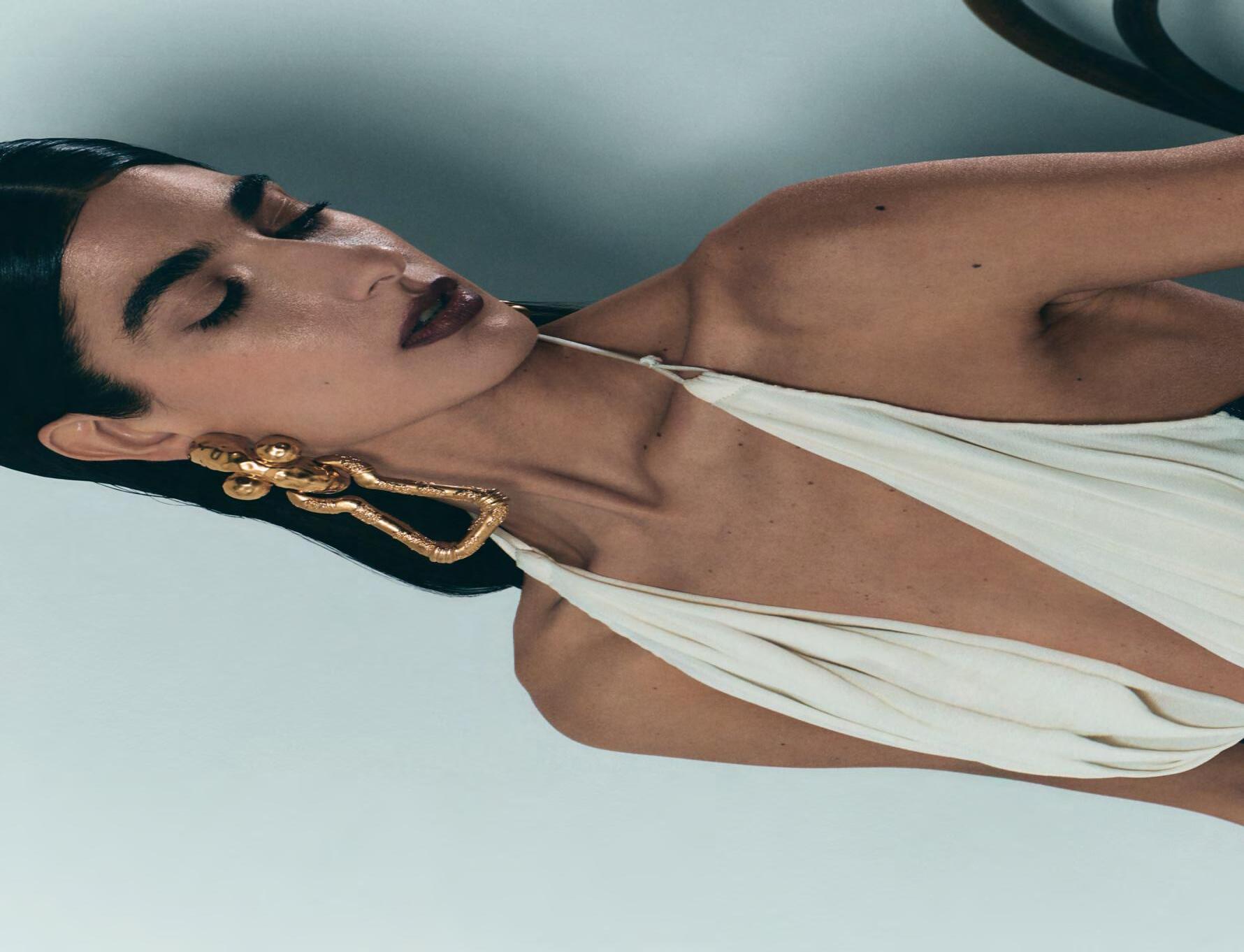


When a piece of clothing reflects years of craftsmanship, it becomes more than just fashion. In Fendi’s hands, these pieces evolve into refined expressions of artistry, with each stitch honouring tradition, each silhouette shaped by a deep appreciation for design.
There’s something elusive about Romy Nassar—she wears the kind of beauty that doesn’t ask to be looked at, but insists on being remembered. Born in Lebanon, based in Paris, and discovered almost by accident, she is the kind of model who resists the very premise of modelling. She didn’t grow up dreaming of the runway, and still questions whether she belongs in the industry at all. But then she moves—on camera, in conversation, through cities—and you understand why she’s here. With hair that refuses to be tamed and a voice that refuses to be silenced, Nassar carries herself like a woman who knows she exists outside of time, outside of any category. Her presence is not a performance—it’s a provocation.
In a world that often demands women to be either tender or tough, Romy Nassar is both—and so much more. She walks the line between myth and modernity with a quiet force, the kind that doesn’t demand attention but commands it. When she stepped onto the runway in Athens for ZEUS+DIONE’s 10-year anniversary show—her first and only runway experience so far—it was as though she had been written into the script of history itself. “The air was thick with history… and humidity,” she recalls. “The energy absorbs into you, makes you hold yourself differently.” On that runway, the Canadian-Lebanese model wasn’t just walking—she was flowing, divinely appointed and defiantly herself. “I arrived, at least in the eyes of the Gods.”
And yet, modelling was never part of the plan. “I never envisioned myself as a model,” she says. “I don’t think I look like one.” The journey began with a selfie—a casual post noticed by a friend who passed it to her agent. Within a week, Romy had signed her first modelling contract. It was 2020, the world was in lockdown, and so too was her career. “I didn’t work at all until late 2021,” she says. But the delay didn’t deter her. If anything, it only deepened her sense of adventure. “I worked in almost every industry before this,” she says. “And the things I get to do in modelling, I would never experience in any other career.”
There is a quiet contradiction in Nassar that feels entirely contemporary: she is both self-questioning and self-possessed, instinctive yet sharply observant. She brings depth to a world often defined by surface, revealing new dimensions of what it means to hold space in fashion today. In Paris—her newly adopted home—she finds a city that mirrors her paradoxes. “It is romantic but also rigid. Elegant yet not suffocated by it,” she says. “I love the chase, the art of seduction, and the challenge… whether it’s with people, fashion or even life itself.”
She’s quick to dismiss glamour as a façade, describing the industry as mentally exhausting— visually opulent but emotionally starved. The environments may shimmer with excess, but behind the scenes, she often feels like she doesn’t belong. There’s an edge to her insight, a clarity that cuts through the artifice. Fashion demands depth to create, yet so much of it is built on surface-level exchanges and a whole lot of pretending. Still, she plays the game—barely. “The waiting game is brutal,” she admits. There’s a constant rush to fittings and castings, only to spend hours being overlooked. The urgency is always on the model’s side, while clients move at their own pace.
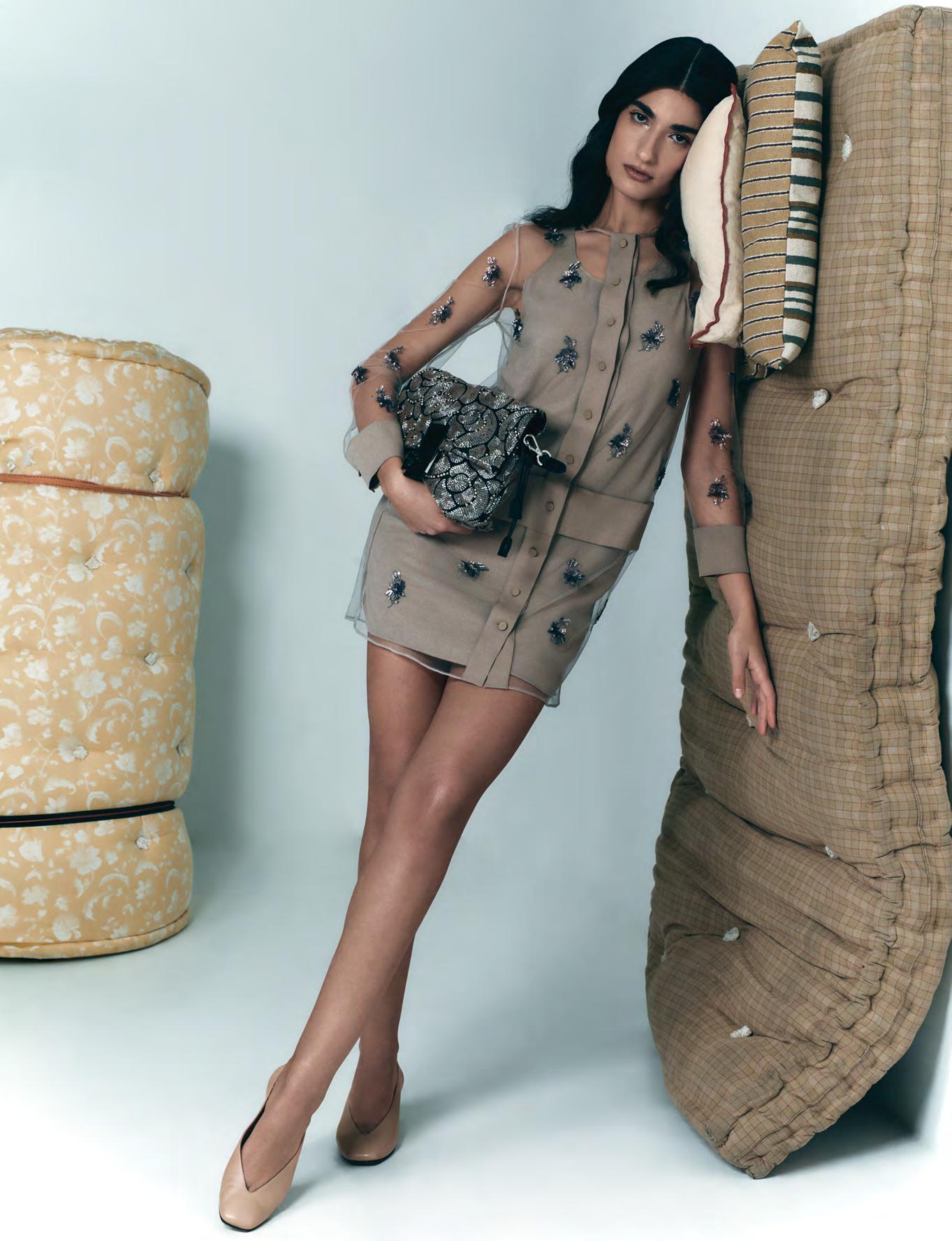

In Nassar’s world, presence is everything. And hers is magnetic. It’s in the heavy heels she wore in Athens, her feet sweating from her nerves. It’s in her refusal to tame her hair, even when stylists suggest otherwise. “I usually feel restrained by talents,” she admits. “They think I’m not skinny enough, or that I have so much hair.” But in the show for ZEUS+DIONE, she felt something rare: seen. “We were flowing. Marios Schwab made me feel part of the mythology.”
There’s a vintage glamour to Nassar—not in the polished sense, but in the way her beauty seems unbothered by the passage of time. Her watch doesn’t display the real time. “I always feel like I exist outside of time,” she says. She dresses not for trends or attention, but for memory. “I dress for myself, for the lovers in my memory, and the nights I never forget.” Her jewellery is bold. Her makeup is messy. Her hair, “loose and imperfect.” Nassar doesn’t accessorise to impress; she adorns herself with history. “I lose an earring at a party and leave it behind like a breadcrumb for a future lover.”
Her curated vintage jewellery page has developed a quiet cult following, though she never expected it to intersect with her modelling career. “I love tassels, ribbons, and opulence,” she says. “I want history—the weight of the past on my skin, a ring that once belonged to a woman who knew how to break hearts.” To Nassar, true luxury is sentimental. “If a piece of clothing or jewellery doesn’t have a secret, it’s not worth wearing.”
“I dress for myself, for the lovers in my memory, and the nights I never forget.”
Modelling, then, is just one facet of Nassar’s creative life. “It’s a medium, not my final form,” she says. There are other paths calling—embroidery, for one, which she describes as her feelings “woven into fabric.” It grounds her. Calms the chaos. “I touch everything I see,” she says. “It’s so awkward, but I can’t help myself.”
Her creativity, like her identity, is deeply personal. Born in Lebanon, Nassar was raised to believe that “beauty is care and intention.” Her parents remain her biggest fashion inspirations. “The house was always beautiful, the table was always set,” she recalls. “They taught me real fashion: the fashion of values.” In her world, dressing is never performative—it’s a form of respect. A gesture of love.
Despite the industry’s obsession with diversity, Nassar approaches the subject with caution. The fashion world, she notes, often talks about change but moves only when it’s convenient—its embrace of representation still feels highly selective. Her own challenges haven’t stemmed from her background, but from the strength of her voice. While the industry welcomes diversity in aesthetics, it’s far less comfortable with diverse opinions. Nassar refuses to be reduced to just a face. “I believe that my look, my heritage, and my uniqueness cannot be celebrated without my voice,” she says. For her, a story is incomplete without the person brave enough to tell it.
There is an urgency to Nassar’s presence in fashion—but also a refusal to cling to it. “The industry is not a meritocracy,” she says bluntly. “Even if you lose all the weight, it doesn’t mean you are going to get the job. Better stick to your looks and your style.” She knows the game. And she’s playing by her own rules.
When asked if she has a dream brand to work with, Nassar shrugs. “I never dreamed of a specific brand,” she says. “I only dream of moments.” And when those moments come— she’ll meet them. “Even in chaos, there’s a path being cleared for me,” she says. “Even in uncertainty, I land exactly where I am meant to be.”
Five years from now, Nassar may still be in fashion. Or maybe not. What’s certain is that she’ll still be evolving. “I move on instinct and desire,” she says. “I have God on my side and I trust that He will protect me all the way.”
In the end, perhaps the most important thing about Nassar is her refusal to be decoded. Her portfolio may show her angles, but it doesn’t show her essence. “They can’t see my contradictions,” she says. “The softness and the sharpness, the way I can be both detached and deeply sentimental, both untouchable and vulnerable.” That duality is where she lives. And from that tension comes her magic.
She is, in her own words, “intentional but never stiff.” A model, yes—but only temporarily. A muse, certainly—but one with her own agenda. She leaves traces of herself everywhere: in lipstick-stained glasses, in vintage earrings, in whispered runway mythology. Her presence, like her style, lingers. ■

Sporting stunning pieces from Bvlgari, international modeling sensation, Rayan El Mahmoud’s journey is one of passion, perseverance, and undeniable talent.

photography VADYM YATSUN
styling IGNACIO DE TIEDRA
words NADINE KAHIL


“My
my
At just 13 years old, Rayan El Mahmoud stepped into the world of modelling, embracing a path that would eventually lead her to international acclaim. With a natural presence in front of the camera and an undeniable love for fashion, she turned what once felt like a casual pastime into a promising career. “My eldest brother would always capture moments of me,” El Mahmoud recalls. “Over time, this became something I naturally embraced. People around me would often suggest that I try modelling, and when I finally did, I realized how much I truly enjoyed it.”
Of Ghanaian and Lebanese descent, El Mahmoud’s personal style and professional approach are deeply influenced by both cultures. “My Ghanaian heritage has shaped my personal style through bold colours and patterns that allow me to express my individuality,” she shares. “At the same time, it has taught me the importance of respect for those around me, a value that I carry with me in both my personal and professional life. From my Lebanese side, I’ve drawn inspiration for elegance and self-expression, especially through my mother, who taught me to be fashionable, graceful, and to express myself freely.”
A defining moment in El Mahmoud’s career came when she participated in Vogue’s Open Casting. “It was my first time in the UK, and the opportunity to be part of the Vogue photoshoot made everything feel surreal,” she says. “It reinforced something I’ve always believed: ‘With ambition and hard work, anything is attainable.’ The exposure from the shoot helped me get noticed by creatives and professionals in the industry, and it has positively impacted my career, continuing to open new doors for me even now. That experience is something I’ll always cherish, as it was a turning point in my journey.”
“Instead of taking it [rejection] personally, I use it to refine my skills and stay focused on my goals. Rejection is redirection.”
The Vogue photoshoot remains one of the most unforgettable moments in her career. “It confirmed for me that anything is attainable with hard work,” she says. “It also marked the beginning of my international modelling journey, something I will always remember and appreciate. I felt like a supermodel on that shoot, with the wind blowing through my hair, and it was surreal being in the UK for the first time, shooting for Vogue. It truly felt like a dream, and it made me believe that dreams really do come true with hard work and consistency.”
Like many in the industry, El Mahmoud has faced challenges, particularly rejection. “It can be tough to stay motivated when you don’t always get the opportunities you expect, but I’ve learned to see rejection as a stepping stone,” she explains. “Instead of taking it personally, I use it to refine my skills and stay focused on my goals. Rejection is redirection.”
Her resilience is also fuelled by the industry figures she admires. “There are many figures in the fashion industry I admire. What resonates with me most is the qualities they embody. I’m inspired by individuals who push boundaries, stay true to their vision, and challenge norms. Their resilience, creativity, and authenticity fuel my own passion for fashion. Seeing how they’ve succeeded through hard work and determination reminds me that with the right mindset, anything is possible. Their journeys motivate me to keep evolving, remain authentic, and never stop believing in myself as I pursue my own path in the industry.”


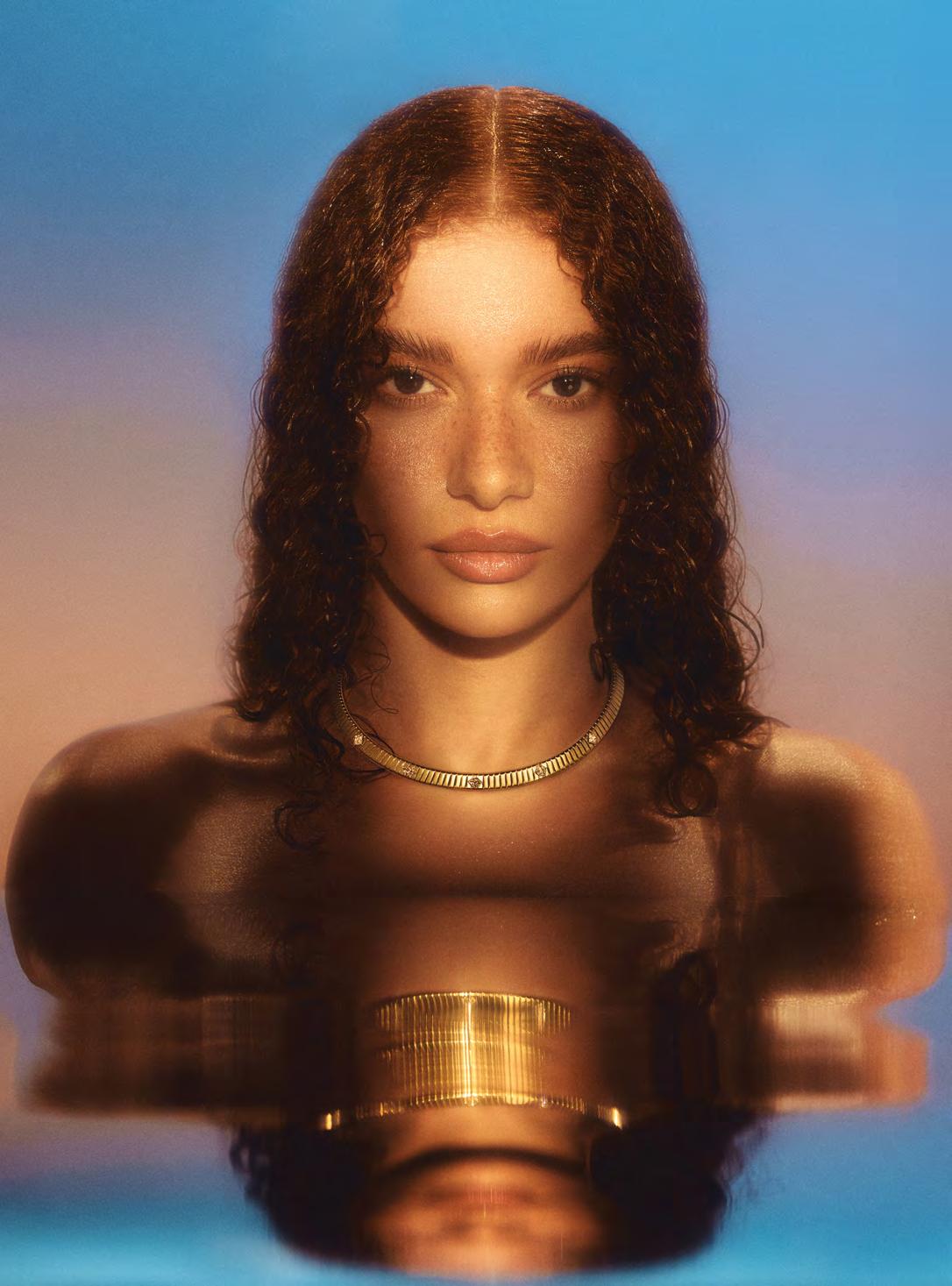
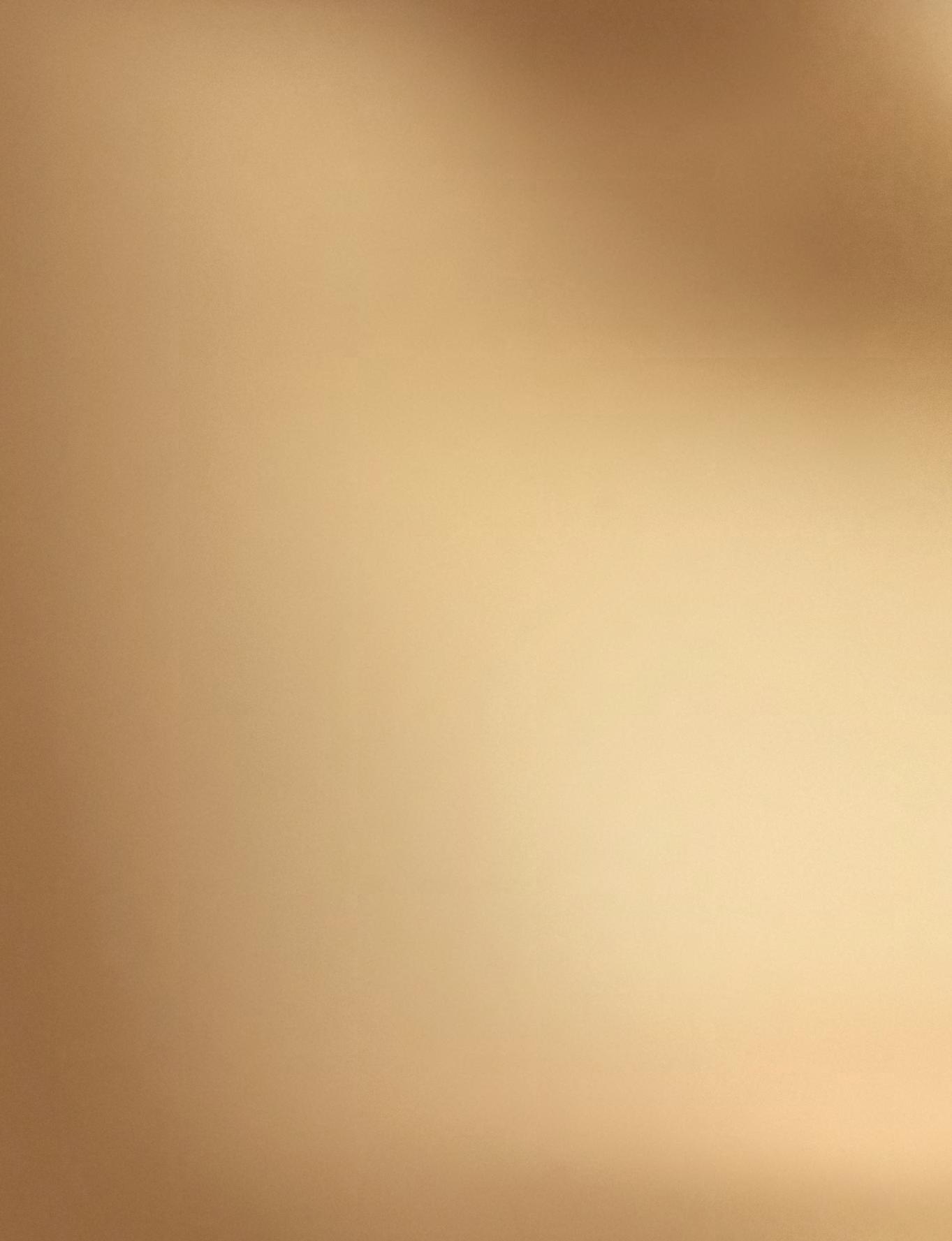
The fashion industry is continuing to evolve for the better, but El Mahmoud believes there is still more work to be done. “The industry has definitely made significant strides in terms of diversity and inclusion. It’s encouraging to see this shift, but I believe there is still work to be done in embracing a wider variety of characteristics. I would love to see more emphasis on showcasing diverse individuals who are truly passionate and dedicated to their craft, no matter their appearance. There’s so much untapped potential, and continuing to push for inclusivity and recognition across all areas will make the fashion industry even more dynamic and rich in diversity.”
Beyond the runway, El Mahmoud emphasizes the importance of representation not just in front of the camera, but also into production, “True representation in fashion goes beyond who is seen on the runway; it’s also about the voices shaping the industry. While models play a crucial role in bringing designs to life, representation should also extend behind the scenes. Cultural influences have always played a big role in fashion, inspiring trends and new designs. Recognizing and celebrating these influences in a thoughtful way, while creating opportunities for designers and creatives from diverse backgrounds, can lead to more authentic storytelling and greater innovation in the industry,” she says.
With a bright future ahead, El Mahmoud’s goals extend beyond modelling. “My long-term goal in the fashion industry is to build my name as a model, establishing a strong presence and becoming a recognized figure. Alongside my modelling career, I aspire to become a successful entrepreneur, leveraging the platform and experience I gain to create something meaningful. I see modelling as just the beginning, and I’m excited to explore business ventures that align with my passions, whether it’s in fashion, beauty, or other creative industries. Ultimately, I want to inspire others to pursue their dreams and know that anything is possible with hard work and dedication.”



“Always embrace yourself and your uniqueness. Remember, you are you, and there’s no one else like you.”

Her advice for aspiring models? “My number one piece of advice is to build a community of people who support you and truly have your back. Modelling is a learning process, and it’s important to have people around you who can guide you through it, help you understand the industry, and help you differentiate between what’s right and wrong. Along with that, always embrace yourself and your uniqueness. Remember, you are you, and there’s no one else like you. Also, never be discouraged by setbacks. Keep your mind focused on your goal, and take it day by day. Every step you take, no matter how small, brings you closer to your dreams. Keep pushing, and trust the process.”
Outside of modelling, El Mahmoud finds joy in exploring creative outlets. “I’m passionate about beauty, fashion, and the creativity they allow me to explore. I’ve been working on something in the beauty field that I hope to share soon. I’m excited to share this journey and inspire others along the way.”
As she continues to rise, Rayan El Mahmoud is not just a model, she’s a symbol of perseverance, ambition, and authenticity. With each stride she takes, she is redefining the narrative of modern fashion, proving that dreams are within reach for those who dare to chase them. ■

Andrew Makadsi
In a world where music, style, and storytelling collide, where high fashion meets underground music, and nostalgia melds with futurism, Andrew Makadsi has done it all. Raised in Zahle, Lebanon, and shaped by a background in Film and Communication, his path has been anything but conventional. From working at luxury fashion houses like Chanel and Alexander Wang to serving as Beyoncé’s Creative Director and being co-founder and Sonic Architect of Function NYC, Makadsi’s journey is a testament to creative fearlessness.
But his vision goes beyond aesthetics. Having immersed himself in multiple creative disciplines, he speaks a language stronger than words; one of design, sound, and creative direction, seamlessly bridging different mediums. Now, he’s making his mark on the dance floor, merging his creative worlds into one. With Function NYC, he fuses his Arab roots with his deep connection to techno, crafting a space where music, identity, and culture become one. More than just a party, Function NYC is an immersive sound experience, and an invitation to Makadsi’s world, where modernity meets nostalgia, and every beat reflects the many influences that shape him.
photography JEAN TOIR
styling TOBIAS ULMER
words OMAIA JALLAD
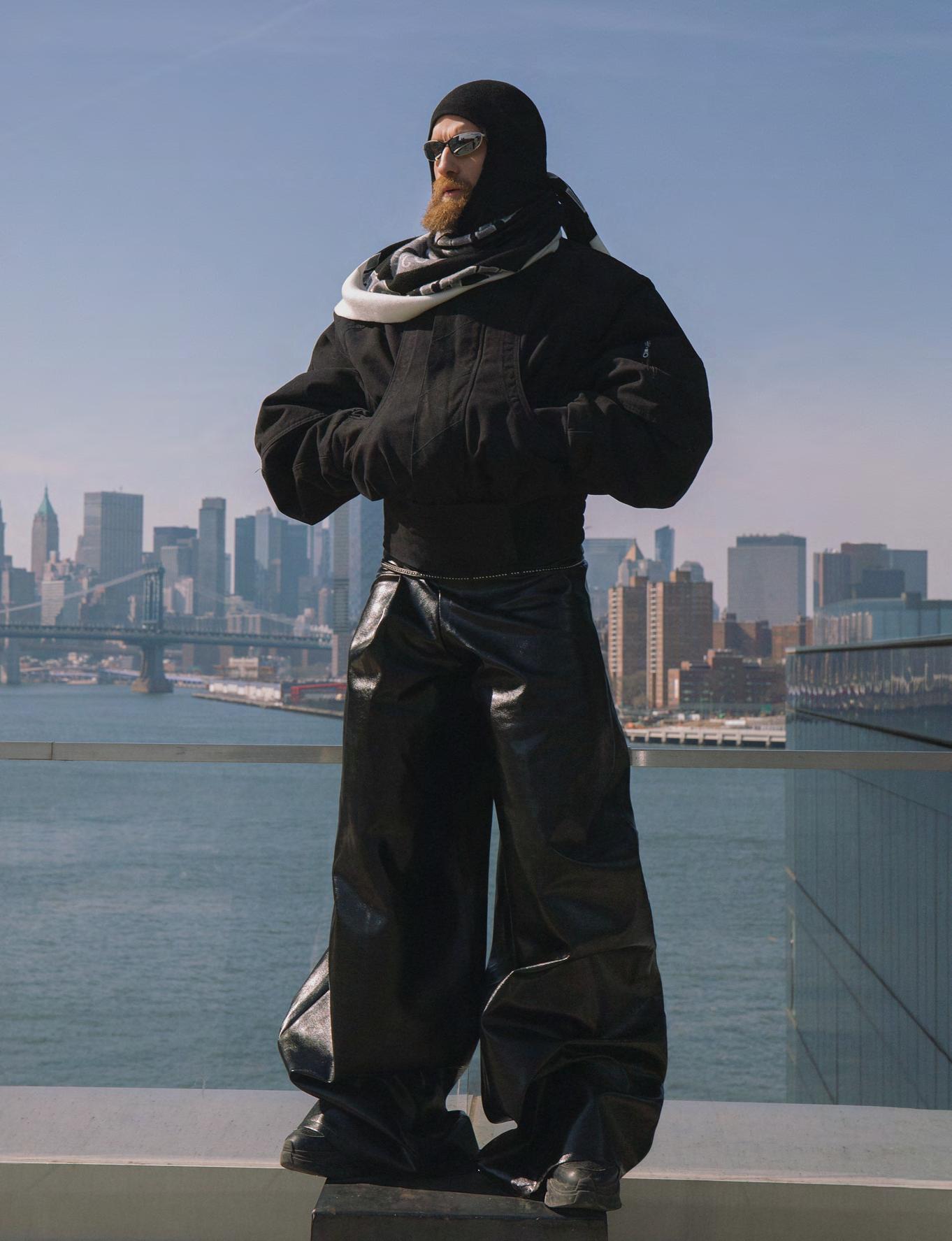
“My experience in fashion taught me how to create visuals that not only catch the eye but also captivate the mind.”
What first drew you to the arts, and how did growing up in Zahle, Lebanon, influence the creative path that led you to where you are today?
I was always attracted to colours and movement. My favourite class in school was art class. My teachers always saw it in me and helped me see it in myself. I spent most of my childhood sketching and painting and watching TV. Zahle is such a romantic city. The streets are packed with magic and a poetic essence. We always cherished our hometown creatives like Said Akl and Najwa Karam, we take so much pride in our arts and culture. That gave me the confidence and led me to pursue the creative path that seemed a little risky at the time.
How did your studies in film and communication at The University of Toledo influence the way you approach creative direction and music?
My time at UT was truly special. We learned the art of filmmaking hands-on—shooting with Bolex cameras, editing on flatbeds, experimenting with optical printing, and mastering various analogue techniques. These classes and projects instilled in me patience and a deep sense of intention.
I was drawn to multiple mediums and wanted to explore them all. I took graphic design, creative writing, and film theory classes. I worked on a newscast while also making experimental films. I had my hands in everything, unafraid to fail, free from the pressures of social media mania.
Learning across so many disciplines gave me a fundamental understanding of how things are made. Now, when I collaborate with my design team and crew, I speak their language and I can articulate my thoughts—I’ve been in the trenches, and I know what I’m talking about.
You started in fashion, working with brands like Chanel and Alexander Wang. How did that industry prepare you for your later work in music and visual storytelling?
My experience in fashion taught me how to create visuals that not only catch the eye but also captivate the mind. It’s a dynamic, expressive medium that thrives on bold ideas. Unlike other industries that can feel restrictive, fashion allows artists to dream freely and get freaky.


What project that pushed you out of your creative comfort zone the most? Why?
I was working with Chloe x Halle on Ungodly Hour when the pandemic hit, throwing everything into uncertainty just as we were preparing for the album’s release. The world shut down, and we were all stuck at home, forced to rethink how to bring the music to life in a time of isolation. With everything against us, my team and I built something truly iconic—an era that transcended limitations and redefined what was possible. I couldn’t be prouder of the work we created.
Can you walk us through your creative process? How does an idea first take shape, and what steps do you take to bring it to life?
I’ve always been inspired by David Lynch’s approach to creativity. He once said, “Ideas are like fish. If you want to catch little fish, you can stay in the shallow water. But if you want to catch the big fish, you’ve got to go deeper. Down deep, the fish are more powerful and more pure. They’re huge and abstract. And they’re very beautiful.”
I take that to heart. I let my mind dive into the wild, the strange, and the unknown, searching for those big, untamed ideas. When something strikes, I capture it—whether by writing it down in detail or recording an audio note—making sure no moment of inspiration slips away.

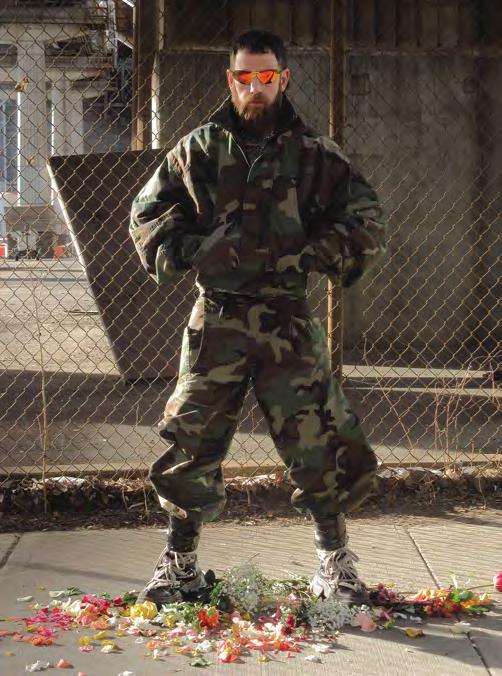
How do you process the shift between personal intention and public interpretation within your work?
Once the work is out in the world I move on to the next. I rarely give myself time to sit with it—to process the feedback. That’s the beauty of art. It’s a message in a bottle, sent out with no control over where it drifts or who it reaches.
In today’s world, you could slap an AirTag on that bottle, track its every move, and watch in real-time who finds it and how they react. But that feels cold, clinical—stripping away the mystery, the romance. Art is meant to be discovered, interpreted, and set free.
Your journey with Beyoncé started during the On The Run Tour. How did that opportunity come your way?
My friend and ex-colleague Nathaniel Brown brought me over.
How do you balance personal artistic expression with commercial projects that have specific brand or artist requirements?
I kill my ego once I’m working on a commercial project. I’m only bringing my skills and experience. I allow myself to be vulnerable just enough to keep my sensibility sharp.
How did you get into DJ-ing, and what role does it play in your artistic identity?
I always loved curating music and setting the vibe at the little parties we threw as kids—I swear I’ve been a DJ since I was four years old. Music has always been at the heart of my family. Every Saturday, my parents would host friends, and my dad would play the keyboard and sing, filling the house with sound and energy.
From an early age, I understood the key elements of a great party, and music was always at the core. DJ-ing isn’t just about playing tracks; it’s a way for me to weave together different experiences, influences, and emotions—creating an identity that transcends time and space.
As the co-founder and resident DJ of FUNCTION NYC, what inspired you to create it, and what vision did you have for the space?
I drew inspiration from dance floors around the world, each one a universe of its own. At the time, I was working on the Renaissance album, and my love for dance music and the underground scene kept deepening. My vision was to merge different worlds on the dance floor through sound—blending my Arabic roots with my techno and house upbringing. I wanted the music to break boundaries, to create a space where people could feel liberated, untamed, and completely free. I felt disruptive and fresh.
What’s the most memorable moment you’ve experienced at one of your events? There’s plenty of memories. But I always giggle when I remember James Franco pulling up to the first function…
Your DJ sets often incorporate elements of activism and cultural storytelling. How do you use music as a platform for deeper conversations?
I’ve always been inspired by Ziad Rahbani’s ability to weave political commentary into his work. When I produce music and DJ, I try to channel that same energy—ensuring my sound isn’t just an escape, but a statement. Sometimes the message is subtle, other times it’s direct, even confrontational. I’m not afraid to be conventional when it matters, to use music as a platform for uncomfortable truths that need to be heard.
“I let my mind dive into the wild, the strange, and the unknown, searching for those big, untamed ideas. When something strikes, I capture it.”

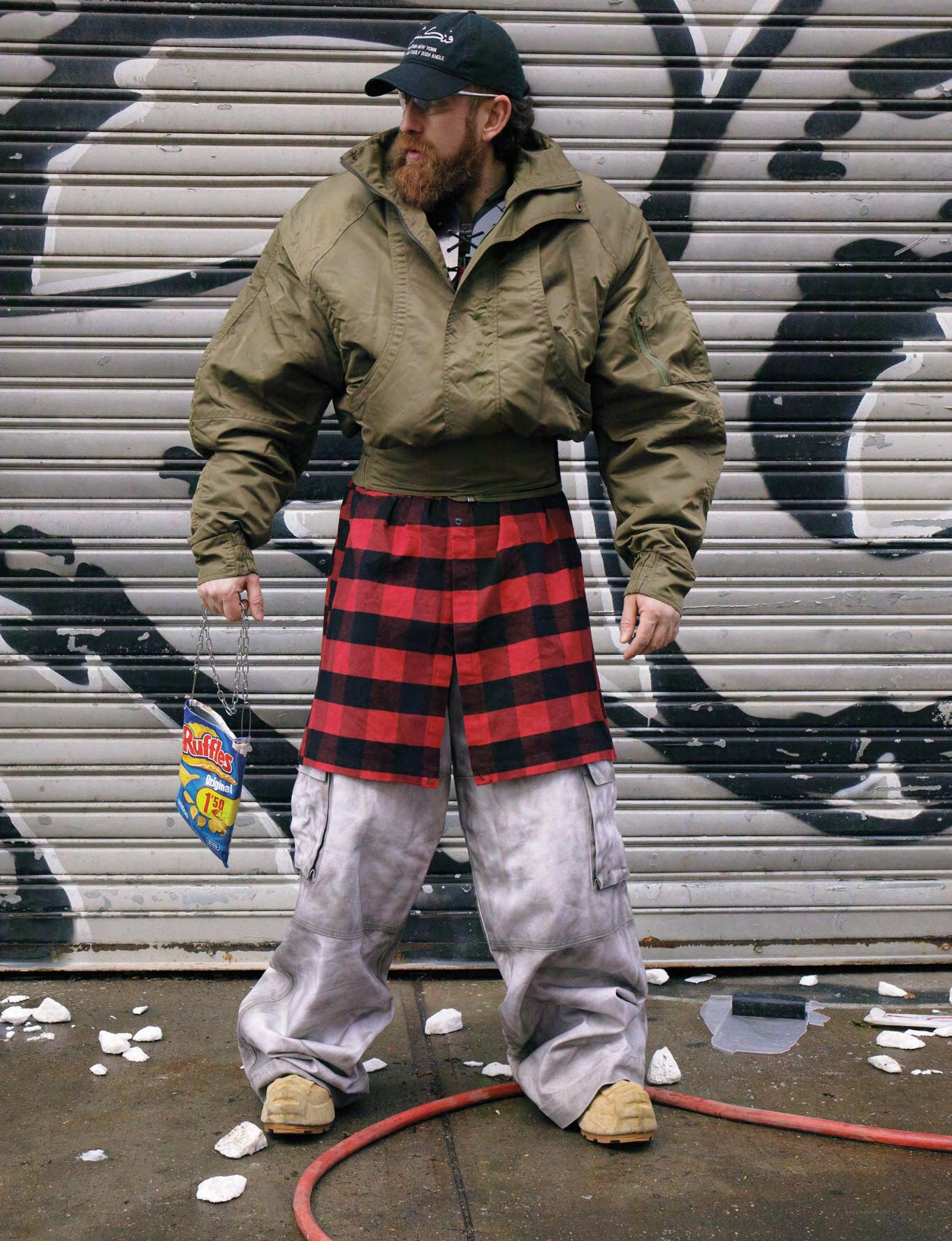
“I wanted the music to break boundaries, to create a space where people could feel liberated, untamed, and completely free. I felt disruptive and fresh.”
“DJ-ing isn’t just about playing tracks; it’s a way for me to weave together different experiences, influences, and emotions.”
As someone who straddles different cultural worlds—Lebanon, the US—how does that duality shape your sound and the music spaces you create?
Growing up between Lebanon and the US has deeply shaped my sound and the spaces I curate. It’s a fusion of contrasts—rich traditions meeting underground rebellion, nostalgia blending with futurism. In the spaces I create, I aim to bring these worlds together—melding the warmth and storytelling of Middle Eastern music with the raw energy of club culture. It’s about creating a dance floor where people from all backgrounds can connect, where cultural boundaries dissolve, and where music becomes a universal language of liberation.
How do you foster a sense of belonging within FUNCTION NYC, and what do you hope people take away from the experience beyond the music?
In such hard and dark times, my goal is to create a safe place for everyone to enjoy and feel at home. A lot of us are away from our families and spend our weekends on the dancefloors escaping harsh realities. I always want people to leave feeling wholesome, inspired and empowered.
Your work blends high fashion, music, and visual storytelling seamlessly. How do you navigate these different creative disciplines?
For me, fashion, music, and visual storytelling are all part of the same creative ecosystem— they feed into each other and create a world that feels immersive and complete. I don’t see them as separate disciplines but as different tools to express a singular vision.
If you could create a dream FUNCTION NYC line-up featuring three artists—dead or alive— who would they be?
Sophie, Arca and Honey Dijon.
If you could go back and talk to your 19-year-old self before moving to the US, what’s one thing you would say?
Don’t shave your hairy chest!!
What’s one non-artistic skill you have that most people don’t know about? I make an amazing lentil soup. ■

photography EMILY WHITE styling EMI PAPANIKOLA
Step into a world where sleek 70’s corporate cool meets the eerie surrealism of David Lynch. This editorial drips with the razor-sharp edge of American Psycho, wrapped in the haunting glamour of high fashion. Power, desire, and unease collide in a cinematic fever dream. Welcome to beautiful, controlled chaos.









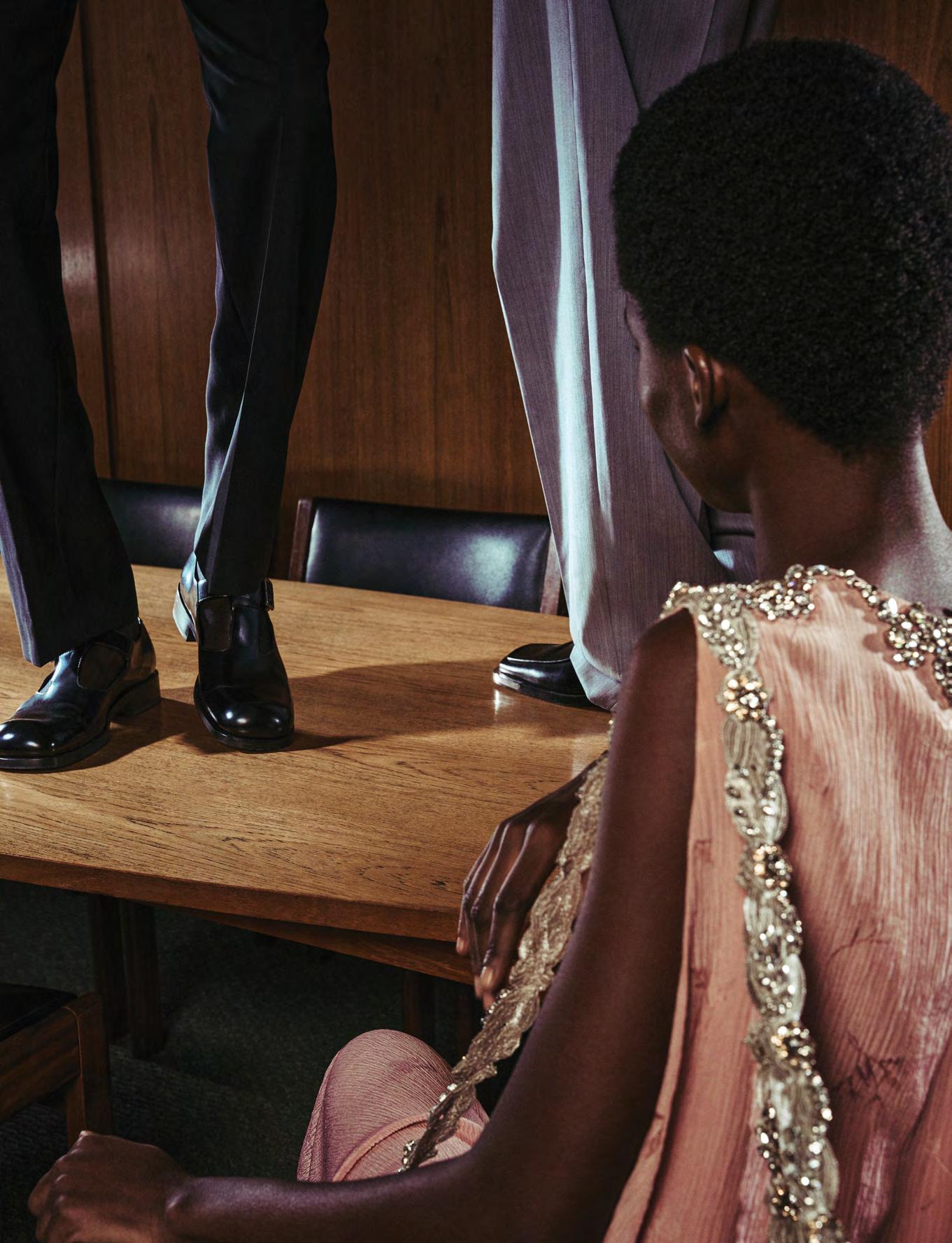
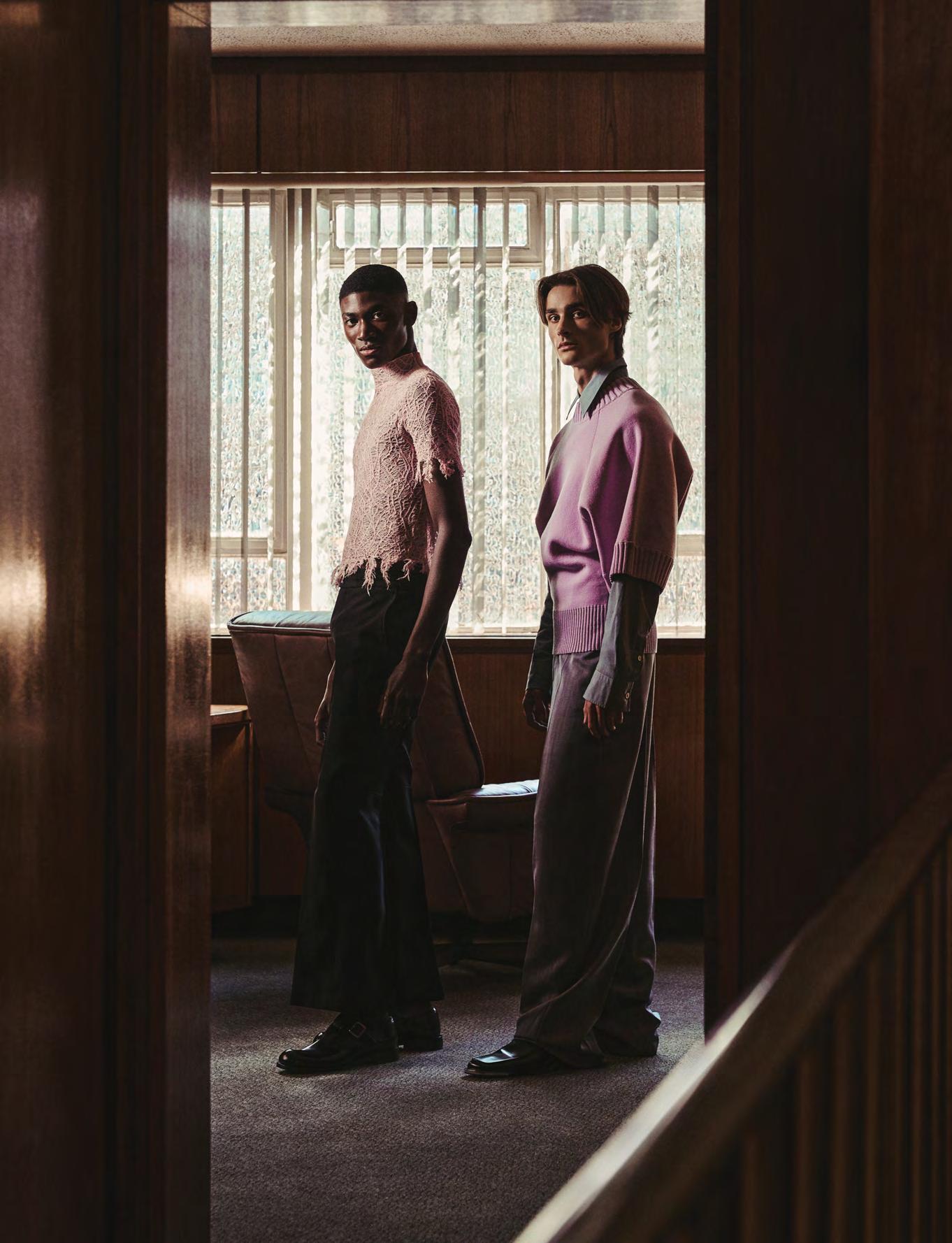

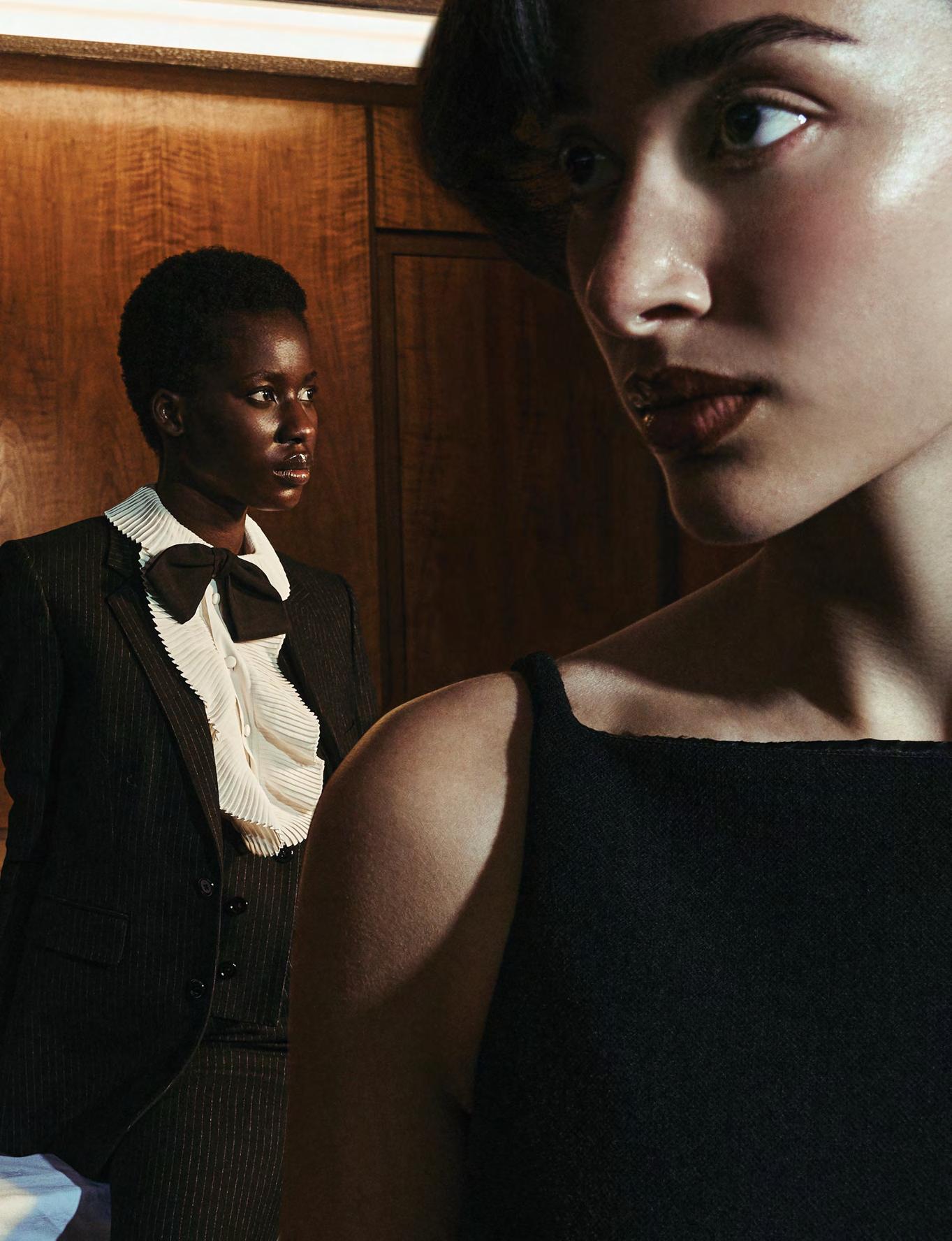
Trapped in expectation, confined by conformity—fashion becomes the escape. This editorial explores the tension between restriction and self-expression, using bold silhouettes, unconventional textures, and boundary-pushing styling to break free from invisible walls. It’s a visual rebellion, proving that true style isn’t about fitting in—it’s about breaking out.
photography LUIS AYORA
styling EMANUELE CARRERA
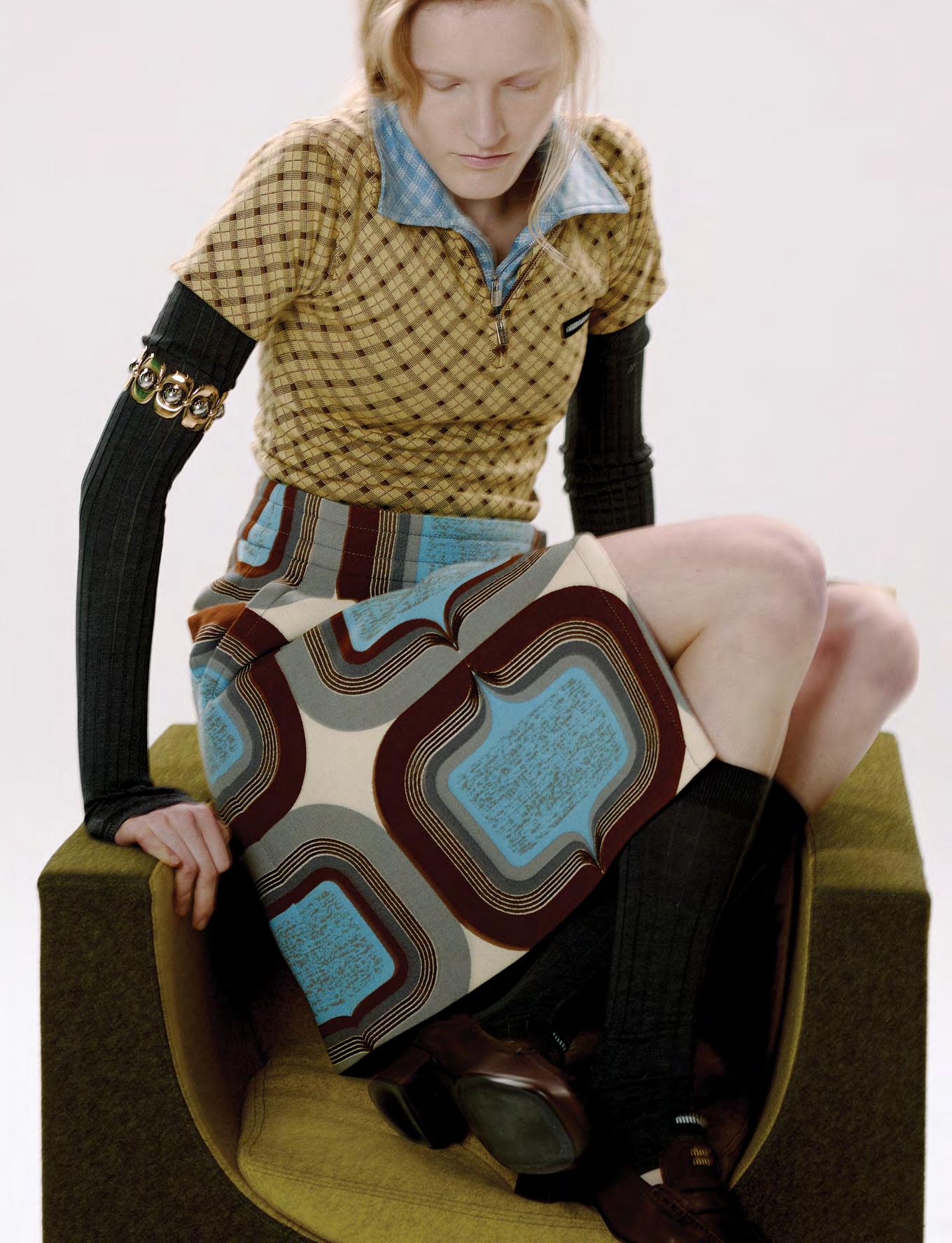

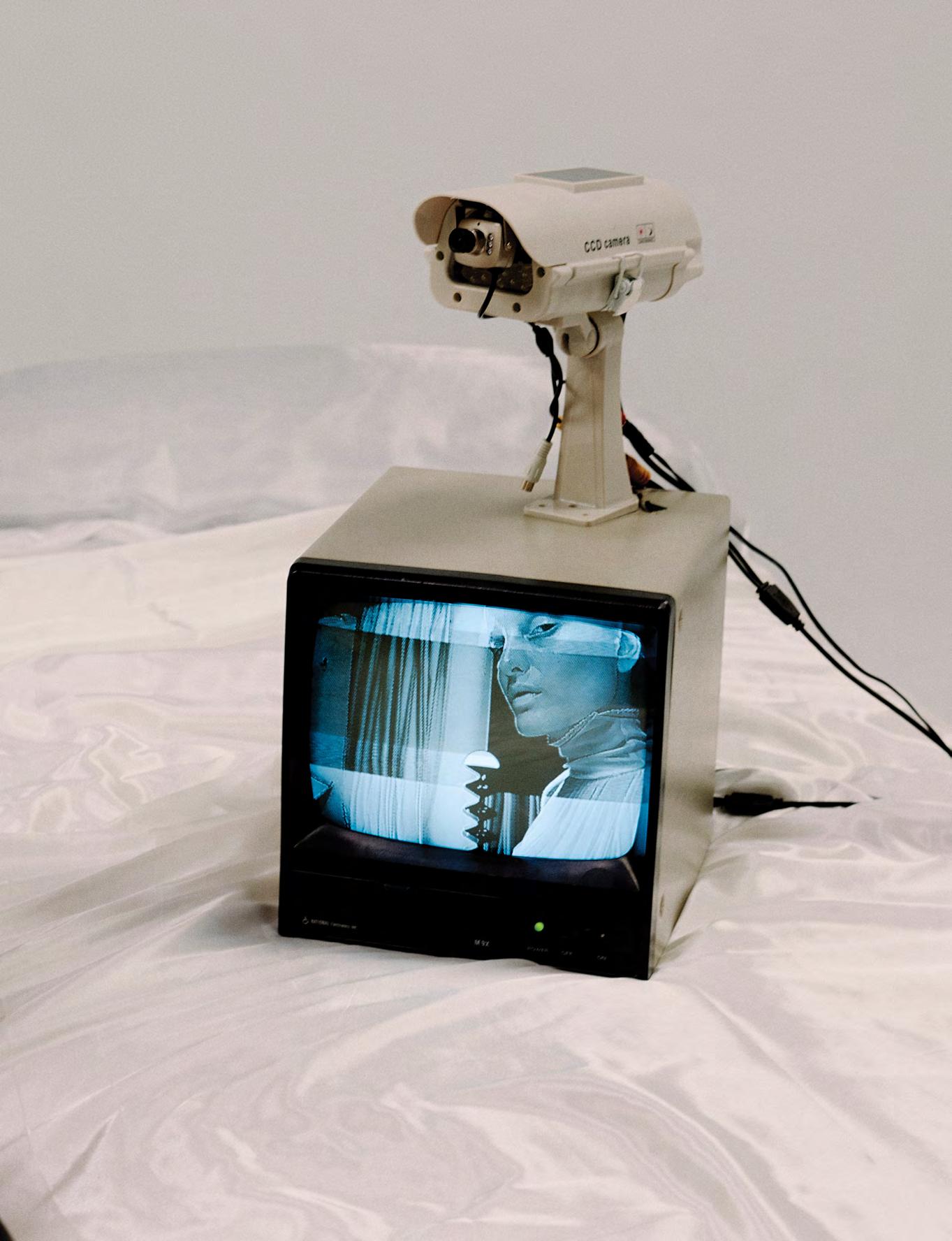
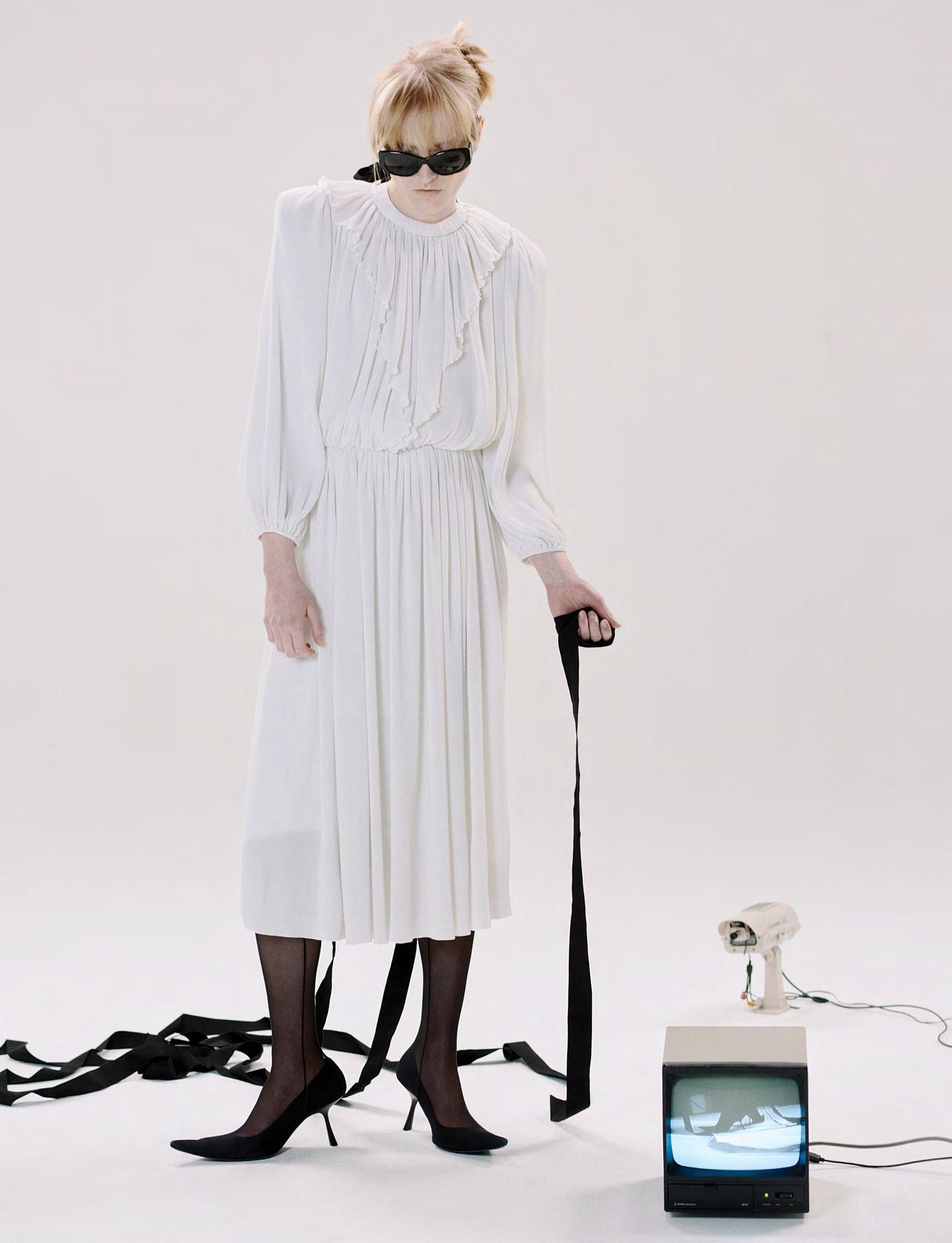






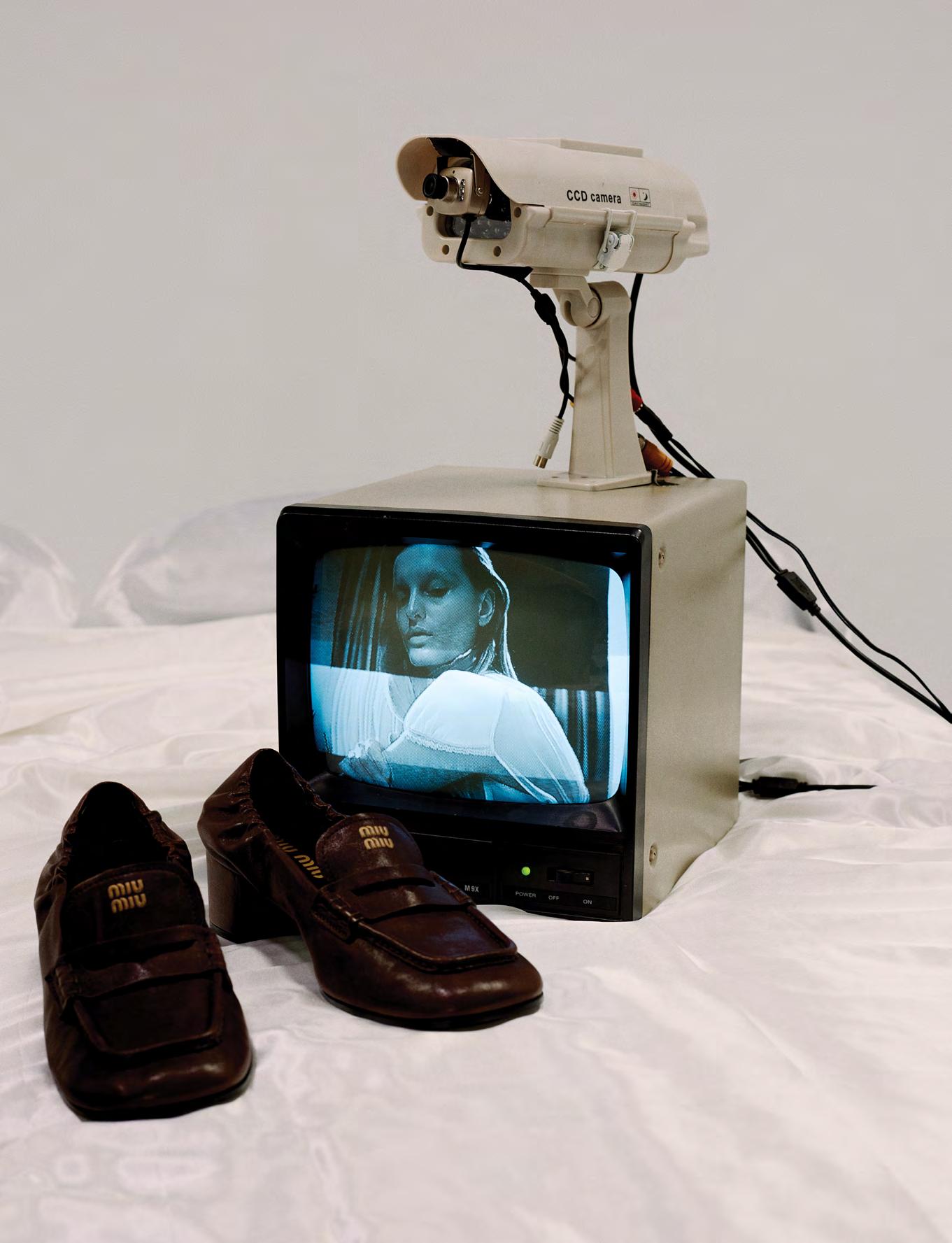

casting
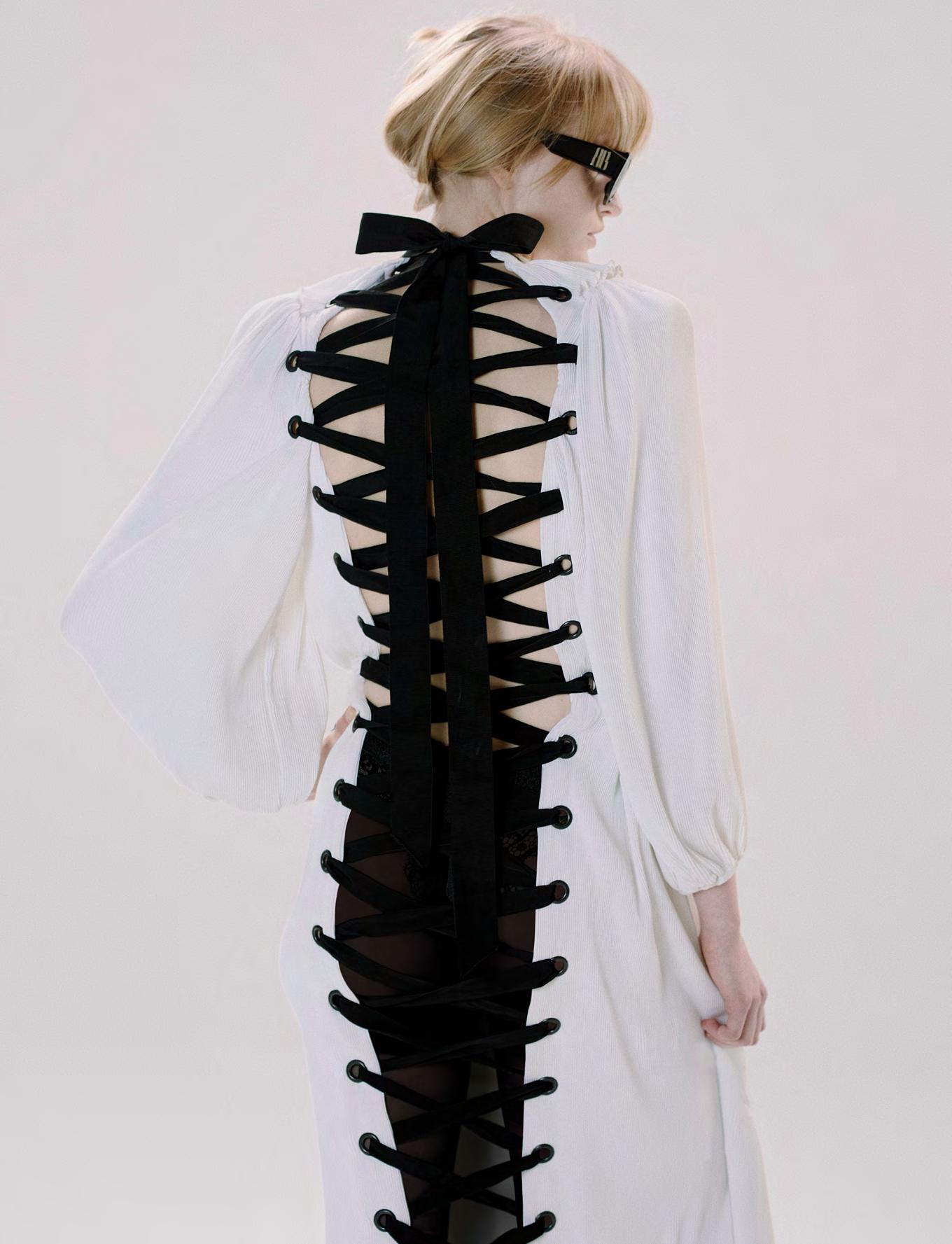
ROSIE SLAWIŃSKA at TREND MODEL MANAGEMENT; makeup and hair MABEL BOON; set design MARCIA
model
retoucher JOAN CALSINA; set design assistants DANIELA SUAREZ DE LOS RIOS, LINA FERNANDA
The Islamic Arts Biennale continues to blaze a trail for the Kingdom’s art scene.

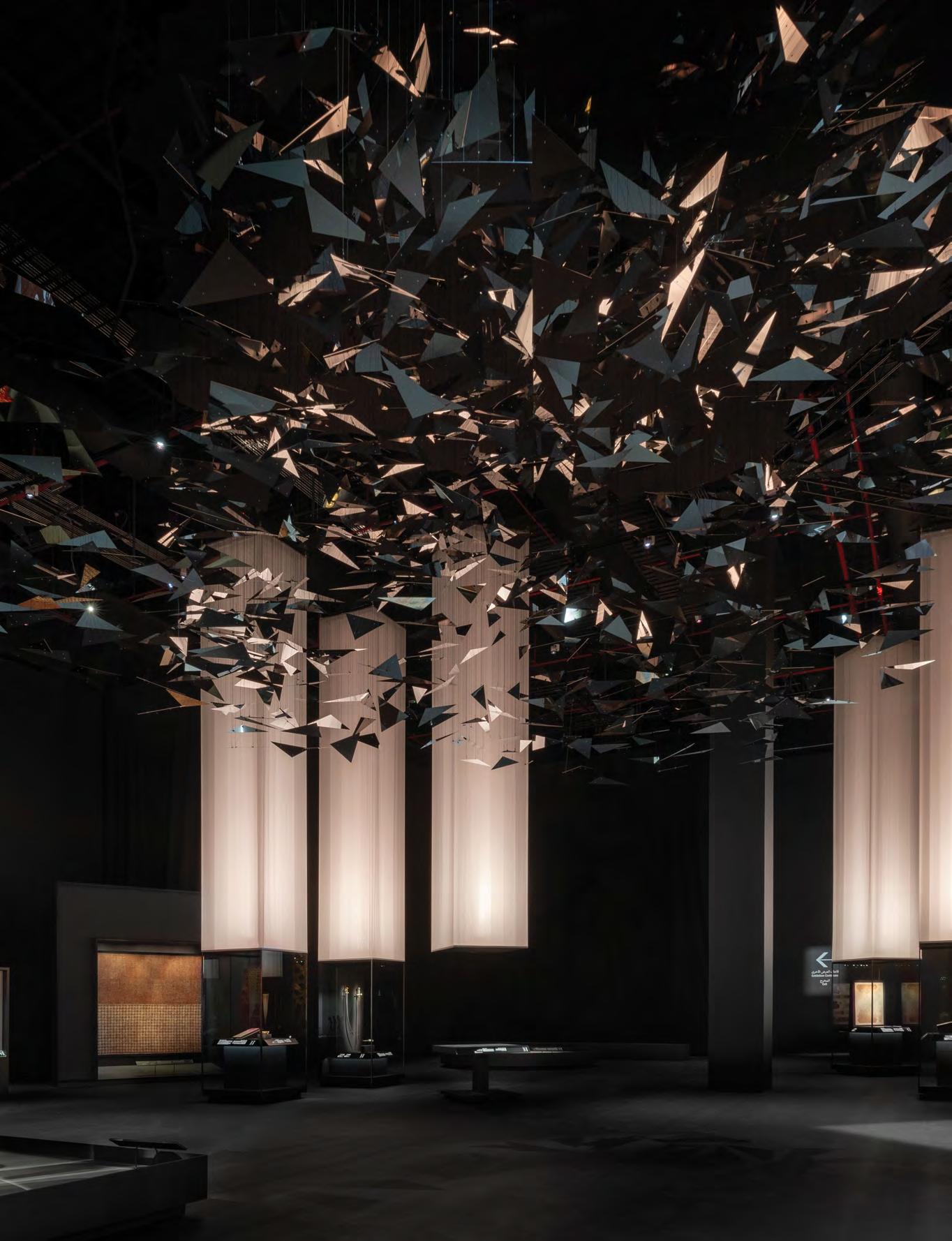

Saudi Arabia has undergone a radical cultural revolution in the past decade, adopting contemporary art at an unprecedented level. This revolution is headed by the Islamic Arts Biennale, a unique event that marks the richness and vibrancy of Islamic visual cultures and establishes the Kingdom as a global hub of cultural discourse. Organized at Jeddah’s historic Hajj Terminal, the Biennale is an expression of the country’s commitment to bringing into being a new approach to artistic exchange—one that bridges tradition and innovative creativity.
The inaugural Islamic Arts Biennale, which began in 2023, created a place where traditional Islamic beauty met with contemporary understanding, offering a comprehensive and immersive experience. Even the site of the Biennale is laden with meaning: the Hajj Terminal, an area steeped in spiritual and historical richness, symbolizes the intersection of pilgrimage, movement, and artistic reflection.
This year’s edition builds on that foundation, presenting a provocative collection of artworks that thematically explore dimensions of belief, migration, memory, and materiality. It features artists from the wider Muslim world, along with curators and scholars, to contribute to critical debate on the dynamic vocabulary of Islamic art.
The Biennale is not an isolated phenomenon; it is a symbol of a wider trend. Saudi Arabian cultural life is experiencing a boom due to Vision 2030, an initiative to diversify the economy and place culture at the forefront of national identity.
From the Diriyah Contemporary Art Biennale to AlUla’s ambitious arts programs, the Kingdom is spending big on building artistic talent and infrastructure. The establishment of cultural commissions, museum expansions, and the introduction of the Saudi Art Council’s latest projects reflect the country’s ambition to become a major player in the global art scene.
Apart from national efforts, the broader Gulf region itself has also positioned itself as a major force within the international art scene. The Sharjah Biennale, arguably the most prominent art event in the region, continues to innovate with its avant-garde approach to curation and socially responsive practice. Qatar and the UAE, as well, have been long devoted to building cultural institutions that are appealing to global audiences. The overlap of these events exemplifies a growing need for the study of art from the Middle East and North Africa (MENA) and reflects an alternative to the traditionally Western-centric art histories.
Institutional support for arts has had an effect on organically growing commercial arts. In a pioneering move, Christie’s recently opened in Saudi Arabia, which marks a new era in the area’s art market. Even as the auction house has had an established presence in Dubai for many years, its first appearance in Saudi is an indicator of growing collector appetite and an evolving international outlook toward Saudi Arabia as a valid market for quality art. This points towards the broader movement away from being merely a consumer of art toward becoming a producer of cultural capital with global appeal.

“Islamic art is not a relic of the past but a living, evolving force shaping contemporary discourse.”
It is the artists themselves who form the focal point of this year’s Biennale—artists who challenge, redefine, and reaffirm the complexity of Islamic art traditions. Their work occupies a variety of mediums, including sculpture and textiles, installation and performance, and each one reflects their own attitude towards faith, history, and materiality. Here are a number of artists whose contributions are of true significance.
Abdelkader Benchamma, born in 1975 in Mazamet, France, is a distinguished artist celebrated for his intricate and expansive drawing installations. Residing in Paris and Montpellier, Benchamma’s work delves into the realms of cosmology, metaphysics, and the transient nature of reality. His artistic journey is marked by a commitment to the medium of drawing, employing both meticulous strokes reminiscent of engraving and grand, sweeping gestures that transform spaces into immersive experiences.
For the Biennale, Benchamma unveiled “Between Each Sky,” a monumental installation commissioned specifically for the event. This piece encompasses a 10.5-metre-high wall adorned with ink and charcoal drawings, complemented by two projected animations. The installation invites viewers to contemplate the vastness of the cosmos and humanity’s place within it, reflecting on themes of spirituality and the infinite.
Benchamma’s artistic philosophy centres on the exploration of unseen forces and the boundaries between the tangible and intangible. His works often challenge perceptions of space and reality, creating environments where the physical and metaphysical intersect. Through “Between Each Sky,” he continues this exploration, offering audiences a space to reflect on the profound connections between the celestial and the terrestrial.
Nour Jaouda, a Libyan-born artist based between Cairo and London, is renowned for her evocative textile-based artworks that explore themes of cultural mobility, identity, and the aesthetics of migration. Her educational background includes a BFA from the Ruskin School of Art, Oxford University, and an MA in Painting from the Royal College of Art, London.
At the Biennale, Jaouda presents her installation titled “Before the Last Sky.” This work features three hand-dyed cotton textiles draped to represent integral postures in Islamic prayer: ruqu` (bowing), sujud (prostration), and julus (sitting). Oriented towards Makkah al-Mukarramah, the installation examines how portable prayer mats create temporary sacred spaces, transforming mundane floors into sanctified grounds and acting as thresholds between the material and spiritual realms.
Jaouda’s practice often involves deconstructing and reconstructing cultural motifs, found images, and historical references. Through her work, she challenges conventional notions of identity formation, presenting narratives that are fragmentary, evolving, and deeply rooted in the politics of cultural amnesia. Her participation in the Biennale underscores her significant role in contemporary art dialogues surrounding Islamic culture and spirituality.
Raya Kassisieh, born in 1991, is a Jordanian artist whose multidisciplinary practice delves into the politics of the body, offering a deeply personal interrogation of form. With a foundation in textiles and patternmaking, she adeptly transitions from working with soft materials to sculpting with mediums such as steel and copper, creating intricate, nature-inspired pieces that draw from her heritage.
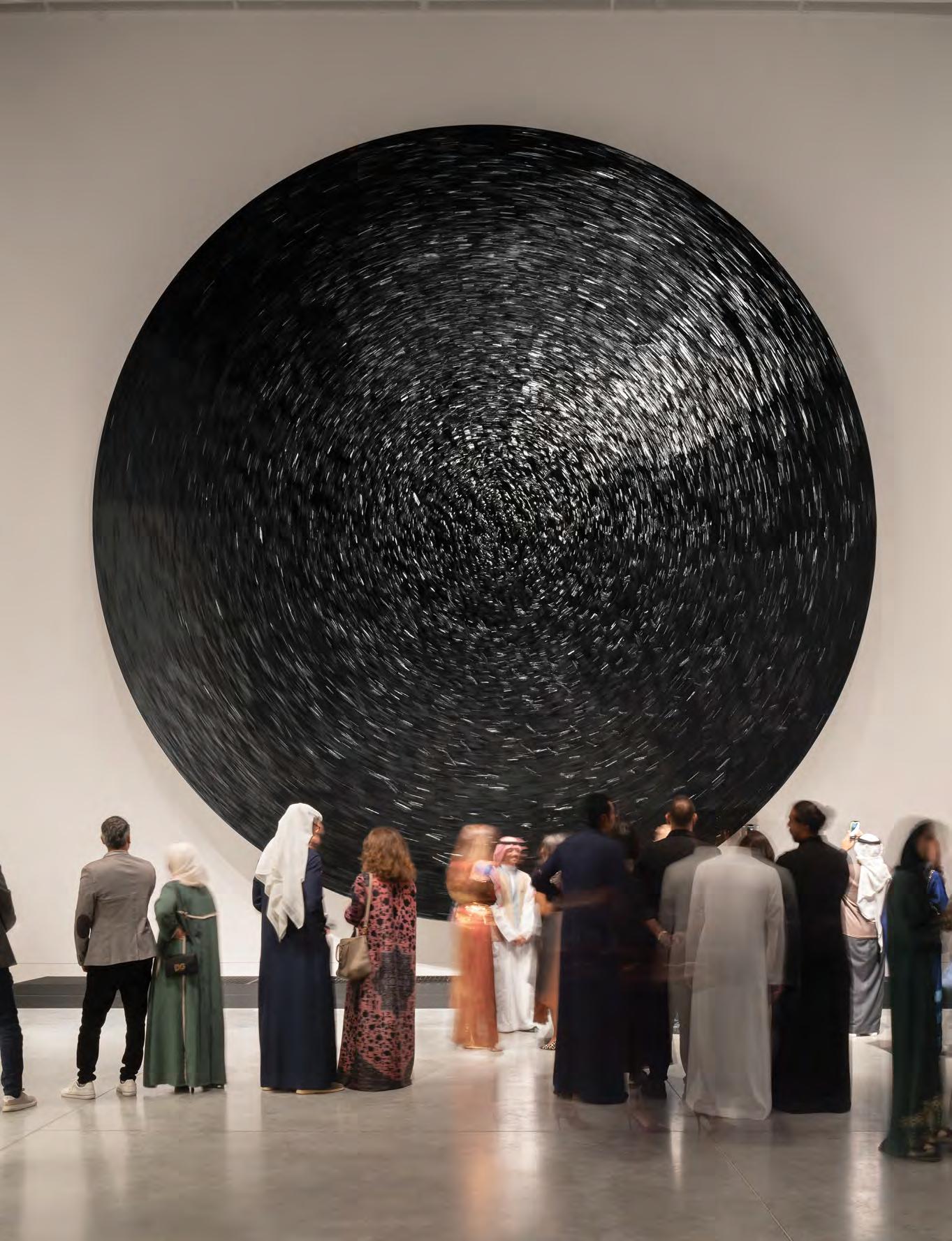


“The Islamic Arts Biennale is an expression of Saudi Arabia’s commitment to bridging tradition and innovative creativity.”
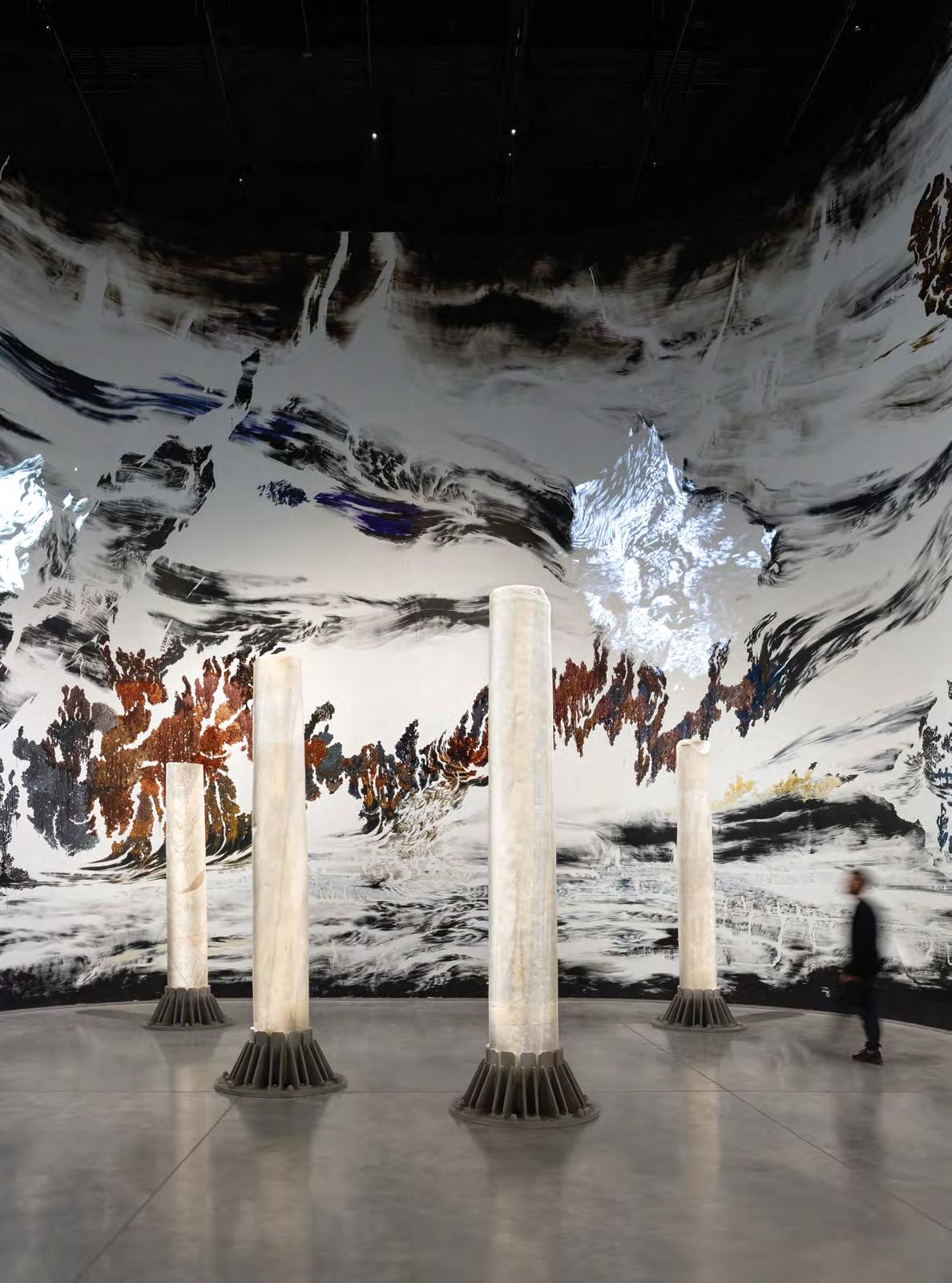
In 2024, Kassisieh earned her MA in Sculpture from the Royal College of Art in London. Her artistic journey has been marked by a dynamic exploration of materials, challenging contemporary perspectives through personal narratives.
At the 2025 Islamic Arts Biennale in Jeddah, Kassisieh unveiled her installation titled “ حدد Heavy Petals.” While specific details of this piece are limited, its inclusion in the Biennale underscores her engagement with themes central to Islamic art and culture.
Kassisieh’s work proposes that the body serves as the ultimate tool for reimagination and creation, articulating silent dialogues on autonomy and identity. Her practice captures the dynamism between her evolving interest in materials and a personal exploration that challenges contemporary norms.
Through her art, Kassisieh invites audiences to reflect on the complexities of identity, heritage, and the body’s role in expressing autonomy, making her participation in the Islamic Arts Biennale a significant contribution to the discourse on contemporary Islamic art.
Bashaer Hawsawi, born in 1992 in Jeddah, Saudi Arabia, is a visual artist renowned for her innovative approach to cultural and community identity. Her work delves into family customs and traditions, reimagining them through both aesthetic and spiritual lenses. Hawsawi’s artistic journey is marked by a commitment to experimentation, design, and research, reflecting her dedication to exploring the depths of cultural expression.
For the 2025 Islamic Arts Biennale, Hawsawi has unveiled a significant outdoor installation titled “My Gift to You Is a Garden”. This piece is part of the AlMidhallah exhibition component and draws on her interest in cultural rituals and the human relationship with the environment. Constructed using brooms, the installation evokes a sense of domesticity and tradition, while the sweeping motion and repetition suggest themes of renewal, purification, and the cyclical nature of life.
Hawsawi’s work invites reflection on the role of rituals and everyday objects in shaping cultural identity. “My Gift to You Is a Garden” speaks to the idea of creating sacred or meaningful spaces from the mundane, symbolizing both personal and collective acts of remembrance, cleansing, and a connection to place. Through this work, Hawsawi highlights the enduring relevance of cultural practices, inviting the viewer to engage with the intergenerational transmission of values and memories.
Arcangelo Sassolino, born in 1967 in Vicenza, Italy, is a renowned artist celebrated for his kinetic sculptures and installations that explore themes of transformation, time, and the fragility of existence. Known for his use of industrial materials and complex mechanisms, Sassolino’s works often embody a delicate balance between stability and collapse, drawing on the tension between opposing forces to create immersive, thought-provoking experiences. He is the only non-Muslim artist invited to participate in the Islamic Arts Biennale, a distinction given due to his ability to engage deeply with themes of time, transformation, and the impermanence of life—concepts that resonate profoundly within both Islamic philosophy and the broader human experience.
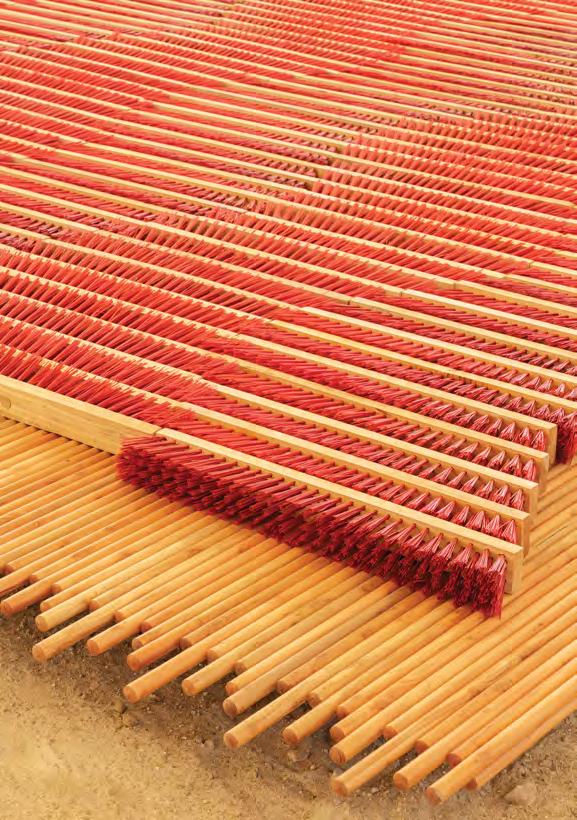
For the Biennale, Sassolino presented “Memory of Becoming”, a site-specific installation that spans an impressive eight metres in diameter. At its core is a vast spinning disk coated with high-viscosity industrial oil, creating a dynamic dance of movement and stillness. The constant motion of the disk, along with the gradual dripping of oil onto the floor, serves as a powerful metaphor for the passage of time and the inevitable process of decay.
Sassolino’s work invites reflection on the cyclical nature of existence, the resistance against impermanence, and the constant state of becoming. By utilizing the medium of oil, Sassolino also draws on the region’s deep connection with the resource, imbuing the piece with cultural resonance. Memory of Becoming challenges the viewer to confront the fragility of life and embrace the fluidity of transformation.
The Islamic Arts Biennale is a mission statement. It announces that Islamic art is not a relic of the past, but a living, evolving force which continues to shape contemporary discourse. Saudi Arabian art, previously comparatively insular, is now fully engaged with international debate on cultural heritage, art development, and the social role of art. As the Biennale becomes an institution, it is sure that Saudi Arabia’s entry into the arts world is not a fleeting trend but a well-thought-out reconceptualization of its identity. With each Biennale, show, and program, the Kingdom is not only redefining its place in the art world but also taking part in a broader reorganization of the global art world— one in which Middle Eastern stories are no longer on the margins but at the centre of contemporary artistic discussion. ■
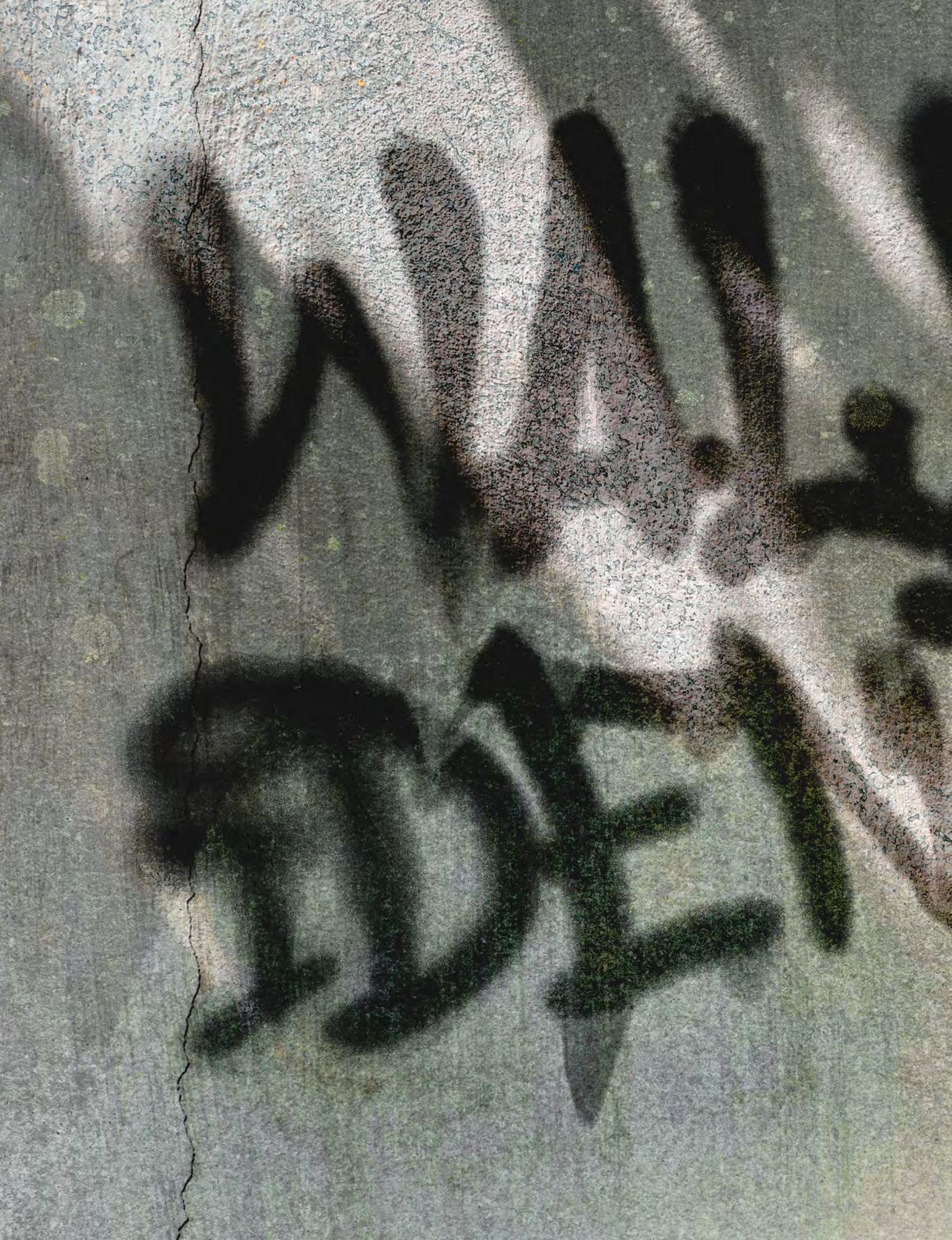

Graffiti is a powerful medium of expression, a bridge between culture and rebellion, art and activism. In the Middle East, where history and modernity often collide, graffiti artists are redefining public spaces, infusing them with identity, emotion, and narrative. From Egypt to Lebanon, Saudi Arabia to the UAE, these artists are shaping a new visual language that speaks to their generation. Each of them brings a unique perspective, influenced by their surroundings, heritage, and personal journeys. Here are six graffiti artists making their mark in the region.
words NADINE KAHIL

Saudi Arabian artist DAKN is at the forefront of the region’s evolving street art movement, pushing boundaries with his fusion of graffiti and Arabic calligraphy. His journey into graffiti began with an early love for street art, which deepened as he explored the field and connected with the graffiti community. “My style evolved as I delved deeper into graffiti, understanding its essence and the importance of developing a unique style,” he explains.
For DAKN, graffiti was once an act of rebellion, but today, it has transformed into something more profound. “It is now a choice, a means to convey the ideas I believe in and to create artistic works,” he says. Over the years, the perception of graffiti in the Middle East has also evolved, as more artists integrate their cultural and social identities into their work. “There has been a significant shift due to the rise of Arabic lettering in graffiti and the emergence of new Arab styles, which have empowered artists across various fields,” says DAKN.
He strongly believes that Middle Eastern graffiti holds a unique identity compared to international street art, saying, “Each region has its own distinctive character, and artists respect their local customs. Some use graffiti as a means of social or political expression, while others focus on uplifting their communities.” For DAKN, his primary themes revolve around social issues and perseverance, as well as shedding light on overlooked topics from the streets.
His cultural background plays a significant role in his work, particularly through his use of Arabic graffiti. “I address the Arab street directly, conveying ideas that resonate with my community,” he says. However, the going still isn’t easy—one of the biggest issues being the limited access to artistic opportunities. “The lack of sufficient artistic activities and events makes it difficult for artists to maintain consistency and grow,” says DAKN.
Despite these hurdles, DAKN sees graffiti as a modern and adaptable art form, “It is suitable for every place and time, and we have witnessed its integration across different urban landscapes.” His goal is to evoke optimism and leave a lasting positive impact on his surroundings.
If given the opportunity, DAKN would create a large-scale mural in Riyadh, in a prominent public space. “I believe Riyadh would look even more beautiful with more public artworks,” he says. With his bold approach and dedication to the craft, DAKN continues to shape the region’s graffiti scene, infusing it with identity, purpose, and artistic innovation.


Exist’s work is a powerful blend of street art, Hip-Hop culture, and Arabic calligraphy, all of which lends Beirut’s walls a unique visual identity. His pieces often carry social and political messages, reflecting the struggles and hopes of the city’s youth. His journey into graffiti began at 13, when Hip-Hop music first introduced him to the art form. It wasn’t just about the aesthetics—Exist was drawn to the challenge, the ability to paint on a scale much larger than himself. “It felt limitless: to paint as big and as many times as you can afford,” he reflects.
Initially, Exist worked in classic Latin-letter graffiti but gradually shifted toward Arabic. “Growing up, I realized how Western culture and languages were often prioritized. This highlighted collective identity issues, and I felt my practice could create a space to explore these matters.” His fascination with Arabic calligraphy led him to experiment with its forms, blending traditional elements with modern street art. Today, his style is fluid, sharp, and dynamic—an interplay of contradictions: soft and harsh, round and angular. Recently, he has explored abstract compositions, treating letters as landscapes much like a classical painter would approach a canvas.
To Exist, graffiti remains an act of participation. “In our local context, many decisions are imposed upon us. Actively engaging with public space is a reminder that we have the power to shape it.” While graffiti was once seen solely as a symbol of defiance, it has evolved into a vital form of dialogue. Across the Middle East, the growing number of graffiti artists has fostered a greater appreciation for the art form, though perceptions remain deeply personal. “One of the most beautiful things about graffiti is how people interpret it differently, attaching their own meanings to it,” says Exist.
Exist believes Middle Eastern graffiti has a distinct identity, shaped by language, geography, and collaboration. “We must continue creating to achieve stronger, more accurate representations of ourselves,” he says. His work is a vehicle for self-exploration, a means of documenting his internal state, “Each piece is like a time capsule.”
Despite progress, challenges persist. Limited support for public art and Lebanon’s instability make consistency difficult. The fast-paced digital age also adds pressure—true appreciation is hard to come by in a sea of online images. Nevertheless, Exist sees graffiti as an essential counterbalance to the urban landscape. “Sometimes it blends, sometimes it disrupts, but it always beautifies.”
His dream project? A large-scale mural in Egypt or Tunis. “Egypt’s historic typography is inspiring, and Tunis has artists I’d love to collaborate with.” Wherever he paints next, Exist will continue pushing boundaries, shaping a uniquely Middle Eastern graffiti movement.

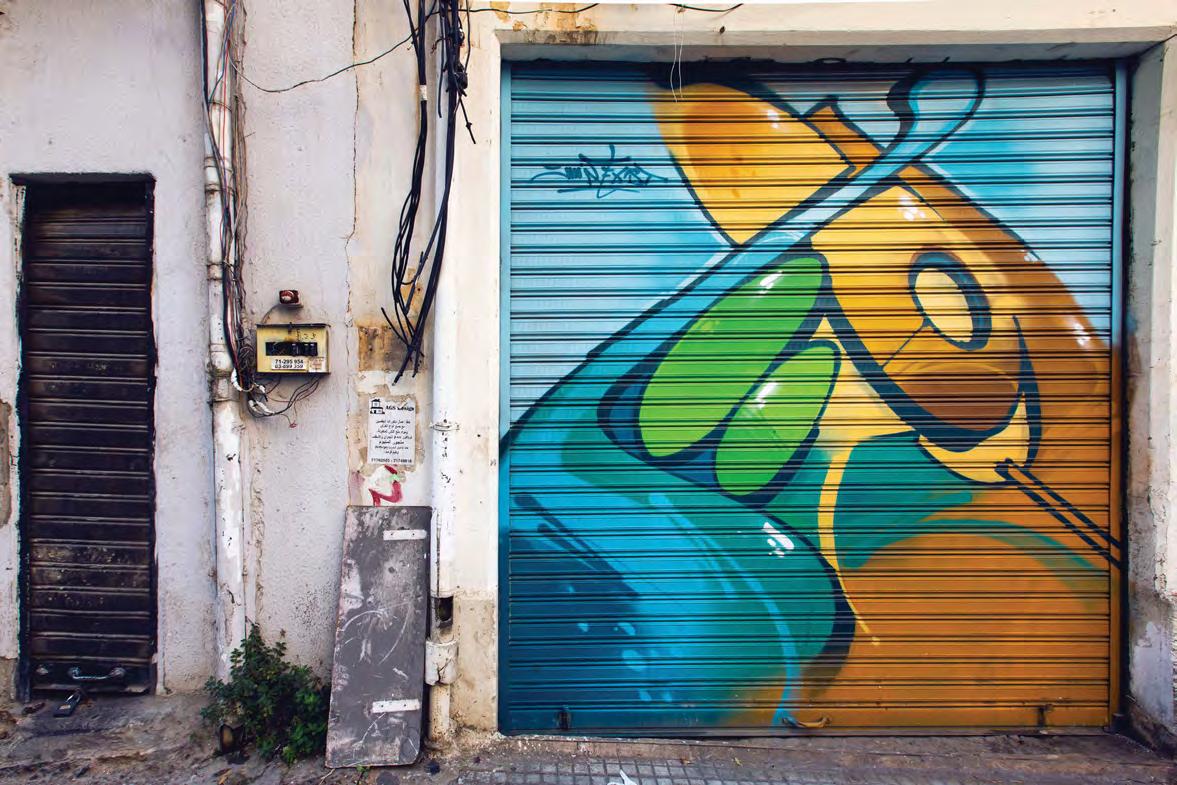
For EnForce, a Dubai-based artist, the sense of defiance so often associated with graffiti is part of what first drew him in. “The fact that graffiti exists in the public realm, beyond conventional and confined spaces, the rebellious nature of it—all these aspects have always fascinated me. Its history also intrigues me, as it is a significant part of Hip-Hop culture.” Over time, his style has evolved with an open-minded approach. “It was never about committing to just one art form. I am passionate about crossing creative boundaries, drawing inspiration from various artistic fields, and expressing my art without limitations,” he says. However, he makes a distinction: “I don’t consider my work in this region to be graffiti, but rather leaning more toward muralism, though graffiti heavily influences it.”
While graffiti is increasingly accepted worldwide, EnForce believes its core defiance remains, “Graffiti remains an act of defiance in many ways and always will be, as it often still exists in public spaces without consent. It’s important to differentiate between graffiti and street art/muralism—they are not the same. Graffiti came first, paving the way for street art to gain wider acceptance.” He emphasizes that graffiti is rooted in stylized lettering and tagging, while street art tells broader visual stories.
In the UAE, he sees a shift in perception. “I can’t speak for the entire Middle East, but in the UAE, the perception is shifting in a positive direction, though primarily toward street art and muralism. The future of public art looks promising.” This cultural diversity also influences the region’s artistic identity. “The UAE, being a melting pot of diverse cultures, presents a unique opportunity to create something special by nurturing the growth of this art form in the region,” he says.
His work often explores two key themes: “The love of nature and the human condition.” His upbringing, blending Eastern roots with a New Zealand childhood, has given him a broad artistic lens. “Both have provided a strong foundation in style, but I remain open to new possibilities and pushing creative boundaries,” he explains.
Despite progress, artists still face issues, says EnForce, “If you paint in public spaces without permission, you risk getting arrested if caught. We do need to have more platforms to place street art in public spaces.” Looking ahead, he envisions a structured approach to public art, saying, “I would like to see a platform where artists can apply for walls in different locations, working closely with the government and building owners.”
When asked about his ultimate artistic goal, EnForce keeps it simple: “Whether it inspires someone or simply brings a smile, I don’t overthink it. I can only control my own work—the rest is up to the viewers to interpret.”


Beirut’s walls serve as a canvas for EpS, a graffiti artist known for transforming cityscapes into visual narratives, telling stories of resilience, culture, and identity. His journey into graffiti began in childhood, fuelled by a passion for visual expression. Discovering Hip-Hop solidified his artistic direction, as graffiti became the perfect visual extension of the culture’s energy and creativity. “The challenge of using spray cans to create large-scale, impactful murals pulled me in,” he says.
Over the years, EpS’s style has evolved significantly. “The better I got technically, the more freely I could express myself without limitations,” he explains. With time and experience, his process has become more instinctive, allowing him to focus on the message behind each piece. Today, he thrives on pushing boundaries, taking on bigger and more complex murals that engage and challenge both himself and his audience.
Though graffiti has become more mainstream, EPS still sees it as an act of defiance. “The act of painting in the street, whether it’s an intricate piece or just a well-placed tag, is about claiming public space for yourself. To me, that’s an act of defiance,” he says. The thrill of disruption and the adrenaline of asserting presence in urban spaces keep him motivated.

In our region, graffiti has undergone a major shift. “It used to be centred around political and religious messages, often conveyed through stencils,” EpS says. However, a new generation of artists has transformed the scene, making graffiti an artistic and cultural movement rather than just a form of protest. “We’re turning cities into open-air galleries, making public spaces dynamic and accessible,” he says.
Middle Eastern graffiti has cultivated a unique identity, distinct from its Western counterpart. “Here, we’ve redefined lettering, using Arabic script with a modern twist and incorporating character portraits that merge tradition with innovation.” His signature character, Cesar the Monkey, has become a familiar sight in Beirut, symbolizing resilience and adaptation. Despite graffiti’s growing acceptance, challenges persist, he says, “Lack of public understanding and economic instability make it hard for the culture to grow. The real challenge now is gaining the recognition and respect needed to preserve this art form’s legacy.”
For EpS, graffiti is more than just art—it’s about storytelling, connection, and leaving a lasting impact. “If my work can generate thought, inspire hope, or spark conversations, then I’ve succeeded.” His dream project? A large-scale mural at the Beirut port—an homage to the past and a vision of hope for the future.
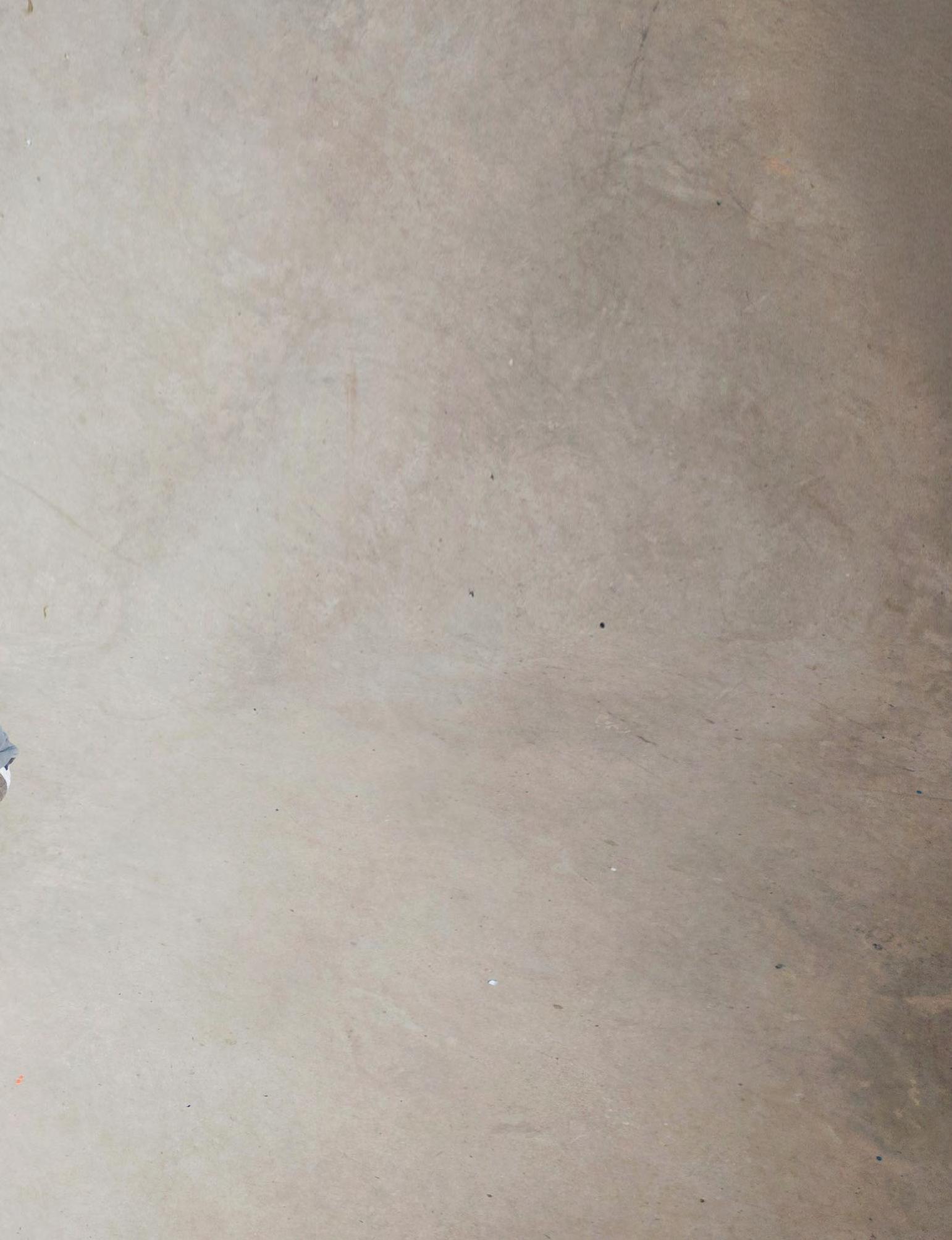



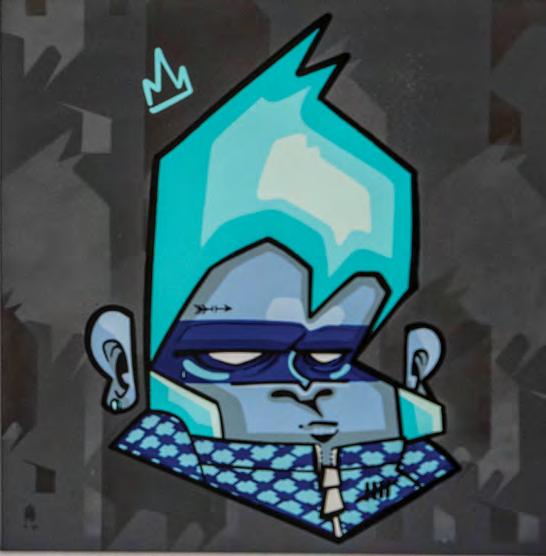
Saudi Arabia’s graffiti scene has been significantly shaped by Hntosh, whose work merges traditional influences with contemporary street art. His relationship with graffiti began with a deep appreciation for its ability to convey messages. “This art inspired me because it is a form of expression that communicates powerful messages,” he explains. Over time, his style evolved through practice and collaborations with artists from around the world, allowing him to refine his techniques and expand his artistic vision.
For Hntosh, graffiti was once a defiant act, challenging perceptions within his community. “It is true that graffiti art was once difficult and challenging for my community, but now, after Vision 2030, the situation has changed. People love seeing this art in public places, photographing it, and engaging with its messages.” This shift mirrors a broader transformation in the Middle East, where graffiti was previously viewed as a form of vandalism but is now recognized as a legitimate and influential art form. “We now have world-class artists who have reshaped graffiti from an act of defiance into a creative force,” he says.
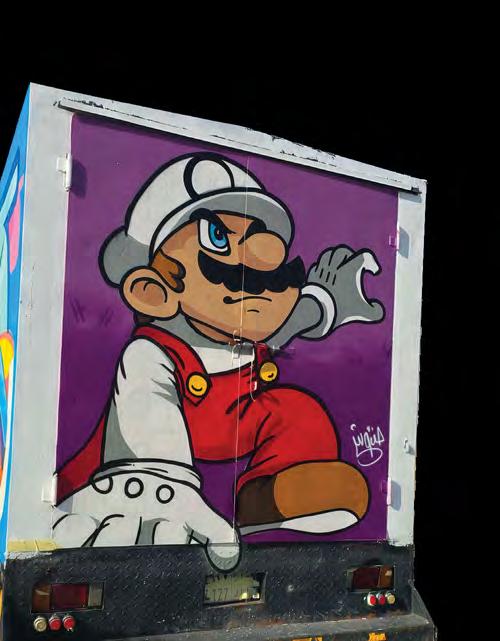
He strongly believes that Middle Eastern graffiti has developed a distinct identity on the global stage. “Graffiti here is a fusion of international styles with the Arabic language, cultural symbols, and traditions unique to each region. Every area has its own artistic voice, shaped by its colours, symbols, and customs,” he says. His work primarily focuses on patriotic themes, national events, and depictions of leaders. “We are a people deeply connected to our leaders, and I channel that passion into my work while also exploring freestyle graffiti,” he explains.
His cultural background does not confine his art, he sees it as a crucial element that enriches his creativity, saying, “We add our culture and identity to the art, making it uniquely ours.” However, graffiti artists still face significant challenges, “The biggest is the scale of our work—it requires immense effort, poses physical risks, and is highly dependent on weather conditions and time constraints.”
As Saudi Arabia continues to embrace art as part of Vision 2030, Hntosh envisions graffiti playing a major role in transforming urban spaces, he explains, “One of Vision 2030’s goals is to enhance the urban landscape and quality of life, with Riyadh becoming a capital of art. With the support of our leaders, we as artists strive to integrate graffiti into the cityscape.”
At its core, graffiti is about turning lifeless walls into storytelling canvases. “Graffiti transforms dead walls into talking walls. As artists, we bring them to life with colours and messages that resonate with viewers,” says Hntosh. If given the chance to create a large-scale mural, Hntosh would go beyond the Middle East, “If I had the opportunity to create a massive piece, I’d do it outside the region to share our culture with the world through Arabic graffiti.”
With his bold vision and commitment to his craft, Hntosh continues to shape Saudi Arabia’s graffiti scene, infusing it with meaning, identity, and a deep sense of purpose.
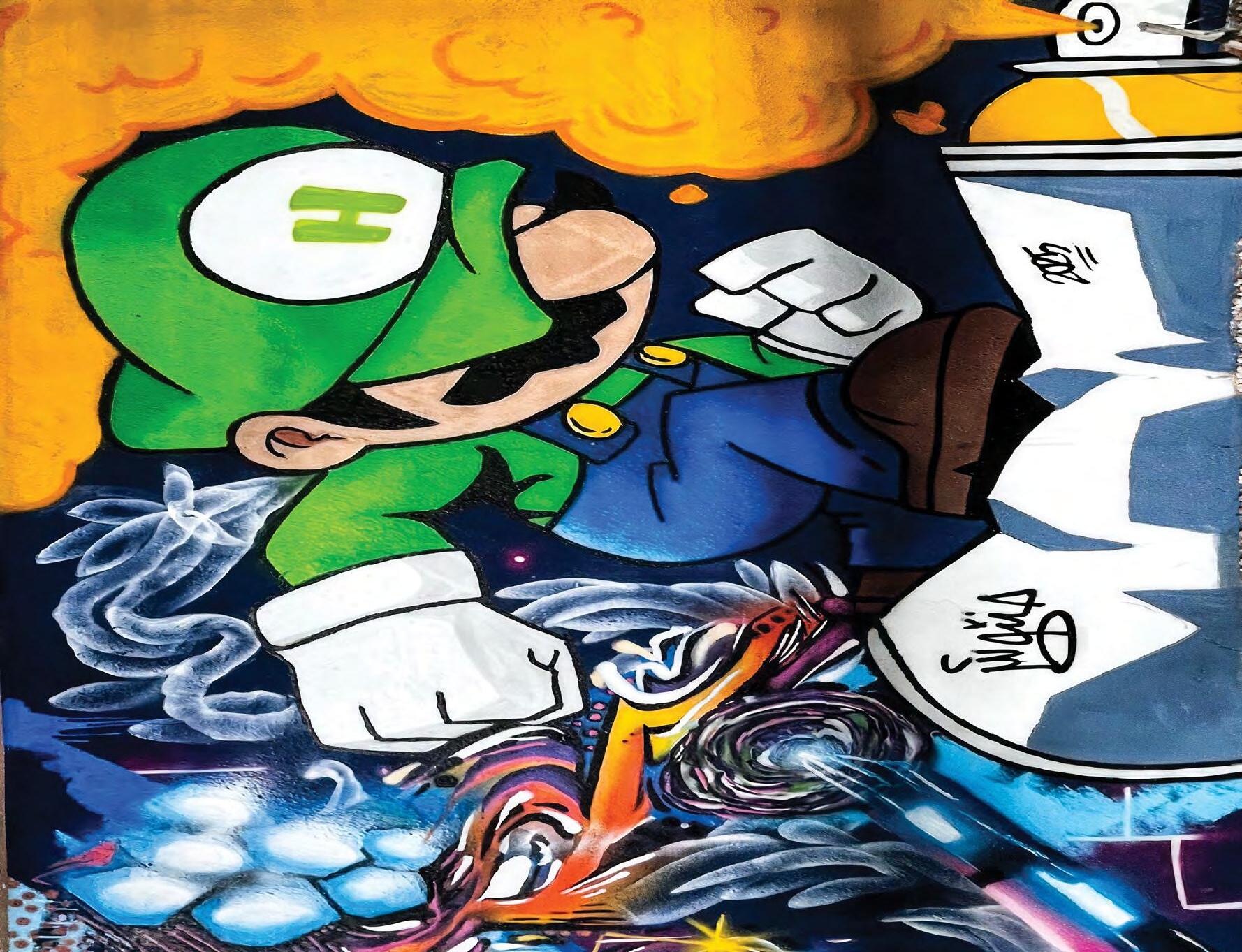
Egypt’s urban landscape is home to Toxik, a graffiti artist who blends bold colours, intricate styles, and cultural influences into his work. His journey into graffiti began from an unexpected place—video games. Immersed in the virtual world of urban culture, he found inspiration in digital murals, which sparked a real-world passion for street art. Over time, his style has evolved, merging graffiti with elements of Trash Polka and pin striping, continuously adapting to the challenges presented by different surfaces.
For Toxik, graffiti is a powerful form of self-expression. “It allows me to translate thoughts and emotions into visuals, creating a direct and unfiltered dialogue with the world,” he explains. While graffiti was once perceived as an act of rebellion, today, it holds a broader significance, he says. In the Middle East, graffiti initially emerged as a tool of political expression, a means of voicing dissent in public spaces. However, the perception has shifted. “Now, it’s a recognized art form and a personal means of storytelling,” says Toxik. “Since it exists in public spaces, it reaches thousands of people daily, making it an incredibly powerful medium—but with that power comes responsibility.”
Middle Eastern graffiti carries a unique identity, influenced by the region’s artistic heritage. “There’s a growing fusion of graffiti with Arabic calligraphy,” Toxik notes, highlighting a movement that combines contemporary street art with traditional script. His own work reflects this evolution. While his technical foundation is rooted in European graffiti, his colour palette and increasing use of Arabic calligraphy bring a distinctive regional touch.
Despite the growing appreciation for graffiti as an art form, challenges remain. “There’s still a lack of awareness and understanding about graffiti,” he says, noting that misconceptions persist. At the same time, street art has become commercialized, with major brands incorporating graffiti aesthetics into large-scale advertisements. Yet, graffiti remains a fundamental element of Hip-Hop culture, which is experiencing a major resurgence in the region.
Through his work, Toxik aims to evoke positivity and motivation, often adding a touch of sarcasm to keep his messages engaging. If given the chance to create a large-scale piece anywhere, his dream destination would be Berlin. “I’ve always wanted to see my name next to some of my favourite writers,” he says. With every mural, Toxik continues to explore graffiti’s place in the Middle East, transforming walls into canvases of culture, history, and self-expression. ■

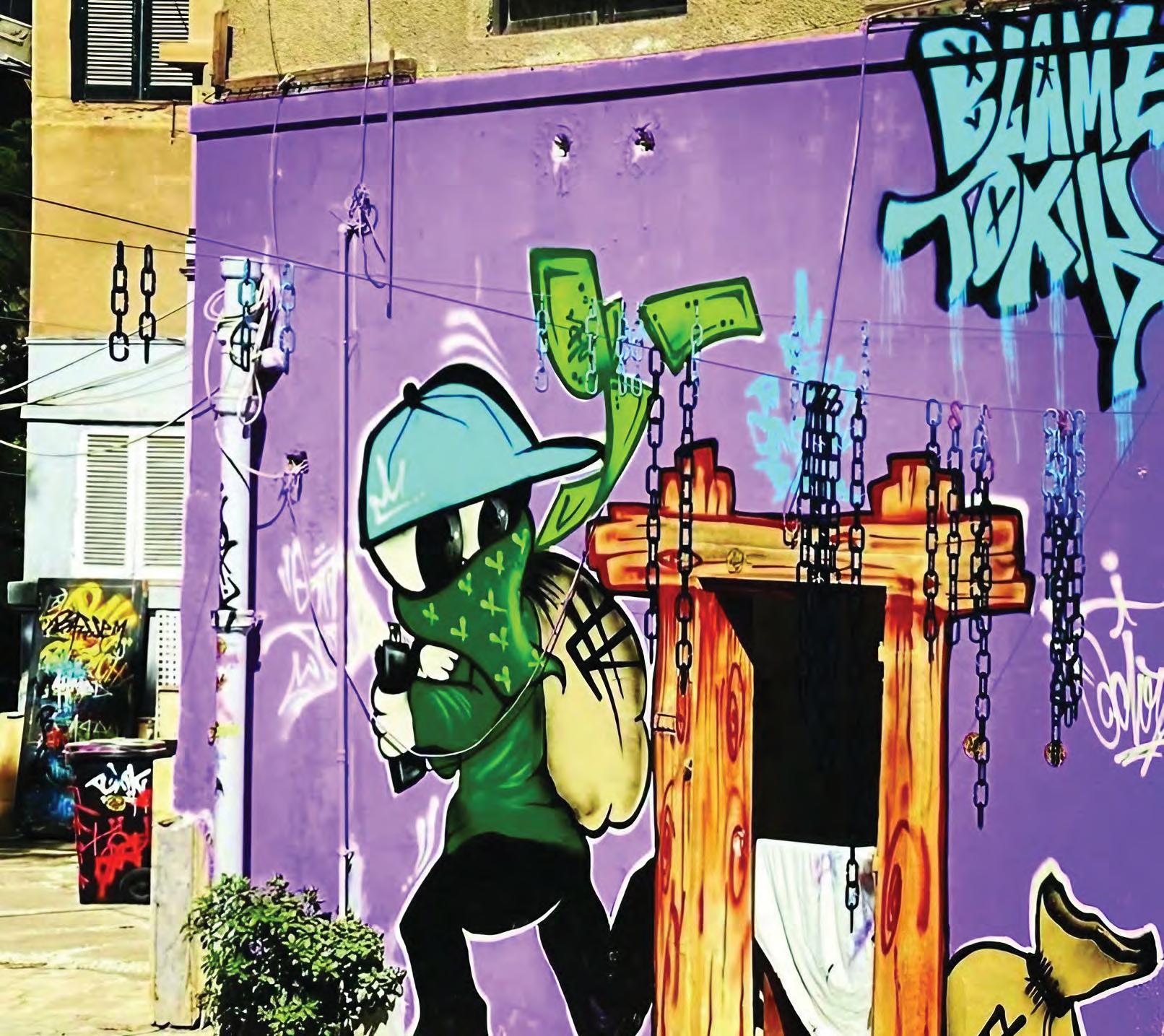
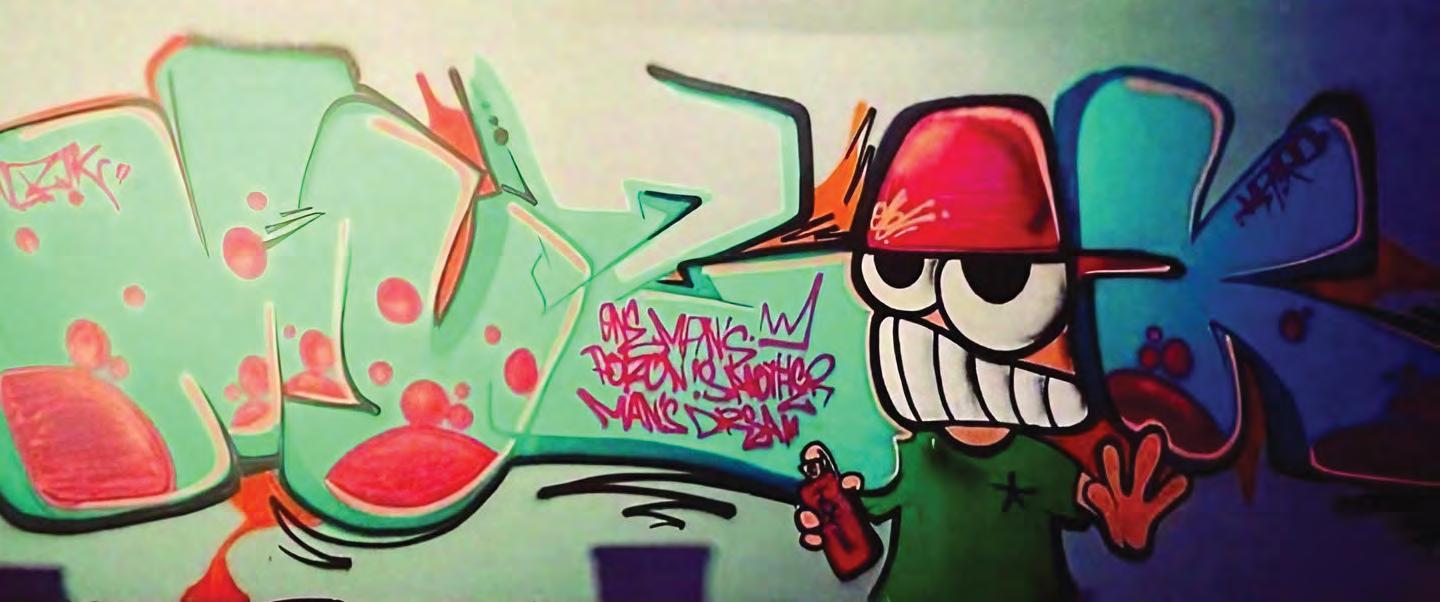

An enduring space for Lebanon’s independent film scene, built on resilience and cinematic passion.


For nearly two decades, Metropolis Cinema has been at the heart of Lebanon’s independent film scene, championing alternative cinema, nurturing emerging filmmakers, and fostering cultural dialogue. With the opening of its new venue in Beirut’s Mar Mikhael, Metropolis is embarking on a new journey—one that reflects its hopes for the future of independent cinema in Lebanon. “The opening of our venue in Mar Mikhael is a milestone in Metropolis’ long-term vision,” says Hania Mroué, founding director of Metropolis Cinema. “It is the physical embodiment of our commitment to ensuring access to alternative cinema, especially for younger audiences.”
Founded in 2006, Metropolis has long sought to create a space where cinema is more than entertainment—it is an encounter with different cultures, languages, and perspectives. The new venue provides a permanent home for artistic experimentation and cultural exchange, ensuring that cinephiles in Lebanon can access diverse voices and stories beyond mainstream commercial releases.
Despite Lebanon’s impressive track record in independent filmmaking, the industry faces ongoing challenges. “Even amid multiple crises, the Lebanese film industry has persevered, driven by the passion and resilience of its filmmakers,” Mroué notes. However, the lack of funding, absence of public support, and economic instability make sustaining independent cinema increasingly difficult.
Metropolis aims to address these challenges by providing a platform for Lebanese and regional films to reach wider audiences. Through curated screenings and post-screening discussions, Metropolis
fosters meaningful conversations between filmmakers and viewers, reinforcing cinema’s role as a catalyst for dialogue and change. “During these challenging times, Metropolis stands as a symbol of cultural resistance,” Mroué affirms. “By maintaining a platform for alternative and independent cinema, we contribute to revitalizing Lebanon’s cultural sector.”
Metropolis’ new space is not just a cinema—it is a hub for cultural exchange. “This space was born from years of experience running an independent cinema and a commitment to supporting the local and regional film ecosystem,” explains Mroué. The venue will host film preservation projects, industry workshops, children’s screenings, and public discussions, fostering a sense of community among filmmakers, students, and lovers of film.
Metropolis’ journey to this new venue has not been easy. Following the closure of its former space in January 2020, the organization adopted a nomadic model, hosting screenings in various locations across Lebanon. The challenges continued with the recent war on Gaza and Lebanon, which slowed construction and fundraising efforts. Yet, Metropolis remained steadfast. “We chose to continue building and planning our programs despite the violence around us,” Mroué says. “It was our way to resist: through creation, not destruction.”
A key element of Metropolis’ programming is balancing local and international cinema. “Our year-round program is curated with a strong focus on youth engagement and diversity,” says Mroué. Lebanese and regional filmmakers are given priority, with dedicated sections for

student films, short films, and experimental works. At the same time, Metropolis collaborates with international institutions and curators to bring a wide array of global cinema to Beirut audiences.
“In 2025, we plan to spotlight underrepresented cinemas from the Global South, particularly African, Latin American, and Asian films,” Mroué adds. “This initiative aligns with our mission to foster cross-cultural dialogue through cinema.”
A major addition to Metropolis’ new venue is Cinémathèque Beyrouth, a film heritage resource centre dedicated to preserving Lebanese cinema. “The absence of a comprehensive archive has led to the deterioration of Lebanon’s national film heritage, making preservation a top priority for Metropolis,” Mroué explains. The centre will serve as a repository for Lebanese films, providing researchers, filmmakers, and those interested in the Lebanese scene with access to an invaluable cultural resource. “In a country with a tumultuous history, preserving our cinema heritage is essential,” says Mroué. “These films document Lebanon’s evolving social, political, and cultural landscape, serving as a reflection of our collective identity.”
Metropolis is deeply committed to supporting young Lebanese filmmakers. One of its flagship initiatives is the Locarno Industry Academy, an intensive training program for industry professionals in the MENA region. “By providing young professionals with the skills and knowledge they need, we aim to empower them to navigate the evolving global film landscape,” Mroué explains.
Beyond technical training, the program fosters international connections, helping young filmmakers and professionals build networks that support their careers. “Through initiatives like this, we are directly contributing to the growth of Lebanon’s independent film sector,” she adds.
Alongside operating as a screening venue, Metropolis’ new space is designed to foster collaboration among filmmakers, students, and cinephiles. “Our goal is to nurture collaboration across all levels of the film industry,” Mroué emphasizes. Through workshops, masterclasses, and industry training, the space will serve as an incubator for new ideas and creative growth.
For students, it will be a learning resource, offering educational screenings and discussions that encourage critical thinking about cinema’s societal role. Visitors will find an inclusive space to explore new films, engage in conversations, and celebrate cinema together. “In a country often fragmented by tensions, we hope Metropolis can be a space that unites, inspires, and offers solace through the power of cinema,” Mroué concludes.
With its new home in Mar Mikhael, Metropolis Cinema continues its mission to champion independent cinema, support emerging talent, and preserve Lebanon’s cinematic heritage—ensuring that alternative voices in cinema remain heard for generations to come. ■
Step into a world where time, tradition, and modernity collide, YUNG Studio redefined the visual language of Ramadan in Marli New York’s latest campaign, The Harmony of Moments. With an editorial vision rooted in contrast, movement, and immersive storytelling, YUNG crafted a cinematic journey that mirrors the spiritual rhythm of the holy month. From the soft glow of dawn to the deep blues of night, each frame is a carefully curated moment, where light, shadow, and texture bring Marli’s LIFE Collection to life. Starring an all-Arab cast, captured through the lens of Amer Mohammed, this campaign was a celebration of identity, unity, and modern luxury.


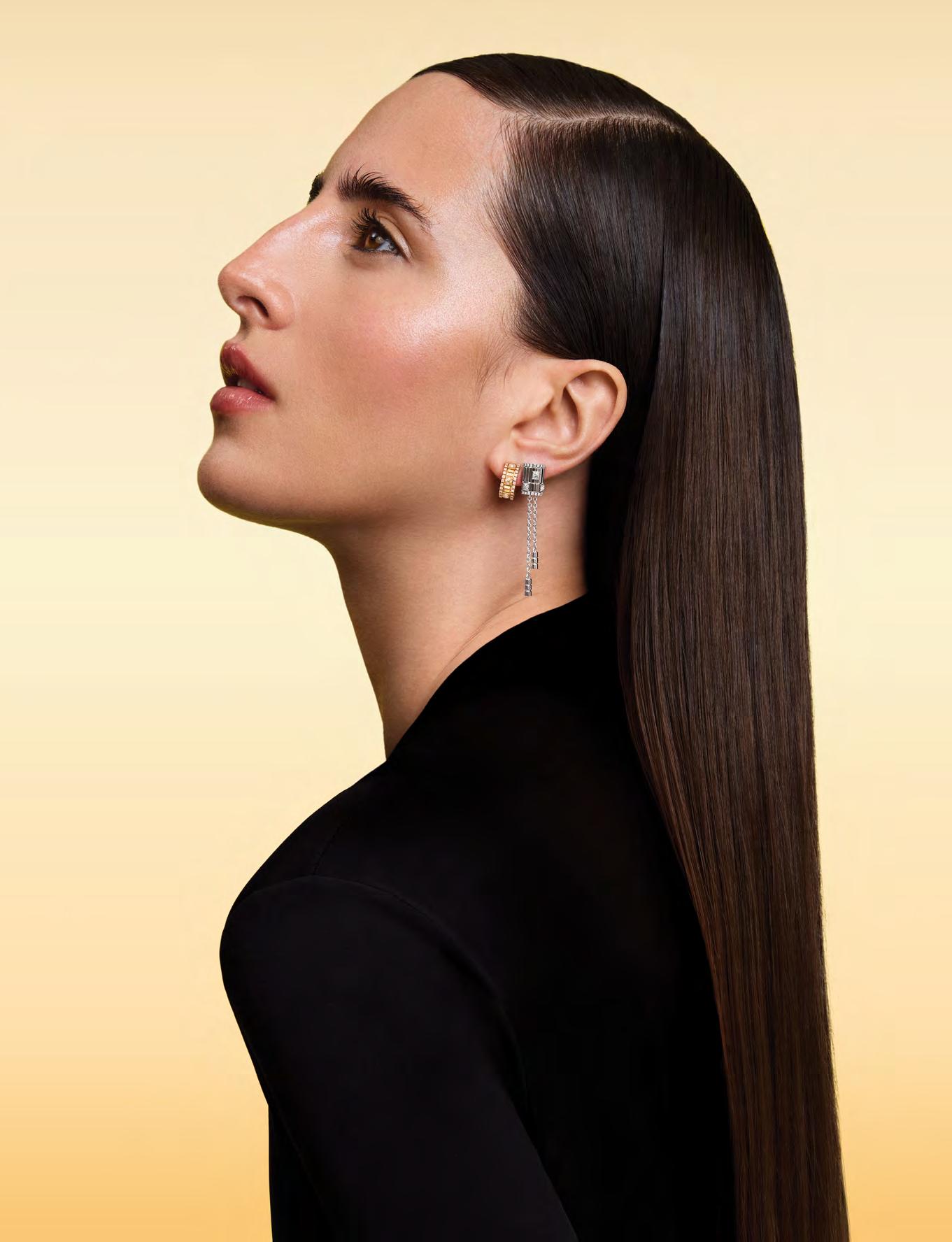


Where do all these artists go?

As rap battles took over Egyptian streets starting 2017—mostly in Cairo and Alexandria, with Ismailia throwing in a few wildcards—a new wave of rappers began to emerge. A select few rose through the ranks, and the victors of these early underground clashes would, just a few years later, become the faces—and perhaps even the gatekeepers—of a commercial Hip-Hop scene that would upend the Egyptian music industry.
It was in 2019 when things started moving. The rap purists and SoundCloud loyalists of the once tight-knit subculture, began to multiply, debate, and evangelize, turning their favourite rappers into local legends. The numbers swelled and boiled over, and before anyone could clock what was happening, an entire industry started forming around it. But not in the polished, label-mandated way—not with a five-year growth plan in hand. There weren’t any clear contours, just an effervescent boom that kept heating up and exploding erratically. The infrastructure, built in a frantic and unplanned rush, was more reactive than proactive. There were no established pathways, no strategic long-term vision—only the imperative to cash in on each moment of virality.
Because in those early days, no one quite knew what an industry really looked like or how it operated. There were no established blueprints, no clear-cut career paths, no talk of legacy or sustainability. There was just an open playing field where whoever made the most addictive, head-nodding, view-racking banger won.
It was the era of “firsts.” The first viral rap hits, first big-budget music videos, first proof that making music could actually be a career. It was a scene built and fuelled by unconditional creating. There was no expectation for the artist to think beyond the moment. The stakes were lower, which paradoxically made everything feel bigger. The only focus was creating—pushing the sound forward, dropping music that actually moved people. It was this creative urgency that ushered in the musical gold rush that would sweep through the region.
Egypt was the first to cash in. What had once been an insular, underground world became a goldmine. Suddenly, rap wasn’t just a thing—it was the thing. Wegz, Pablo, Marwan Moussa, Abyusif, they were now the front-runners in a new musical economy. Brand deals, major-label interest, festival slots—things that were unthinkable a few years prior were now just part of the game.
“Egypt has always been the exporter of music and entertainment to the region. And with a population of almost 110 million, we are big consumers of media. But for a good few years, the mainstream music scene as a whole was stagnant until a wave of Hip-Hop artists revived it and the rest of the region started to pay attention again,” says Amy Stefanie, artist manager, strategist and self-proclaimed oracle.
The gold rush that kicked off in 2019 was a double-edged sword— on one hand, it elevated music into a legitimate industry that could fund careers, but on the other, it exposed artists to the same industry pitfalls that exist globally.
This pattern, what we might call the Disappearing Artist Syndrome, is not just about individual careers—it’s about the structural realities of an industry that demands constant momentum and is only now getting to the stage where it can think about how to support long-term artistic growth. Dodi, the former founder of Mtown mafia, sums it up: “The lack of structure makes artists disappear faster. There’s no second chances. Hip-Hop labels, or specifically indie
Hip-Hop labels, are the creative hubs for second chances. Every HipHop artist in America or most countries, has a few more albums in him before disappearing. There’s this pattern of releases in the region: you release one breakthrough, release again, go bigger, and then you cool off—and it’s just downhill from there.” His observation underscores a critical gap in the local scene: while mature markets offer robust support systems that allow artists to evolve over multiple releases, the MENA industry often lacks the necessary infrastructure to sustain long-term growth.
At first, there was no industry—just music pouring out at an unprecedented rate. As hit after hit emerged, a small beginning began taking shape, not as a structured machine but as an ecosystem scrambling to ride the wave. With no established infrastructure to climb, independent artists and small labels focused on maximizing impact in the moment—pouring everything into making the best music video, crafting the next big hit. It was pure momentum, paving the road as they went, with no clear destination in sight. As this energy spread regionally, the roads of the industry were being built in real time.
“Despite this huge movement and seismic shift, only three to four rappers have ‘made it,’ while the majority are stuck on the periphery. The reasons are plenty, but one thing is for sure, talent is not enough. Especially if the development and support to kick-start a successful career are non-existent,” Stefanie explains.
With this under-construction industry came new expectations. Artists could no longer rely on hits alone—they had to think about longevity to sustain a career. “Some artists burn out because they’re chasing hits. They think their next release has to be as big as their last one, and that pressure kills creativity,” Trying to replicate a hit is a sure fire way to fail, shares Firas Abou Fakher, VP of Universal MENA. “Most great artists evolve, not repeat.”
It wasn’t just about being first anymore; it was about finding a way to stay. The old model of dropping music and riding momentum gave way to strategy. Securing brand deals, landing commercials, and crafting a personal narrative became just as important as the music itself. As the industry grew, so did the stakes. Competition intensified, and making music became only one piece of the puzzle—now, it was about calculated rollouts, editorial placements, collaborations, and, more recently, signing with major labels.
“Artists lack the basic knowledge of how the industry works, which to be fair until recently was gatekept and exclusive to mainstream artists. They can see the possibility of a very attainable and successful career, but they just don’t know how to get there,” says Stefanie.
Artists who passed a certain threshold could start building viable careers—earning from bookings, licensing, streaming (to an extent), and label or brand deals. But these opportunities were still new concepts, and navigating them required strategy. It meant juggling multiple revenue streams and knowing how to use them effectively. Dodi weighs in: “The main reason all these artists disappear is a failed financial model, essentially, there’s not enough money for everyone. Artists have expectations to become extremely rich, which is not the case with music in Egypt because music is made of multiple streams of revenue, and not each one makes a lot of money when mismanaged. And you can’t get all of them if you don’t have a proper team. And a proper team won’t stick around if you don’t pay them properly.” Music industry literacy remains limited, and many artists and managers are still figuring out how to truly build a career—how to make distribution, PR, and marketing work for them in the long run.
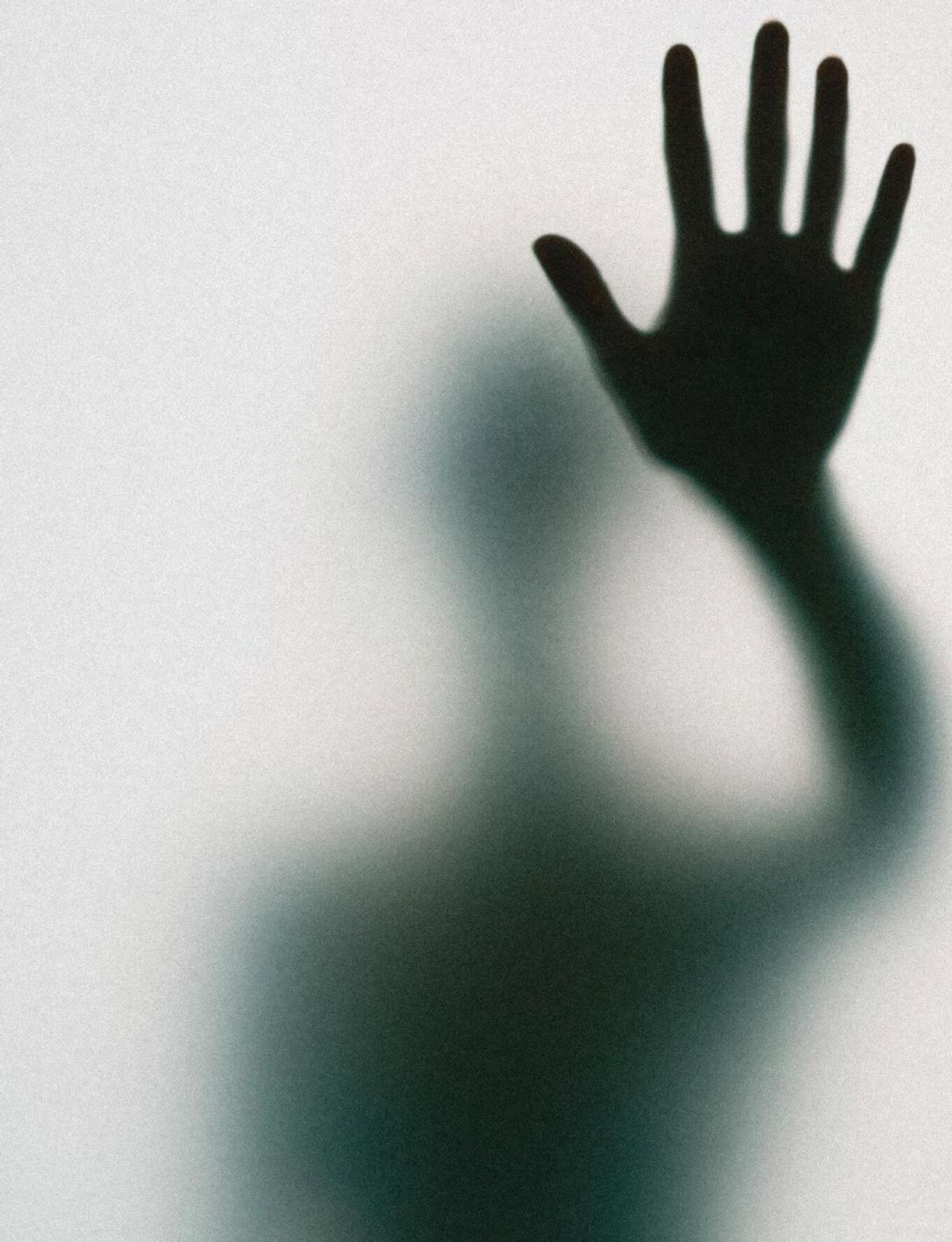
“Despite this huge movement and seismic shift, only three to four rappers have ‘made it,’ while the majority are stuck on the periphery.”

Without this foundation, many rappers who went viral between 2019 and 2021 struggled to maintain momentum. As founder of Freedom Music and Kord Agency Mahmoud Zidan puts it, “The industry leans more toward quick success. Many artists blow up with one hit, gaining hype, media attention, and interviews. But once the buzz fades, so does the support. The challenge is maintaining momentum beyond that initial wave. Artists need consistent backing, even when their numbers slow down, to build sustainable careers rather than being left behind after a brief moment of success.”
Mtown Mafia’s rise and fall perfectly illustrates this struggle. They had a legendary run in the Egyptian Hip-Hop scene, dominating drill and holding the market in its heyday. They were everywhere—blowing up the charts, taking the moment all for themselves. But in 2024, it all came to a halt when they suddenly disbanded. Looking back, former founder Dodi puts it plainly: “If I would do something differently, I’d focus on business, not music. I would have learned to finance properly. That’s a huge part of it.”
Making great music isn’t enough. Numbers can be high, streams can be rolling in, but without a solid foundation—financial planning, strategy, and long-term vision—everything can fall apart just as quickly as it comes together. Mtown Mafia’s story is one of many, showing how success without structure leads to a dead end.
Without a sustainable system in place, even the most successful artists find themselves at risk of being replaced the moment their engagement dipped. Major labels offer stability, funding, and industry connections, but they also come with compromises. As Ma3azef music journalist Cheb Rocky put it, “Big labels don’t always create the best music—they create what sells.” Labels tend to prioritize low-risk investments in developing markets—artists who fit existing moulds, who can be easily marketed, who align with global commercial trends. This creates a homogenization effect. Artists who sign with major labels may find themselves subtly reshaped to fit the industry’s vision of success. Some make it work, but others lose the very qualities that made them stand out in the first place, and lose favour with audiences.
“Even if an emerging rapper manages to overcome the first set of obstacles and secure the support of distribution agencies that double as record labels, they often encounter new challenges when it comes to transitioning from street rap to market-ready hits. The artist becomes disheartened as they struggle to find a support system that can help them navigate this transition and stay true to their unique style and voice,” Stefanie adds.
Compounding this issue is the fact that, in the MENA region, sustaining a career solely on streaming payouts is nearly impossible. “Streaming payouts here are about one-tenth of what they are in the US or Europe,” shares Abou Fakher. “If you have 100,000 monthly listeners in the UK, you’re making a living. In MENA, that number means you’re struggling.” In Jordan, an artist makes around $993 per million streams, while in Lebanon, it’s about $2,031—figures that pale in comparison to what artists in Europe or North America earn. This financial fragility pulls many artists into label contracts that offer big advances in exchange for an album or a string of singles.
Recognizing these shortcomings, some industry leaders have begun rethinking the dominant model. “The big labels are starting to realize that their return on investment needs to have a longer tail. So now they’re shifting towards artist development,” says Abou Fakher. The logic is simple: a longer, more stable career means more longterm revenue for both artists and labels. But in practice, this shift still exists within an industry that demands relentless engagement and adaptation. “And whilst everyone in the industry is rightly concerned with testing sustainable business models that guarantee revenue in parallel to fostering artist development, the scene is stagnating and going through a creative dry spell,” says Stefanie. “Our few A-listers have become increasingly focused on targeting regional audiences and managing the business aspects of their career. While this is a natural progression for any successful artist, their releases have become scarce.”
And now in 2025, music lives in a world where listening habits are digital and attention spans are shorter than ever. Social media dominates, and the algorithm dictates visibility. Success isn’t just about making music—it’s about fighting for space in an online landscape where relevance is fleeting. A TikTok campaign, engaging visuals, and a strong social presence are now essential. This requires teams to manage multiple moving parts, as the system demands constant output. To stay relevant, you have to stay active. You have to create a narrative, a lasting imprint in people’s minds—because the music alone isn’t always enough anymore.
Abou Fakher elaborates, “Artists need to ask themselves: Who am I beyond the music? What do I stand for? If they can’t answer that, they won’t last.” In an environment where success hinges on personal branding and the ability to build a movement around one’s work, artists who focus solely on the music risk becoming invisible once the initial hype fades. The strongest artists, “make fans feel like part of a movement, not just listeners of a song,” says Abou Fakher.
This model works for mainstream pop acts backed by major industry support, but music isn’t something that can be produced on an assembly line. This digital, brand-centric landscape comes at a cost. The pressure to constantly define and redefine oneself leads to burnout and a cycle where artists either overextend themselves or fall short of maintaining that multifaceted presence. When an artist’s identity is too intertwined with the mechanics of virality—when every move must serve the dual purpose of creative expression and marketability—the risk of fading away increases dramatically.
“There are many artists who don’t want to follow the industry rules, so they have to work on their own. But that means they won’t get what they want—whether it’s fame, money, or opportunities,” says Cheb Rocky. Many choose to remain independent, rejecting major labels and refusing to mould themselves into content creators. Yet, without backing, they often find themselves locked out of key opportunities—whether it’s festival slots, sponsorship deals, or playlist placements. They may retain full creative control, but at what cost? The industry is structured to reward those who engage with it, leaving those who resist struggling for visibility.
There’s an unspoken expectation that artists must be more than just musicians—they have to be brands, content creators, and entrepreneurs. This shift places a huge burden on artists who entered the industry simply because they loved making music. The moment an artist has to think about algorithms, engagement rates, and sponsorship potential, their creative process shifts.
It often forces artists to choose between independence and opportunity. For some, the trade-off is worth it. For many, it isn’t, and they quietly fade away. “Some artists disappear because they choose to. Maybe they realize this industry isn’t for them. Maybe they want to engage with music on their own terms,” says Abou Fakher. “Even The Beatles decided to stop touring and become a studio band. Some artists simply redefine how they want to exist.”
As the MENA music industry expands, it borrows structures from Western markets—major labels, streaming-driven rollouts, and brandbacked sponsorships. But these structures weren’t designed for the realities of local music economies. “The industry that is growing in our country is coming from the West, but it doesn’t always fit our music,” says Cheb Rocky. The Western model assumes a well-established touring circuit, strong publishing rights, and consistent revenue streams. In MENA, those foundations don’t fully exist yet, leaving many artists in a state of limbo—tempted by industry promises but without the infrastructure to actually sustain careers.
Having a team to handle the moving parts should, in theory, free up the artist—but as they grow, so do the stakes. The more they develop, the more they have to manage outside of music to sustain their status. Adjusting to the realities of celebritydom when they once just made music can be draining.
Artist manager and scene veteran Tarek El-Mendelek highlights the toll of “making it”: “One of the biggest challenges I see is sustaining good mental health long-term. Between releasing, promoting, creating content, shooting music videos, touring, and doing press, it’s all so draining. I feel some artists lose themselves.”
The sheer speed at which the industry operates leaves little room for rest or creative experimentation. Artists who once made music purely for the sake of expression now find themselves caught in an endless cycle of production, promotion, and performance.
Take Marwan Pablo’s exit in 2021. At the peak of his career, he announced he was quitting music, citing personal and spiritual reasons. While he later made a comeback, his absence was proof of how exhausting the industry had become. As the industry evolves, artists must keep up—not just with music, but with the growing demands of branding, marketing, and business. There’s more to navigate than ever, and much of it isn’t about the music itself.
The conversation around balancing commercial success with artistic integrity is ongoing, but something shifts when making music becomes about meeting commercial expectations, “staying relevant,” and maximizing all your revenue streams.
This cycle isn’t new. It’s a pattern that has played out time and time again across different genres and eras. “The history of pop music is a series of grassroots movements, where creation starts as free and
unconditional. Because it’s authentic and true, it resonates with people on a deep level—it reflects their fears, dreams, inner angels and demons. But once the industry takes notice, it capitalizes on this raw energy, absorbing artists into a machine that prioritizes the ‘who’ and the ‘how much’ over the ‘why’ and the ‘what,” says artist Youssef ElBeshlawy.
This raises a bigger question: Can a truly sustainable system be built when every step toward “development” seems to add another layer of demands and consumption? At its core, music is an act of creation—something that exists because it needs to, because an artist feels compelled to say something, to shape sound into meaning. The ultimate goal is to express and connect. Yet, the industry increasingly insists that success hinges on constant reinvention, measured by engagement metrics and commercial milestones.
In theory, a more sustainable system would provide artists with financial stability, a supportive infrastructure, and the freedom to explore their creativity without the pressure to constantly churn out hits. But in practice, every new level of development seems to impose additional requirements—more branding, more marketing, more strategic planning—that ultimately pull artists away from their core creative impulses.
In this context, the challenge is not simply about building a sustainable financial model or infrastructure; it’s about redefining what development means. True development should empower artists to remain true to their art while providing the stability to grow organically. It’s about finding a balance between commercial viability and the freedom to create without being consumed by the system. Ultimately, if the system continues to demand constant consumption and endless output, then even well-intentioned development efforts risk becoming another level in a never-ending game—one that may ultimately undermine the very art it aims to preserve.
This is where the tension lies. The industry needs music to be consumable, repeatable, and profitable. But music, in its purest form, isn’t designed to serve those needs. It’s emotional, unpredictable, and often deeply personal. When music is industrialized, it is streamlined to remove friction, to make it more palatable to the widest audience possible. And in doing so, it often loses its edge, its rawness, its ability to challenge and disrupt.
While the Disappearing Artist Syndrome is a real issue, solutions must exist, right? Sustainable funding models, fair compensation, and stronger community support are essential to ensuring artists don’t vanish after their first big break. “We need better infrastructure, insurance for artists that their art and rights are protected, and more flexibility when it comes to masters, splits, and shares—along with more education on artist development and sustainability,” says Tarek El Mendelek. Initiatives that provide long-term financial backing, mentorship, and industry reform could change the landscape.
The story of disappearing artists isn’t just about music—it’s about the economy, the region, the way we consume and discard everything, not just art. Music careers vanish because the system wasn’t built to hold them, the same way industries collapse and cities expand and trends fade. What if the music industry’s biggest issue isn’t its lack of infrastructure, but the fact that it’s just a reflection of the world it exists in? ■

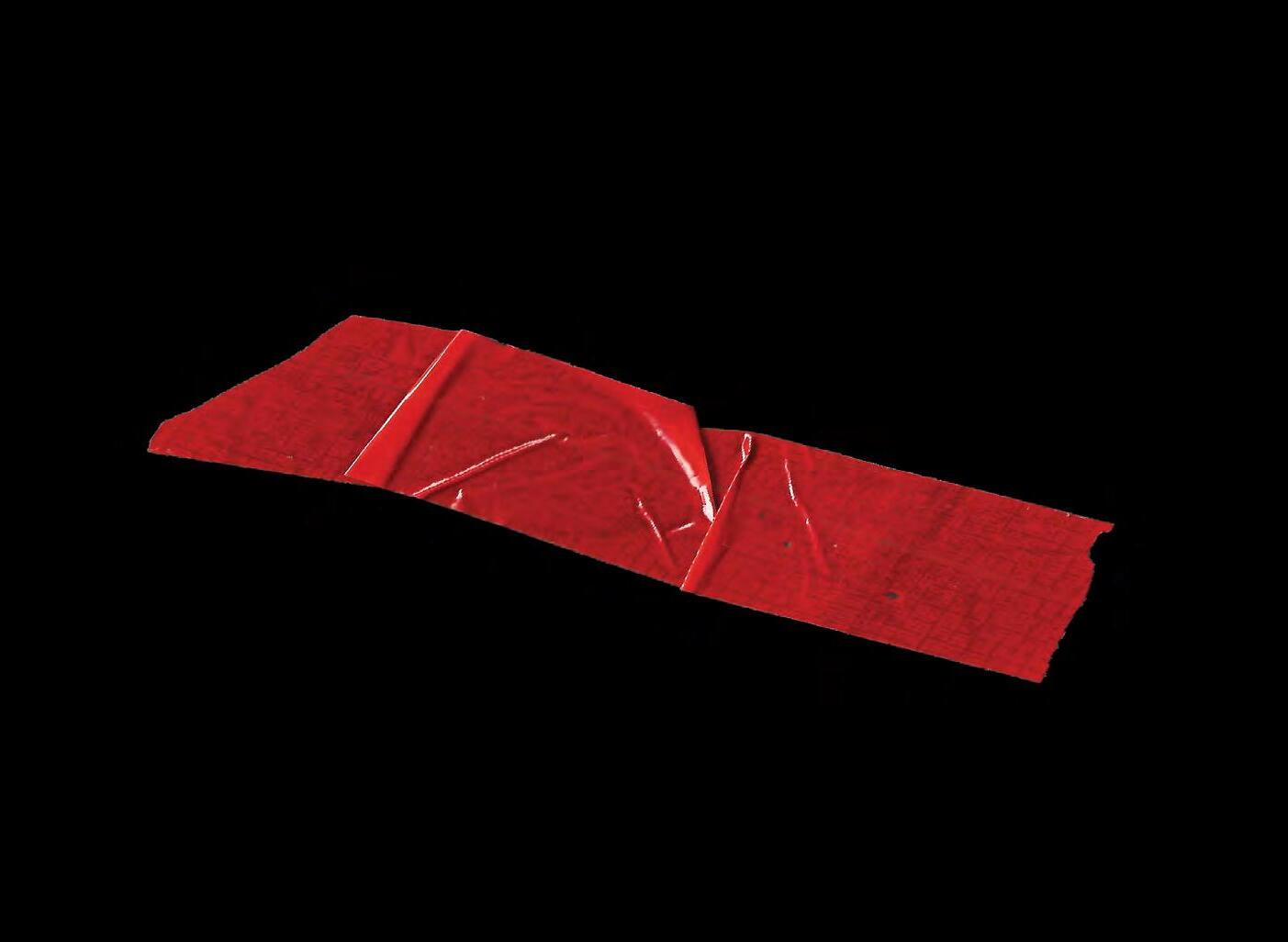


From London’s bustling streets to everyday moments, the Burberry Trench moves with you— effortless, iconic, and made for anywhere. Featuring Riyam (Iraq) and Adam (Morocco), this campaign celebrates the trench as a symbol of timeless elegance and modern identity.

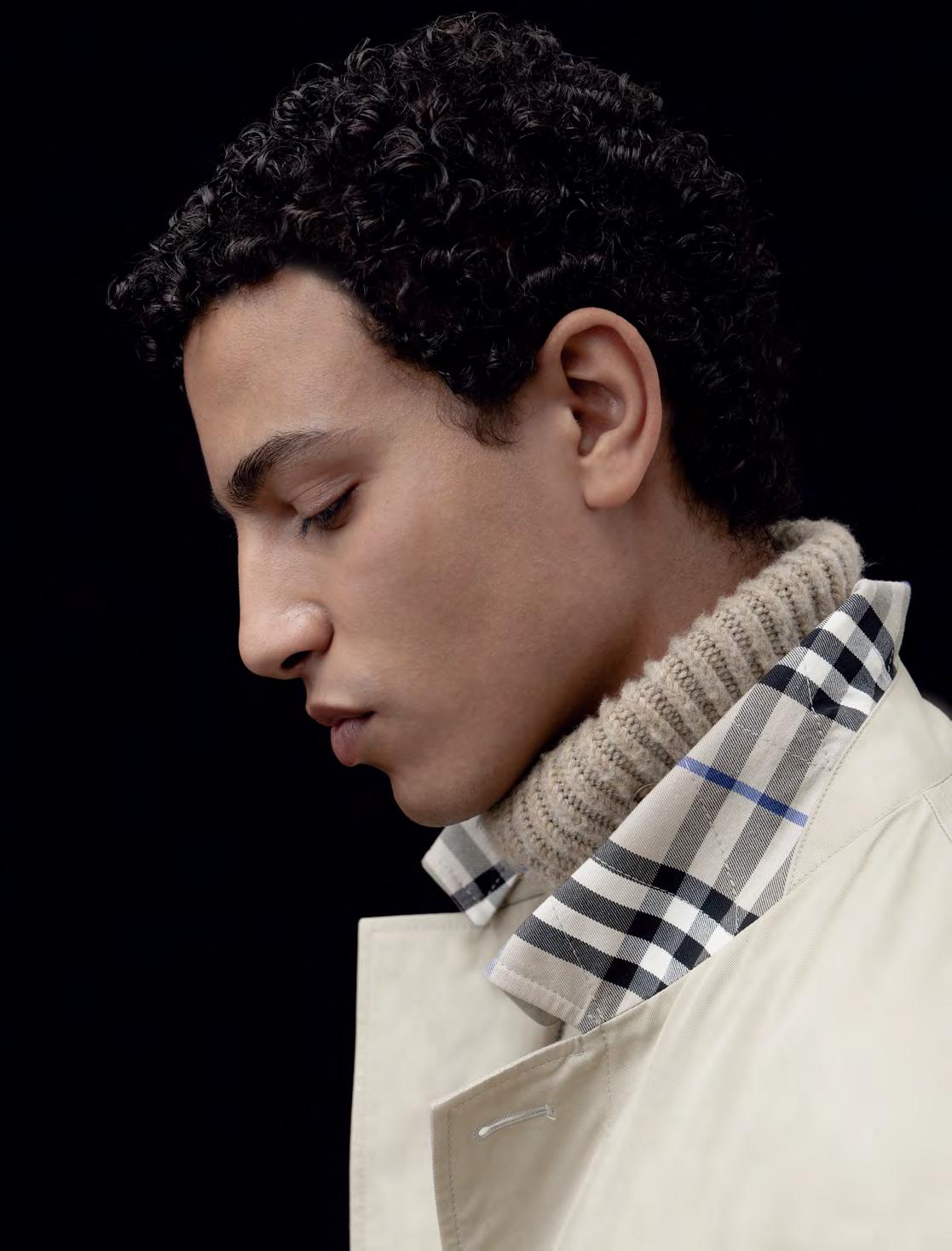






Audemars Piguet’s Chérif Chamandi talks markets, craftsmanship and heritage.
words NADINE KAHIL

In the realm of luxury timepieces, few names resonate as profoundly as Audemars Piguet. Established in 1875 in the quaint Swiss village of Le Brassus, this esteemed brand has epitomized horological excellence for a century and a half. At the forefront of its local operations is Chérif Chamandi, the firm’s UAE Country General Manager, who has been instrumental in amplifying the brand’s presence in the Middle Eastern market. Passion-driven and rooted in craftsmanship, Audemars Piguet has built a legacy that extends beyond timepieces—it is a story of resilience, dedication, and community. In this interview, we delve into C.C’s journey, the brand’s rich heritage, and its future trajectory in the region.
Audemars Piguet’s inception was a testament to the vision of its founders, Jules Louis Audemars and Edward Auguste Piguet. Their partnership laid the foundation for a brand that seamlessly blends innovation with tradition. C.C reflects on this legacy, saying, “Our founders instilled a culture of meticulous craftsmanship and unwavering dedication. This ethos continues to permeate every aspect of our work, ensuring that each timepiece is a reflection of their pioneering spirit.”
The founders’ persistence as they endured the harsh, cold winters of Le Brassus, fuelled their determination to push the boundaries of watchmaking.

“Our founders instilled a culture of meticulous craftsmanship and unwavering dedication.”
Chérif Chamandi
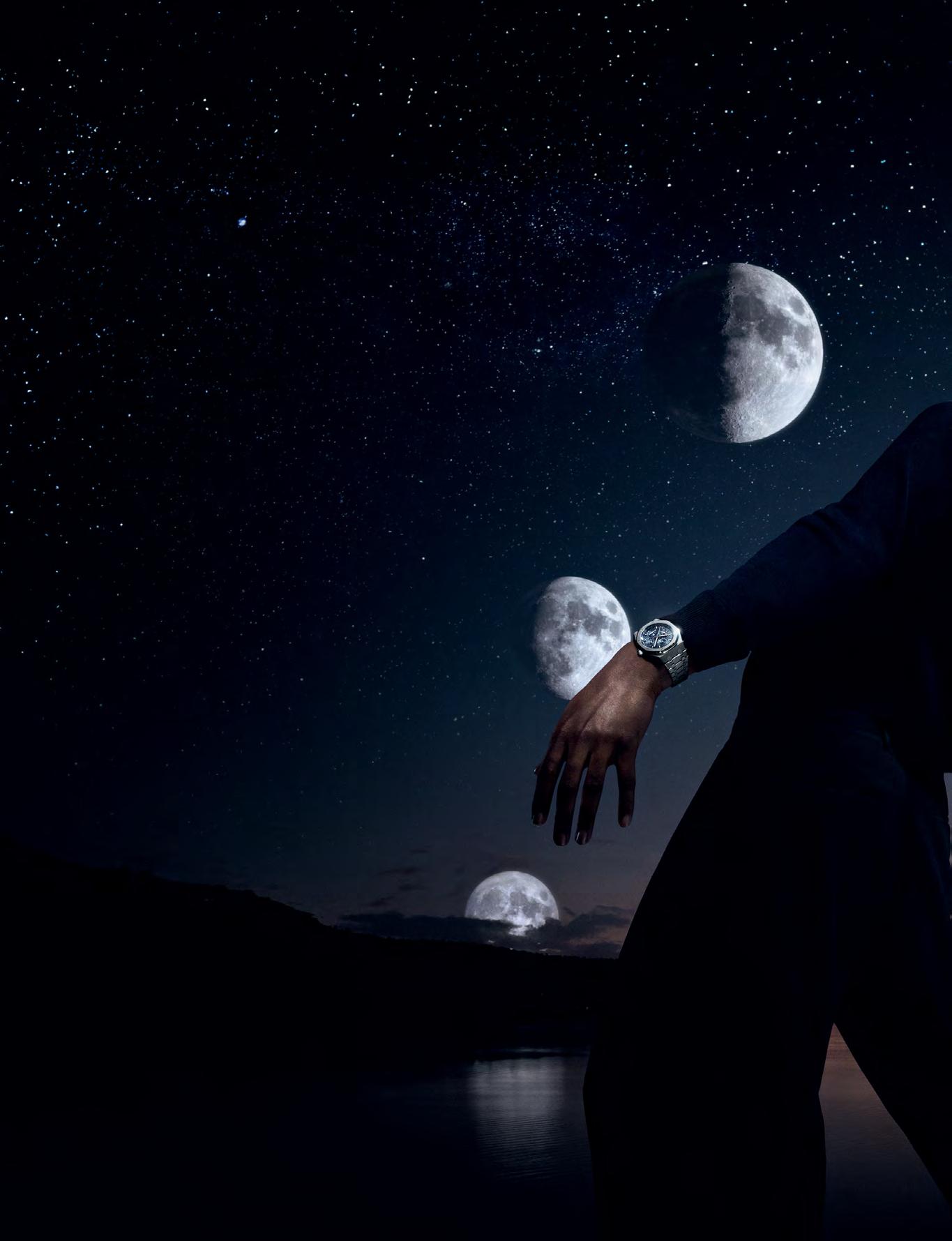
“Each innovation is a tribute to our legacy, ensuring that we remain at the forefront of horological artistry.”
Chérif Chamandi
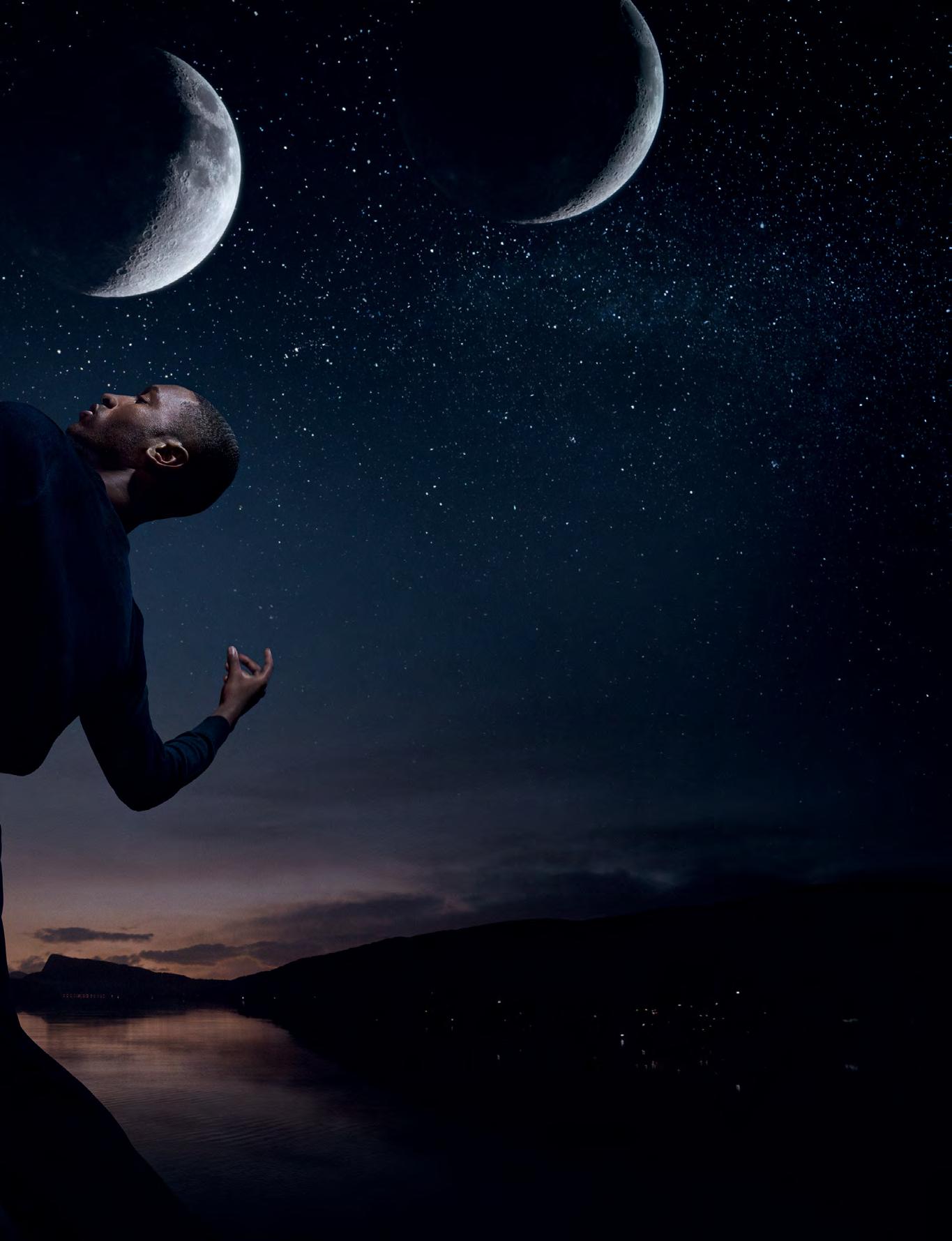

This same passion and perseverance are what Audemars Piguet celebrates today, a collective of talented individuals united by craftsmanship and innovation. Nestled in the Vallée de Joux, Le Brassus is more than just the birthplace of Audemars Piguet; it’s the lifeblood of the brand’s identity. C.C emphasizes the significance of this site, noting, “Le Brassus is a place where time seems to stand still, allowing for unparalleled focus and dedication. The resilience and hard work of its inhabitants have been instrumental in shaping our brand’s character. The cold winters of Le Brassus have cultivated a culture of perseverance, nurturing artisans who are not only skilled, but also deeply passionate about their craft.”
Marking this milestone, Audemars Piguet has introduced a new generation of perpetual calendar movement, Calibre 7138, designed for enhanced user comfort. “For the first time ever, all corrections of the perpetual calendar functions are possible via an ‘all-in-one’ crown,” C.C explains. Additionally, three limited “anniversary” editions of the perpetual calendar movement have been released, each
limited to 150 pieces; the Code 11.59 by Audemars Piguet Selfwinding Perpetual Calendar in 18-carat white gold, the Royal Oak Selfwinding Perpetual Calendar in stainless steel and the Royal Oak Selfwinding Perpetual Calendar in 18-carat Sand Gold, all at 41mm.
C.C highlights the unique design codes of these limited edition pieces, noting that they incorporate a vintage “Audemars Piguet” signature on the moonphase subdial and special engravings on the sapphire caseback to commemorate the anniversary.
Alongside its reputation for watchmaking excellence, Audemars Piguet has always been about community.
C.C highlights the brand’s multicultural identity, which is particularly relevant when it comes to Dubai. “Our own team is a melting pot of over 15 nationalities, a reflection of our strong sense of commitment and the ever-growing family, from our artisans to our clients. We celebrate the people, the network of individuals who make Audemars Piguet what it is today.”
Dubai’s emergence as a global luxury hub aligns seamlessly with Audemars Piguet’s philosophy. “The Middle East possesses a profound appreciation for artistry and legacy. Our clientele here seeks pieces that are not merely timekeepers but storytellers, echoing the brand’s rich history,” C.C explains. “We curate experiences and collections that resonate with the region’s discerning tastes, ensuring that our offerings are both relevant and reflective of our heritage. The region is always evolving and always pushing the boundaries.”
Balancing avant-garde designs with time-honoured techniques is a hallmark of Audemars Piguet. C.C articulates this synergy: “Our commitment is to push the boundaries of watchmaking while honouring the traditions that define us. Each innovation is a tribute to our legacy, ensuring that we remain at the forefront of horological artistry.” One need only consider the brand’s recent award-winning timepieces, including the Code 11.59 by Audemars Piguet UltraComplication Universelle RD#4, which won the Grand Prix D’Horlogerie De Genève for its groundbreaking 40 functions, 23 complications, and 1,100 components to understand the company’s ethos.
The luxury watch market is constantly evolving, and C.C identifies two key trends shaping the industry: “Community and agility are timeless trends in the luxury market. The Middle East has always been an exciting and diverse market, and one particularly notable shift over the past three years is the increasing number of independent, successful Arab women purchasing their own timepieces. This marks a new era in the region’s watch-collecting culture.”
Looking ahead, C.C hints at exciting developments for the brand. “For the very near future, you can expect a lot of magic during Dubai Watch Week. We pride ourselves on being part of such an incredible exhibition, born here in the UAE and now globally recognized. Our history and future will be on display for all to experience. Beyond that, there are a lot of plans for the UAE and the region. The opportunities are endless.”
C.C acknowledges the challenges that come with his role, particularly in balancing exclusivity with demand. “This industry is driven by passion, and passion results in an overflow of emotions. It is personal for our clients. One of the unique challenges I face in my role at AP is honouring our community while managing their requests. We are grateful for each and every one of our clients, and we strive to bring joy to all.” The next generation is key to Audemars Piguet’s future, says C.C, “The youth are our future, and what they seek is our continuity. We are constantly evolving to meet their expectations, ensuring that we remain relevant while staying true to our heritage.”
“The Middle East possesses a profound appreciation for artistry and legacy. Our clientele here seeks pieces that are not merely timekeepers but storytellers.”
Chérif Chamandi
According to C.C, there are values held dear at Audemars Piguet that he and many others admire, and this draws people to the brand, “I value sharing knowledge and fostering human relationships, which inspire me to boundlessly strive towards progress, both personally and professionally. This aligns seamlessly with AP’s family spirit, its drive to push boundaries, and its forward-thinking ethos,” he says.
Highlighting this sense of community and relations, C.C says, “The greatest achievement is being surrounded by so many beautiful minds and passionate souls who strengthen our roots in the region, from our cherished clients and trusted partners, such as the Seddiqi family, to our extraordinary watchmakers, our valued media partners, and our dedicated AP Middle East team. The best is yet to come.”
Audemars Piguet’s journey from the serene landscapes of Le Brassus to the vibrant metropolis of Dubai is a testament to its enduring legacy and adaptability. Guided by the principles set forth by its founders and driven forward by the passion of its artisans, the brand continues to be a beacon of excellence in the world of haute horlogerie. Under C.C’s stewardship, Audemars Piguet is poised to flourish in the Middle East, harmonizing the brand’s storied past with a visionary future. ■

Bvlgari’s Serpenti Infinito Exhibition reinvents a legacy for a new generation.
words LOUIS PARKS



Bvlgari’s Serpenti is a timeless symbol of endless reinvention, a bridge between the past and the present, a testament to a creativity that transcends time. With the recent Serpenti Infinito Exhibition, the Roman high jeweller celebrated 2025—the Year of the Snake—with an immersive journey into the rich history and ever-evolving future of its iconic emblem. But what does Serpenti truly rep resent for Bvlgari, and how does it continue to captivate new generations? Laura Burdese, Deputy CEO of Bvlgari, is just the person to explain the eternal appeal of the Roman snake.
The Serpenti Infinito Exhibition, held this January and February in Shanghai’s Zhangyuan, was a sensory experience that invited visitors to explore the multifaceted symbolism of the snake. Guests witnessed 28 artistic masterpieces by 19 international and Chinese creatives, all inspired by the serpent’s themes of transformation, wisdom, and renewal. The choice of Zhangyuan as the venue was deliberate—the historic shikumen compound, a fusion of Chinese and Western architecture, mirrors Bvlgari’s ability to merge tradition and modernity, East and West.
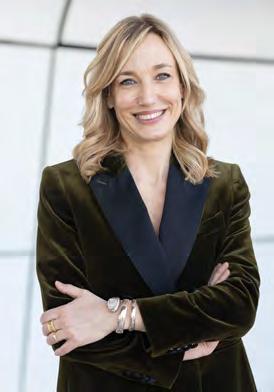
For Laura Burdese, Serpenti is a philosophy, an ethos that defines Bvlgari’s DNA. “It has been 140 years of continuous invention at Bvlgari,” she explains. “I think Serpenti is a perfect symbol to tell this story of constant and endless reinvention.”
The exhibition was structured in three chapters, each shedding light on different aspects of Serpenti’s journey. The first chapter delved into the serpent’s enduring cultural significance in mythology and jewellery design, featuring vintage Serpenti Tubogas watches from the 1960s and high jewellery pieces from Bvlgari’s archives. The second explored the serpent’s role as a cultural and artistic muse, showcasing interpretations like Xu Bing’s Square Word Calligraphy: Serpenti, which fused Chinese calligraphy and English text. The final chapter embraced Serpenti as a symbol of modern innovation, with digital art pieces like Refik Anadol’s AI Data Sculpture redefining the motif in the digital age.
For Burdese, the Serpenti Infinito Exhibition was an opportunity to highlight this theme of constant rebirth. “I think Serpenti is not only about artists representing Serpenti in their own artistry or craftsmanship, it’s also part of the cultural conversation. Serpenti is really a symbol of this possibility of reimagining, of entering a new year of your life, every day.”
Laura Burdese Vice President of Marketing and Communication at Bvlgari.
She emphasizes how Bvlgari maintains a consistent brand identity across all its product lines—whether it’s jewellery, watches, leather goods, or fragrances—while still allowing for creative evolution. “We make sure our clients are immersed in these beautiful universes, receiving this incredibly unique, multisensorial experience, from wearing the jewellery or having a watch or smelling the fragrance,” says Burdese.

Bvlgari is about more than beautiful objects, for Burdese, it’s about experiences, emotions, and cultural narratives. The maison’s storytelling around icons like Serpenti seeks to resonate with the new generation—people who appreciate authenticity, creativity, and cultural relevance.
Unlike many luxury houses, Bvlgari has leveraged local artistry and regional influ ences in its campaigns. The Middle East, in par ticular, holds a deep connection to Serpenti, with its symbolism tied to rebirth, protection, and power. Last year’s Bvlgari x YUNG collaboration, which saw our coverstars wearing pieces from the famed maison, highlighted this international appeal, blending regional aesthetics with the global narrative.

For Serpenti Infinito, Bvlgari has ambitious plans in 2025, Burdese reveals. The exhibition will travel globally, with stops in Korea, India, and more around the world, each with a unique regional twist; “it will be a global concept but with a local tweak so in Korea, different artists, different artists different ideas, a different place, so it will reflect a different facet, it willl be a journey, very consistent, but also slightly different,” she says.
Bvlgari’s elevation of the Serpenti motif continues through new products and additions to favourites such as the Serpenti Viper and Turbogas collections, blending sleek, contemporary designs with iconic craftsmanship. The Serpenti Cuore 1968 bag, inspired by the Serpenti Harlequin jewellery-watch, brings the motif into the world of accessories with a playful yet luxurious heart-shaped aesthetic.
For Burdese, the future of Serpenti is limitless. “In every single country of the world the serpent has slightly different meanings, but always it sheds its skin, it’s changing, invention, rebirth, this possibility of a restart, of positive energy and I think it expresses the Bvlgari spirit very well,” she says. The Serpenti Infinito Exhibition is itself a testament to the brand’s legacy of reinvention. By blending history, culture, and modern innovation, Bvlgari has ensured that Serpenti remains as relevant today as it was when it first slithered into the world of luxury eight decades ago.
For audiences around the world—but especially in the Middle East— Serpenti is an icon. It’s a symbol of self-reinvention, empowerment, and boundless creativity. And as Serpenti continues to evolve, it reminds us that transformation is a way of life. ■


An icon of style and practicality, discover the many faces of Reverso.
words LOUIS PARKS
Since its inception in 1931, the Jaeger-LeCoultre Reverso has stood as a masterclass in design, functionality, and artistic expression. Originally conceived as a solution for British polo players seeking a watch capable of withstanding the rigors of the sport, the Reverso’s defining feature—its reversible case—has since become a hallmark of horological ingenuity. In 2025, Jaeger-LeCoultre celebrates the legacy of this Art Deco icon while unveiling a series of remarkable novelties that push the boundaries of craftsmanship and technical excellence, here we take a look at three in particular.
To understand the enduring appeal of the Reverso, one must look to its origins. As Jérôme Lambert, CEO of JaegerLeCoultre, explains, “The Reverso was born as an extraordinary watch, and it became, then, an icon.” Initially designed to protect the watch dial from impact during polo matches, the swivelling mechanism became an emblem of both resilience and elegance. To mark the 100th anniversary of the Exposition des Arts Décoratifs—the Parisian event that truly birthed the Art Deco movement—Jaeger-LeCoultre has dedicated this year’s novelties to exploring the Reverso’s aesthetic and mechanical evolution.
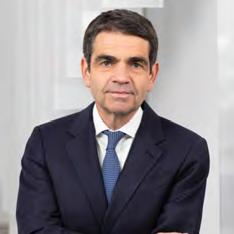
Clearly inspired by Art Deco purity, the Reverso was also one of the first steel watches—a daring departure from the gold and pocket watches of the early 20th century, and it was intended to be worn at all times. Beyond its aesthetic, the Reverso has always embraced complications that maximize its dual-faced design. “All the complicated watches are very crowded and have only one face to express themselves,” says Lambert.
“With the Reverso, you can use face one and face two to express yourself.” This principle has led to the creation of some of the most exquisite double-sided watches in history.

Jérôme Lambert, CEO of Jaeger-LeCoultre
Among the standout releases this year is the incredible Reverso Tribute Enamel ‘Shahnameh’, a series of miniature-enamel masterpieces inspired by the Persian epic of the same name. Each caseback is adorned with detailed depictions from the 16th-century Shahnameh manuscript, requiring over 100 hours of meticulous craftsmanship.
“So we’re back to the story of genesis. The front dial features guilloché with translucent enamel. On the back, it’s miniature painting. So here we replicate exactly the large painting or the larger page in these two square centimetres of the back of the watch,” says Lambert. The release not only pays tribute to Persian artistry but also honours the historic connection between polo - a key element in the Reverso’s inception - and Persian culture.
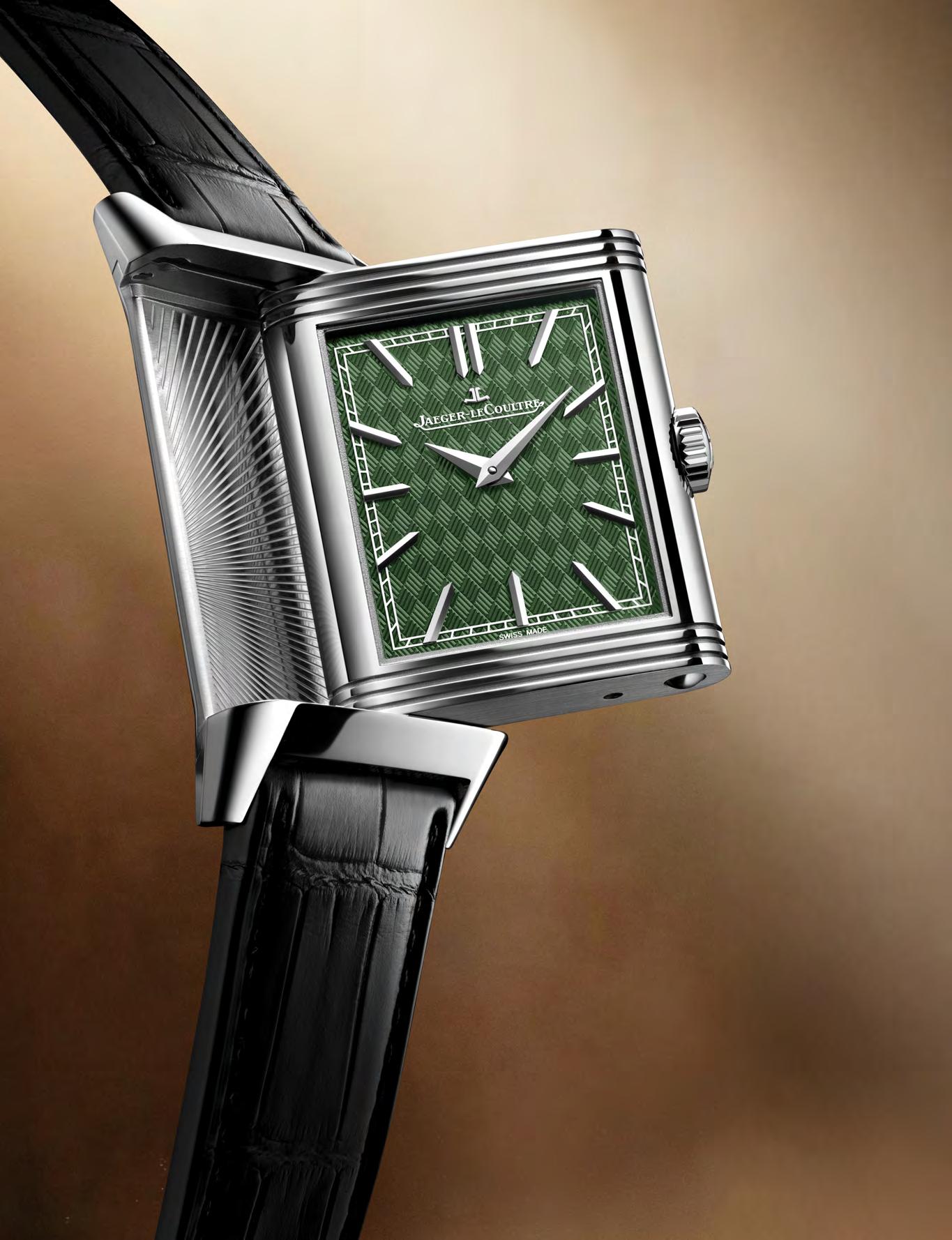



“With the Reverso, you can use face one and face two to express yourself.”
Jérôme Lambert

Another highlight is the Reverso Tribute Geographic, which introduces a refined take on the world-time complication. Featuring a newly developed in-house movement, Calibre 834, this model presents an elegant dual-time display with a laser-cut world map on its reverse dial, exemplifying Jaeger-LeCoultre’s commitment to horological artistry. “If you want to show your sophistication while wearing a watch every day, you will have a Geographic,” says Lambert, speaking to the watch’s universal appeal.
And then, of course, there’s the Reverso Tribute Minute Repeater, a technical marvel that revives Jaeger-LeCoultre’s legacy of chiming complications. Powered by Calibre 953, it features a guilloché enamel dial that visually echoes the resonance of sound waves. “The guilloche, it looks like a sound reflection that is moving from centre to side. It’s done on a machine from the 19th century, where we design very carefully every single element that you see here,” says Lambert. This level of aesthetic and acoustic innovation reinforces Jaeger-LeCoultre’s position as a leader in fine watchmaking.
For over nine decades, the Reverso has continuously evolved while remaining faithful to its origins. With each reinterpretation, Jaeger-LeCoultre further cements its reputation for blending tradition with modernity. As Lambert succinctly puts it, “You are not born as an icon; you become an icon, and the test of time makes you iconic.” The 2025 novelties serve as a testament to this philosophy, ensuring that the Reverso remains as captivating today as it was in 1931. ■

TAG Heuer’s motorsport legacy fuels innovation and cuttingedge watchmaking.
words LOUIS PARKS



Swiss luxury watchmaker TAG Heuer has long been synonymous with motorsport. From pioneering precision timekeeping to adorning the wrists of legendary drivers, the brand’s connection with racing is undeniable. With new releases across its iconic collections, including the Formula 1 and Carrera lines, TAG Heuer continues to embrace its racing legacy while pushing the boundaries of watchmaking innovation. At the heart of this philosophy is Nicholas Biebuyck, the brand’s Heritage Director, who sat down with us to discuss TAG Heuer’s past, present, and future.
Biebuyck is unequivocal when asked about TAG Heuer’s relationship with racing: “The simple fact is, TAG Heuer is motorsport.” The brand has been embedded in the DNA of competitive racing since its earliest days, providing timekeeping instruments that shaped the sport. “Heuer had a presence through timing, but of course, this was definitely crystallised during the 1960s and 1970s when we saw all of the great motor racing icons wearing the watches,” Biebuyck explains, referencing legends such as Ayrton Senna, Alain Prost, Niki Lauda, and, latterly, Lewis Hamilton.

In 2025, TAG Heuer will officially return as Formula 1’s timekeeping partner, a position it previously held from 1992 to 2003. “This is just a return for us to our rightful place,” Biebuyck says, emphasizing the brand’s enduring role in motorsport history.
This spirit of precision and excellence is reflected in the latest series of Carrera Chronographs and Formula 1, which introduces five dynamic timepieces, including a special edition dedicated to Oracle Red Bull Racing. Featuring steel and lightweight titanium cases, and vibrant dial colours, the pieces at once channel the adrenaline of racing while offering sophisticated options.
As befits the times, TAG Heuer is reinterpreting its iconic designs with modern craftsmanship. Rather than reinventing collections from scratch, the brand’s design teams meticulously study the lineage of models like the Carrera and Formula 1. “We distil them [our watches] down into their very essence and use that as the foundational building blocks to create something brand new with the latest technology,” says Biebuyck.
This approach has resulted in remarkable new launches, such as the TAG Heuer Carrera Chronograph and Carrera Chronograph Tourbillon, which embrace the Glassbox design, ensuring maximum readability. “We’re super happy with the new Glassbox foundation that we launched in 2023 for the 60th anniversary of the Carrera.The initial pieces were extremely well-received, the blue and the Reverse Panda, and then beyond that, through the derivatives, like the Skipper, the Tourbillon, the Chronosprint.” The new TAG Heuer Carrera Chronograph Tourbillon in purple is limited to 200 pieces and further underscores TAG Heuer’s technical expertise with its in-house TH20-09 movement.
“It’s not just about cars—it’s about the pursuit of excellence, teamwork, and the human spirit.”

The new Carrera Chronosprint x Porsche Rallye celebrates Porsche’s 1965 Monte Carlo Rally success with a design inspired by Porsche dashboards and the stopwatches used in the actual race car. “We’ve been official partners of Porsche since 2021, but we’ve been closely connected since the 1950s, when we shared the name of Carrera Panamericana through the 1960s, where many of the celebrated drivers of the era were wearing the watches,” Biebuyck says. Available in steel and 18K yellow gold, the watch features red lines on the flange which pay homage to the 1965 Porsche 911’s impressive acceleration as it reached 100 km/h in 8.4 seconds.
Beyond the racing-inspired models, TAG Heuer has also visited another side of the Carrera collection, presenting the Carrera Date and Carrera Chronograph Glassbox Precious editions in updated shades. These beautiful additions offer a fresh perspective, catering to both male and female collectors. The Carrera Date brings elegance with powdery pink and lilac dials, diamond indices, and a 36mm case size that nods to the original Carrera’s proportions. Meanwhile, the Carrera Chronograph Precious iteration elevates the Glassbox concept with a diamond-set flange and a choice of blue or pink circular-brushed dials.
Biebuyck is keen to emphasize that while TAG Heuer’s heritage is deeply rooted in motorsport, its designs remain authentic rather than forced. “We can see other brands taking kind of contrived elements of automotive design and shoehorning it into their product. That’s the last thing we want to do,” he states. Instead, the company integrates racing inspiration seamlessly, ensuring each watch feels both timeless and contemporary.
With a strong emphasis on the continuing development of in-house movements, TAG Heuer maintains control over its engineering future. The TH20 movement, featured in the Carrera lineup, exemplifies this, offering an 80-hour power reserve and exceptional chronograph performance. “It’s super important for us to have an in-house chronograph movement. We are the brand of the chronograph at the end of the day,” Biebuyck explains.
As TAG Heuer embarks on a new chapter in its history, its unwavering commitment to precision, craftsmanship, and innovation remains evident. Whether through the revival of historic partnerships or the introduction of groundbreaking timepieces, the brand continues to define itself as the ultimate motorsport watchmaker. For Biebuyck, it’s all clear as he circles back to TAG Heuer’s essence, “Motor racing isn’t just about cars; it’s about the pursuit of excellence, teamwork, and the human spirit,” much like the company’s incredible timepieces.
With its latest releases, TAG Heuer reinforces its place at the intersection of racing and horology, proving once again that it doesn’t just keep time—it sets the pace. ■


This editorial explores the duality of red and black—red, the dawn of a new era, and black, the descent into a sleepless night, reflecting the shifting balance between tradition and change in the Arab world. This story captures the weight of history—a revolution eternally in motion.


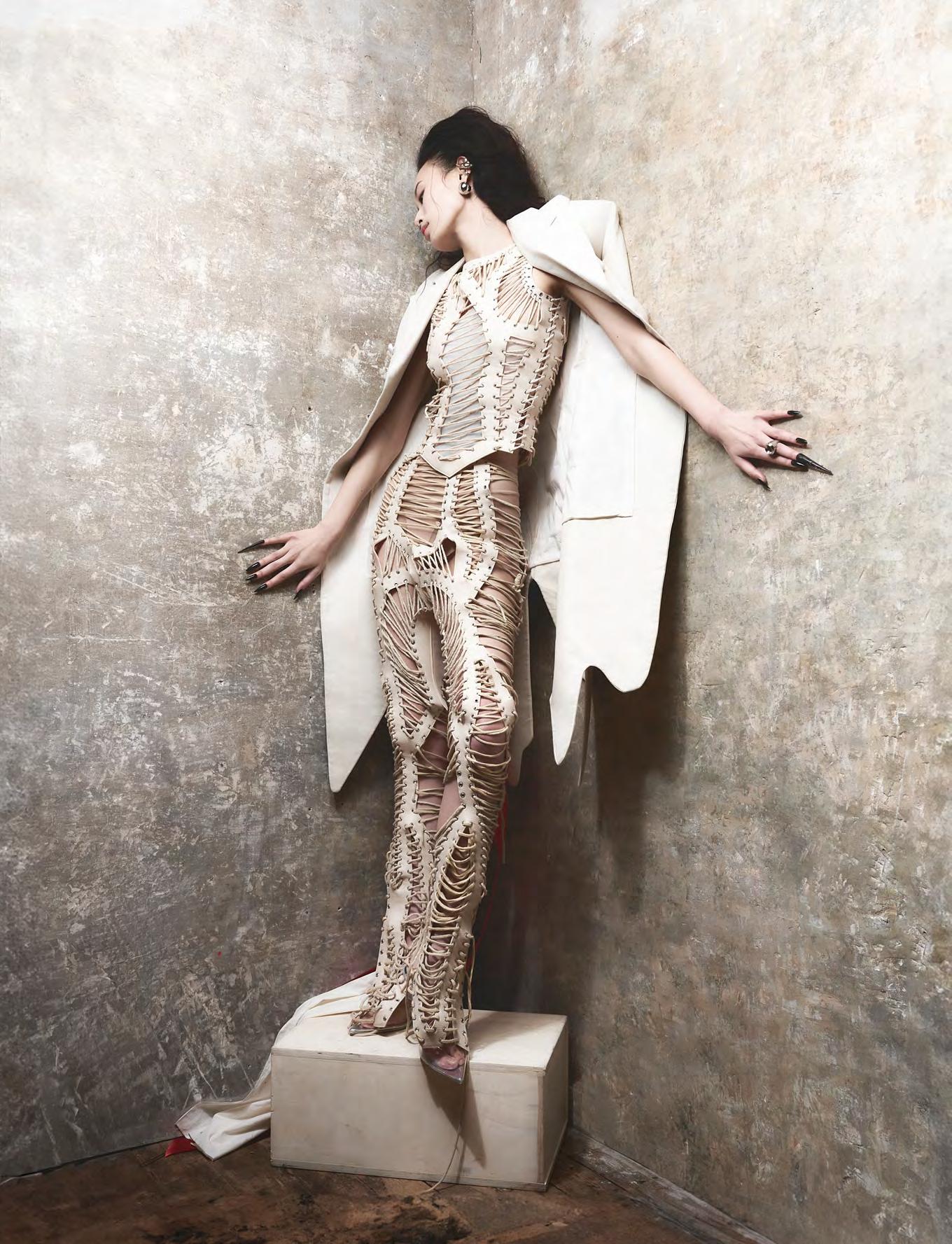
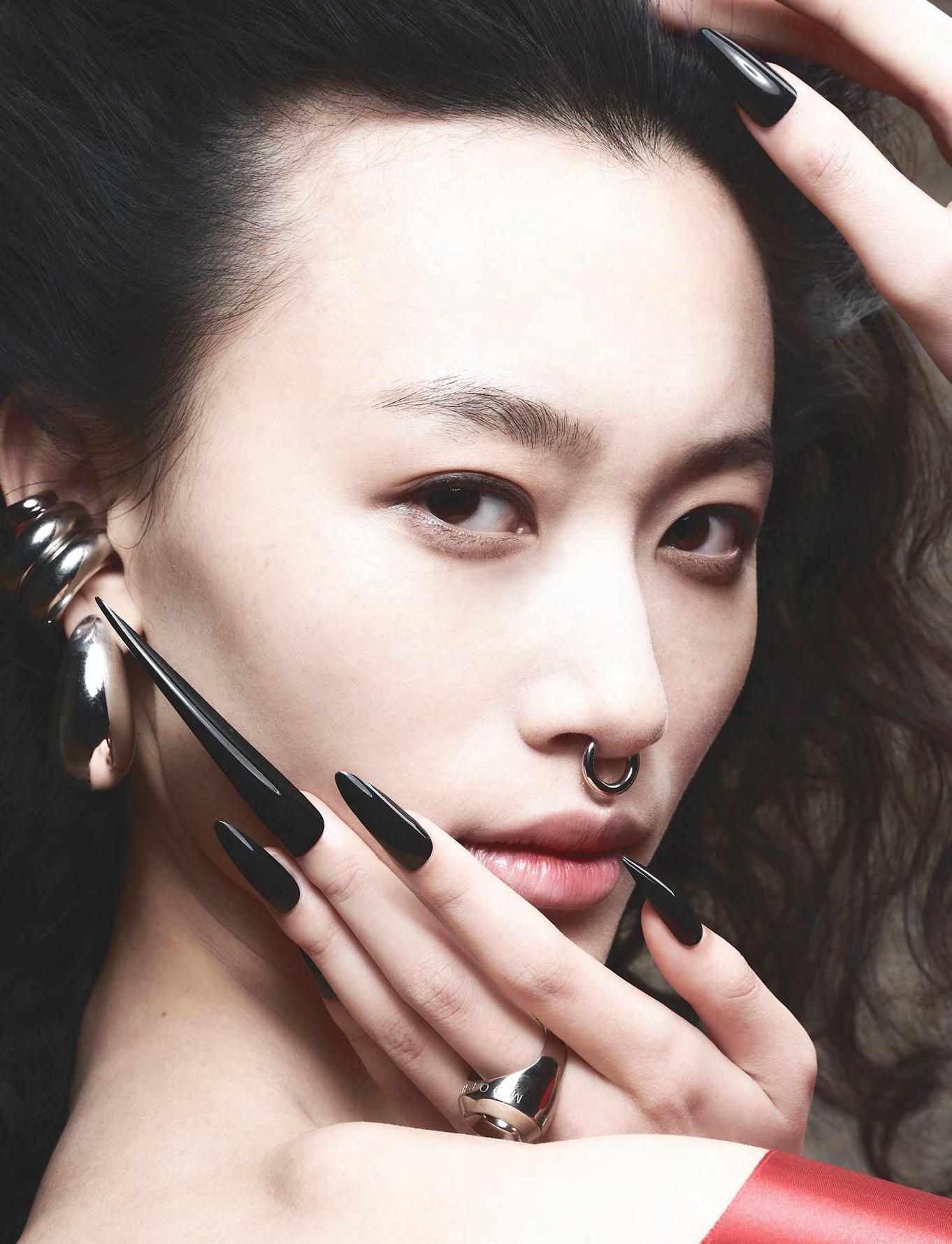

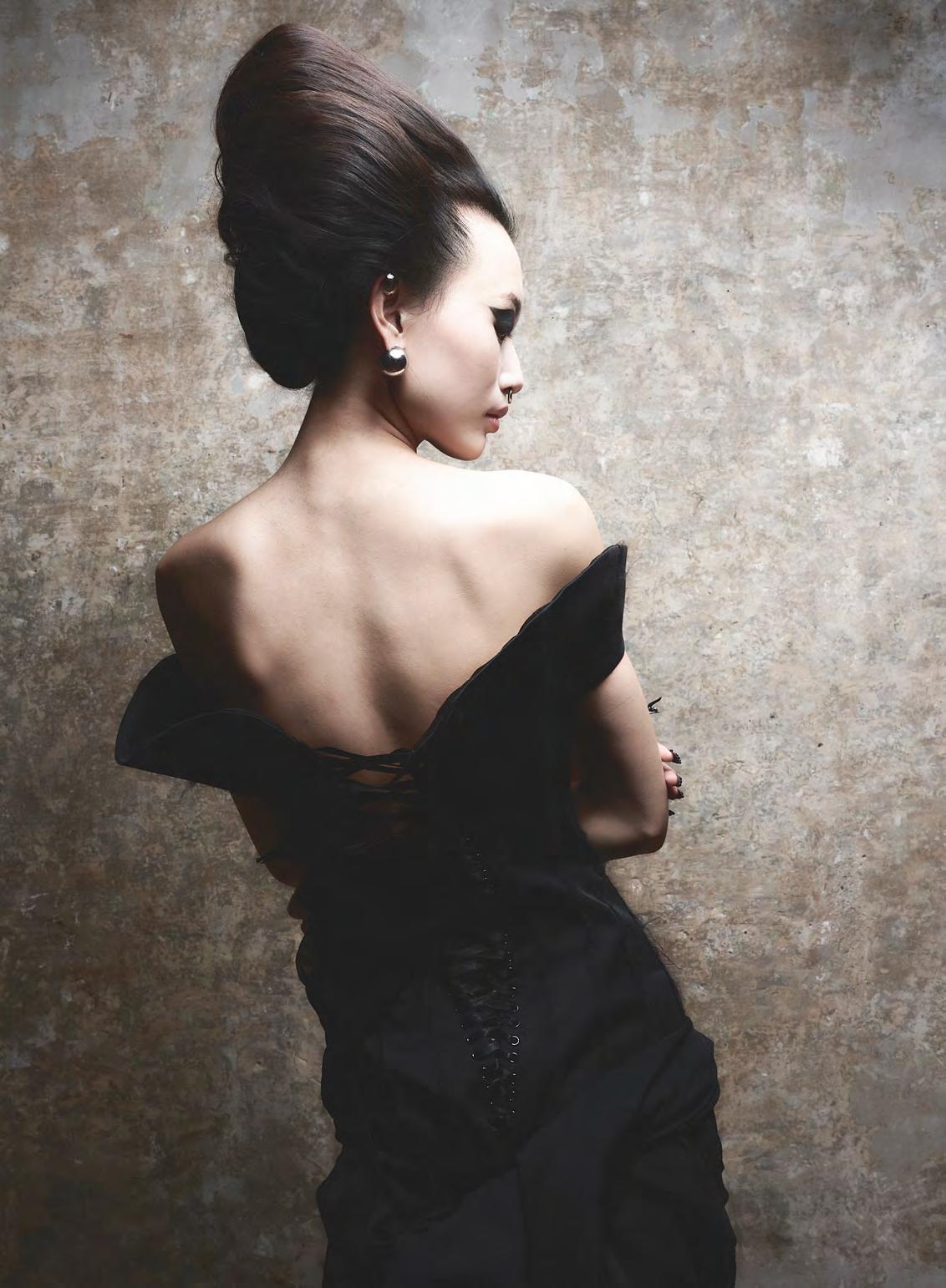

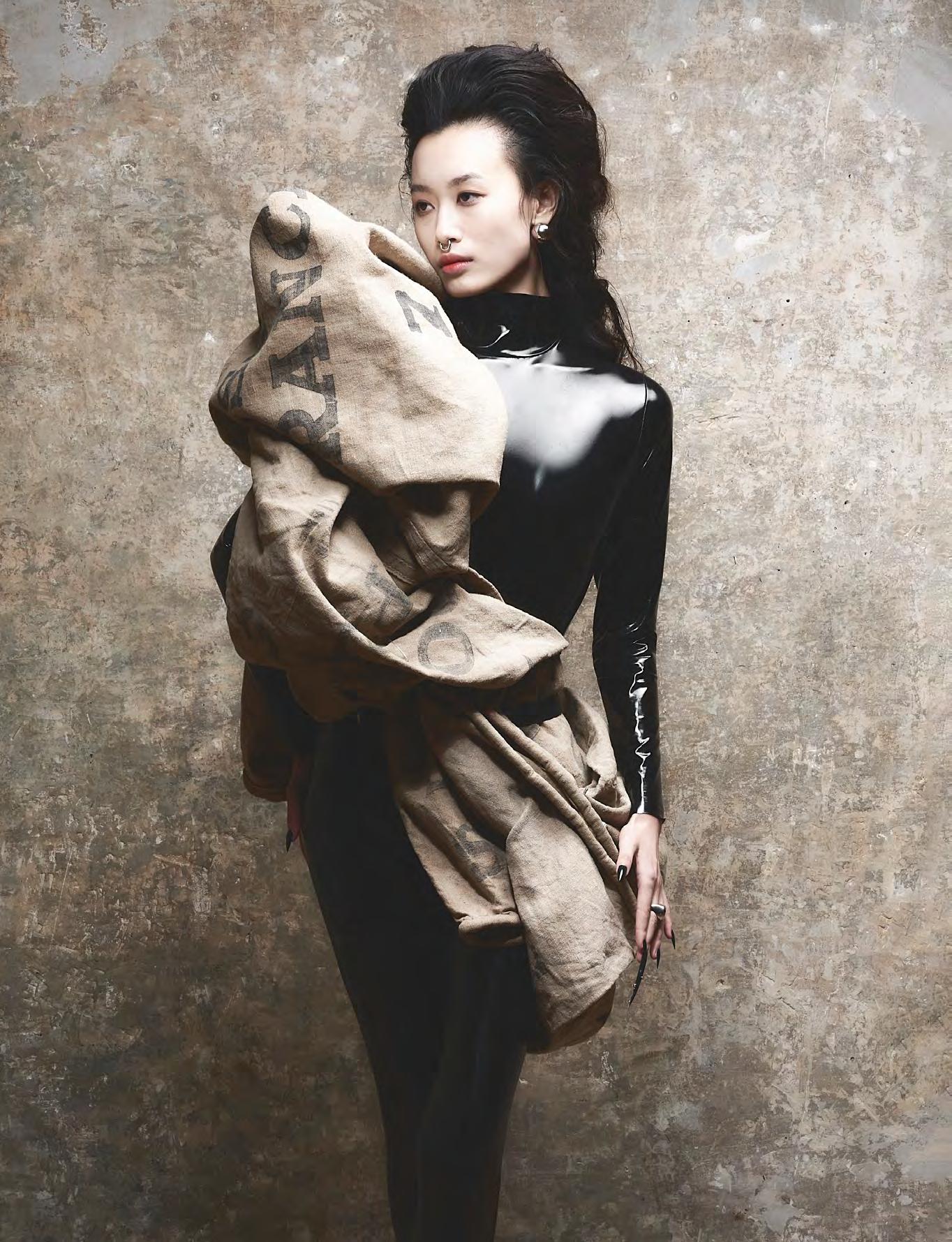



From effortlessly chic totes to statement minis, elevate your wardrobe with the latest designs, combining timeless elegance with modern edge. Carry the season in style with pieces that turn heads wherever you go!
curation SANDRA
graphics SAIF

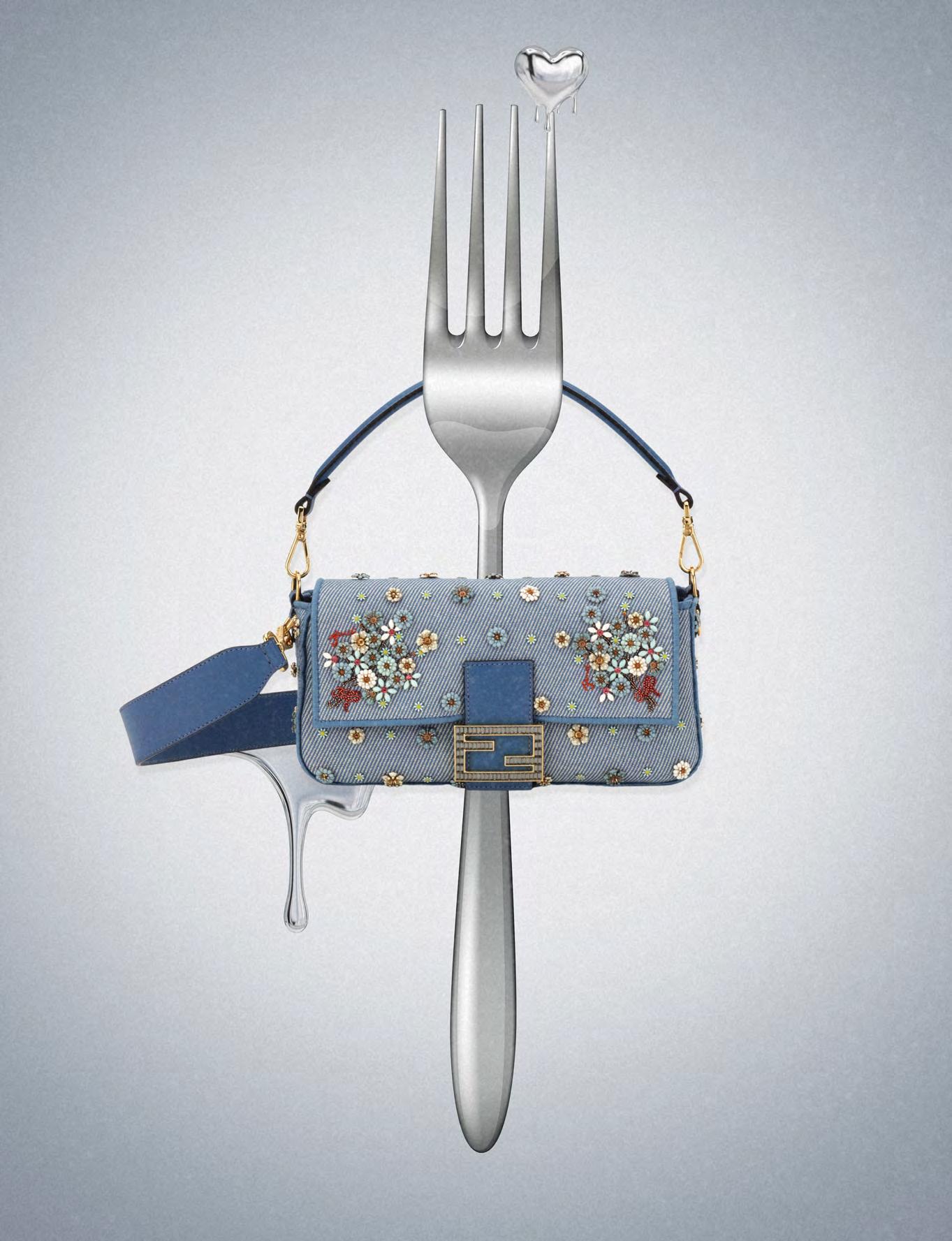
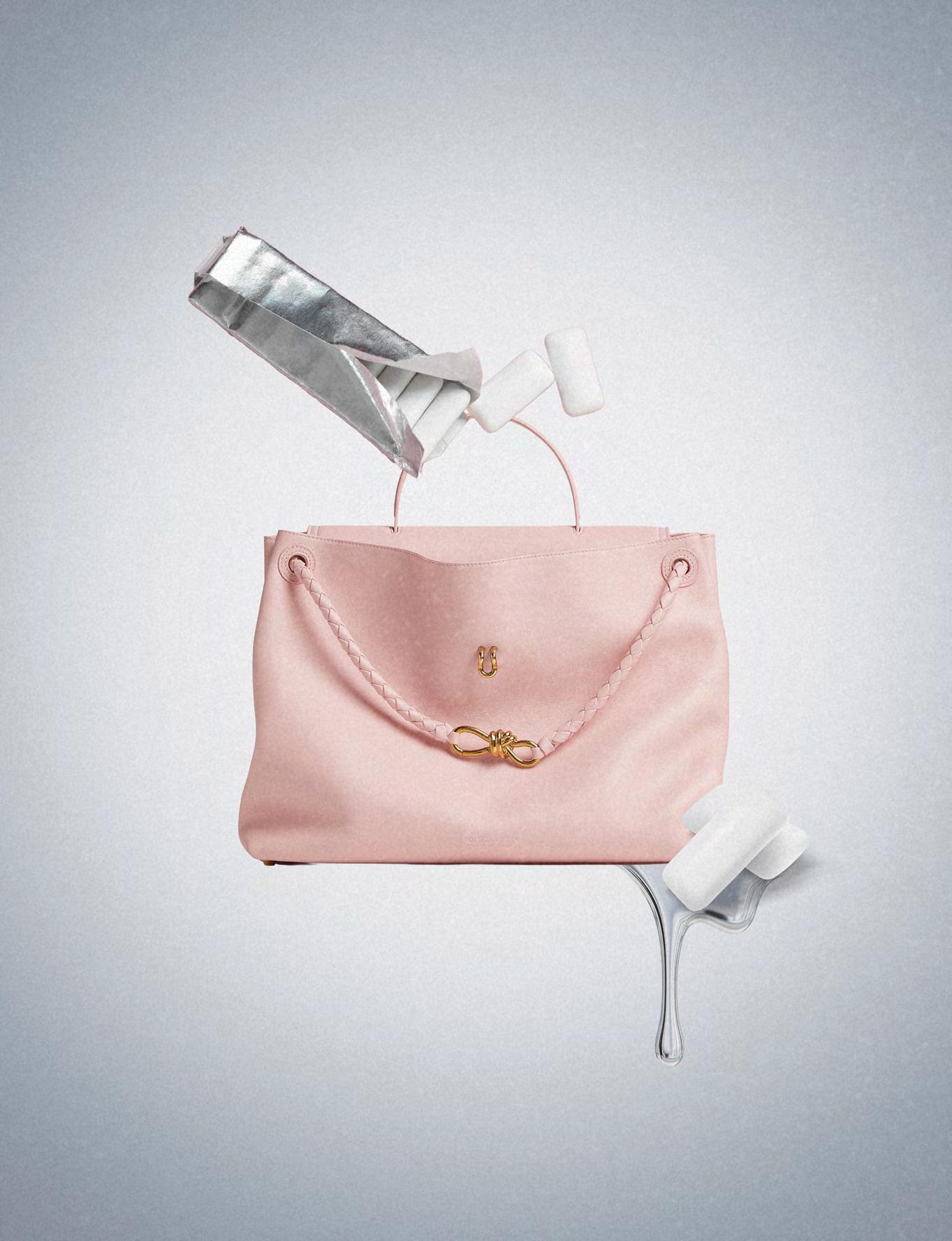
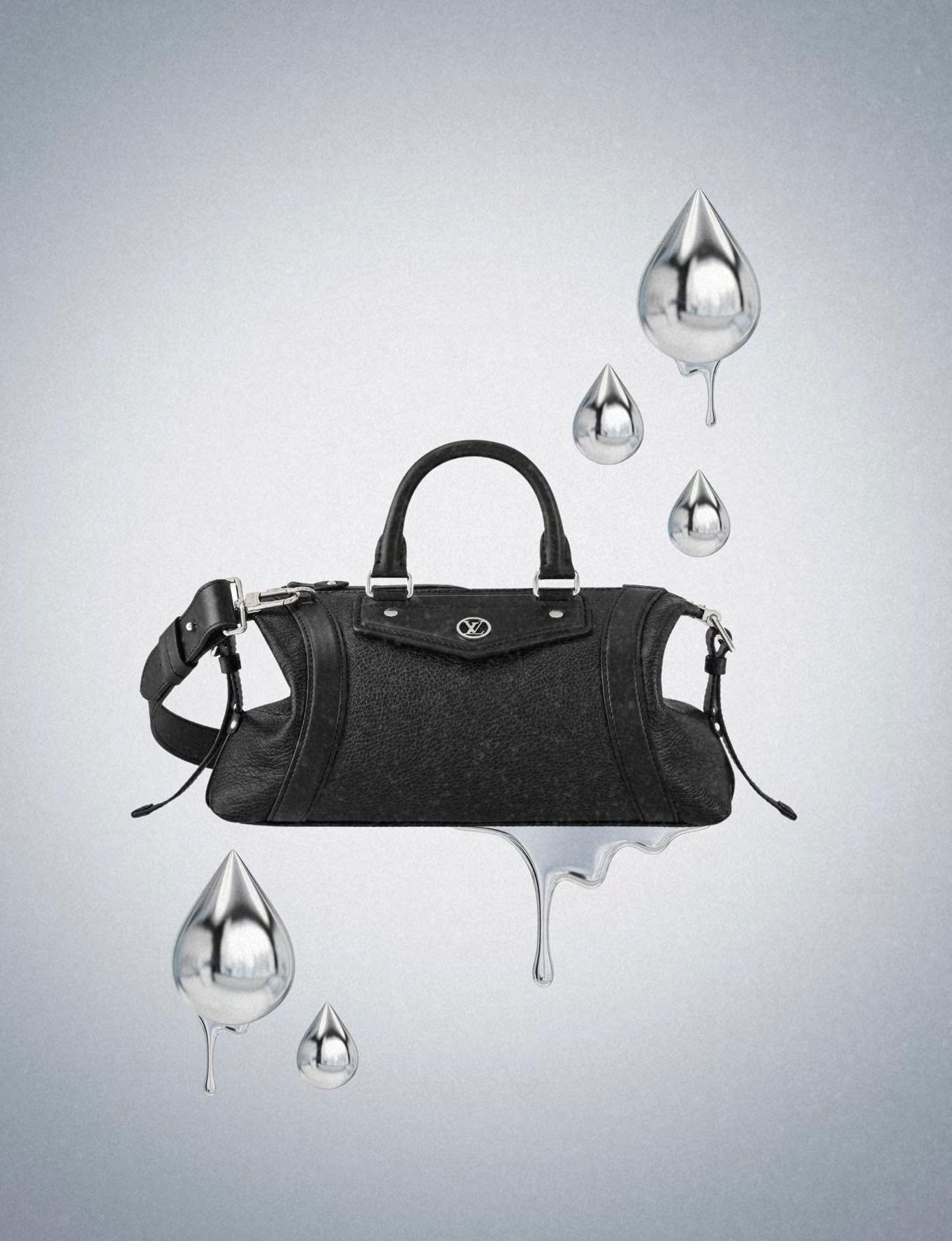




Prada Mode arrived in the UAE, transforming MiZa into a space where history, craftsmanship, and contemporary creativity converged in an immersive cultural experience.
words LOUIS PARKS

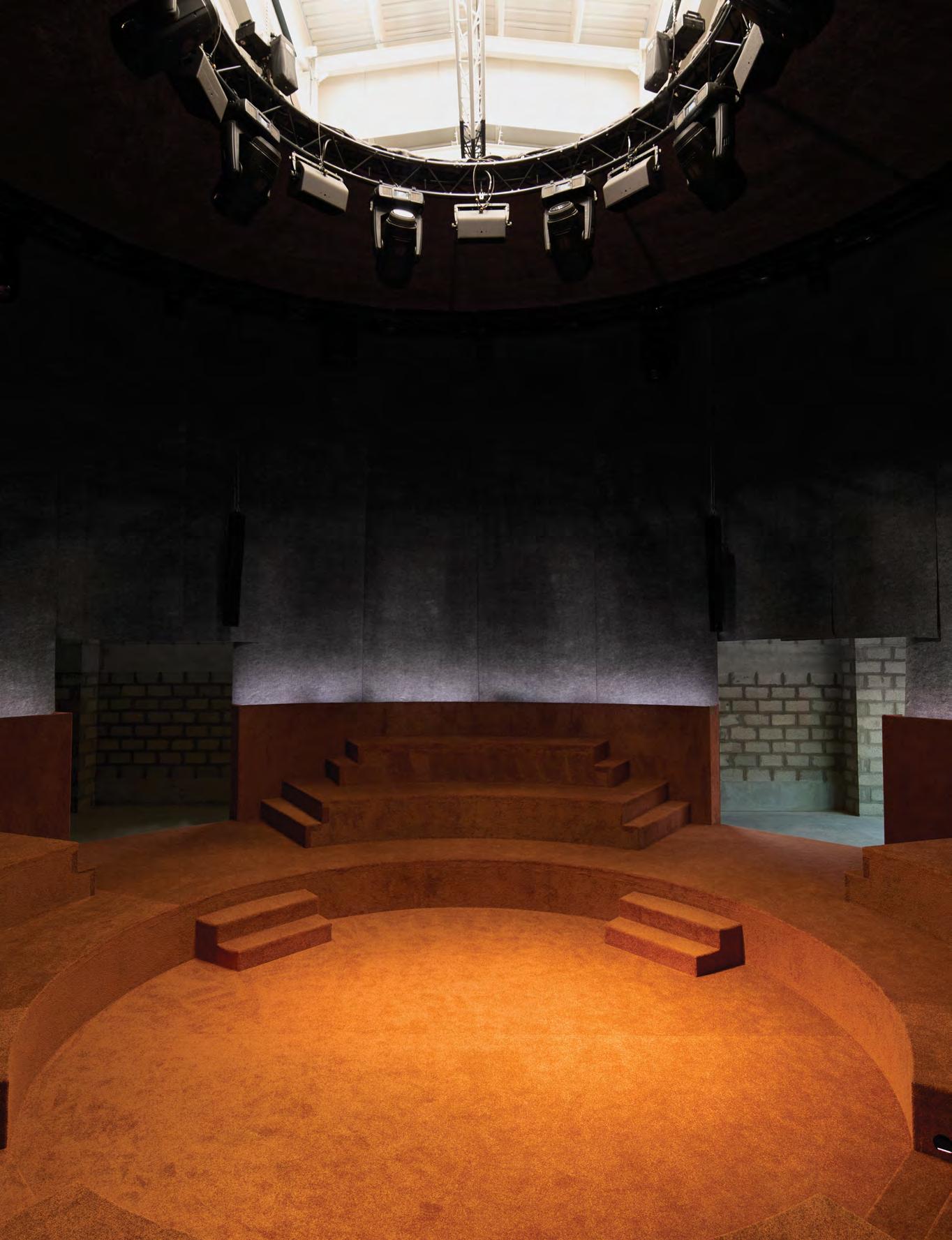
The event reinforced Mina Zayed’s position as a growing hub for artistic and cultural innovation.
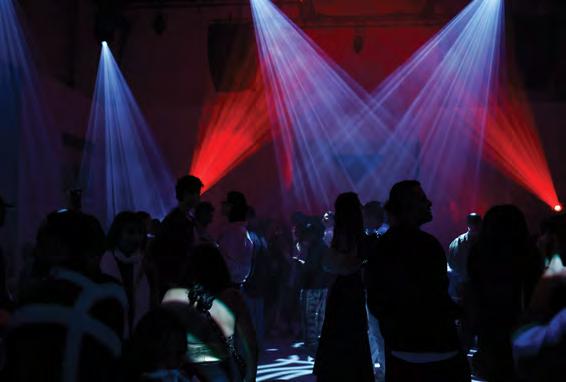
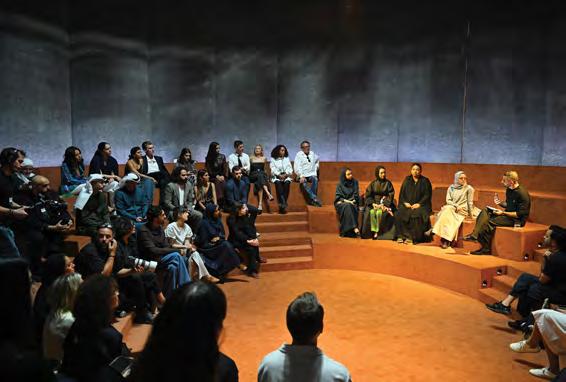
In February, Prada Mode made its highly anticipated appearance in Abu Dhabi, bringing its signature fusion of art, music, and cultural dialogue to MiZa in Mina Zayed. Over two days, February 11 and 12, the exclusive event—curated by renowned multidisciplinary artist Theaster Gates—explored themes of duality, spirituality, and craftsmanship in an age of technological dominance. On February 13 and 14 the event opened to the public.
At the heart of Prada Mode Abu Dhabi was an architectural structure that divided the space into two distinct realms: one of quiet contemplation and another of vibrant movement. The interior of the cylindrical space fostered reflection, featuring acoustic performances that encouraged guests to engage in introspection and deep listening. In contrast, the exterior space buzzed with energy, hosting live performances and DJ sets that celebrated the dynamic spirit of contemporary sound culture. This interplay between stillness and celebration was further enhanced by the event’s sonic program, co-curated by Gates alongside NTS, the influential creative platform founded by Femi Adeyemi.
Prada Mode Abu Dhabi placed a particular emphasis on celebrating the voices and creativity of Arab women. The cultural program, curated by art expert Myrna Ayad, featured a series of conversations, performances, and exhibitions highlighting the intellectual, artistic, and cultural contributions of women from the region. Through engaging discussions and immersive visual storytelling, the event provided a platform for female creatives to explore themes of heritage, identity, and modernity, positioning their work within a broader global dialogue.


Speaking of his vision for the event, Gates stated, “This space is a reflection on the spiritual possibilities of quietude, the power of gathering, the contiguity between the aesthetic of the past and their relevance for the future, and reverence for Arab women. As we increasingly exist in a world where computer-generated possibilities govern our reality, my concept for Prada Mode Abu Dhabi is an homage to our interiority, the human hand, and our spiritual contributions to the rich cultural histories of this region. I’m honoured to host Prada Mode Abu Dhabi, deepening my relationship with Prada as a cultural institution invested in global dialogue and creative excellence, and celebrating the artistic traditions and futures of Abu Dhabi.”
The culinary experience was another key element of Prada Mode Abu Dhabi. Designed by chef Salam Daqqaq, the menu paid homage to the diverse diasporic influences that shape Abu Dhabi’s food culture. Guests were treated to a selection of dishes that blended traditional Emirati flavors with global inspirations, reflecting the city’s rich history as a crossroads of trade and cultural exchange.
For the first two days, Prada Mode Abu Dhabi operated as an exclusive members-only club, offering an intimate and immersive environment for attendees to experience its carefully curated program. Following this, on February 13 and 14, the space opened to the public, welcoming a broader audience to engage with the installations, performances, and culinary offerings.
As Mina Zayed continues its transformation into a vibrant hub for creative industries, Prada Mode’s presence underscored the neighbourhood’s evolving role as a space for artistic and cultural innovation. Through its thought-provoking installations, dynamic performances, and commitment to fostering dialogue, Prada Mode Abu Dhabi reaffirmed its position as a global platform for cultural exchange, bridging past and future, tradition and innovation. ■

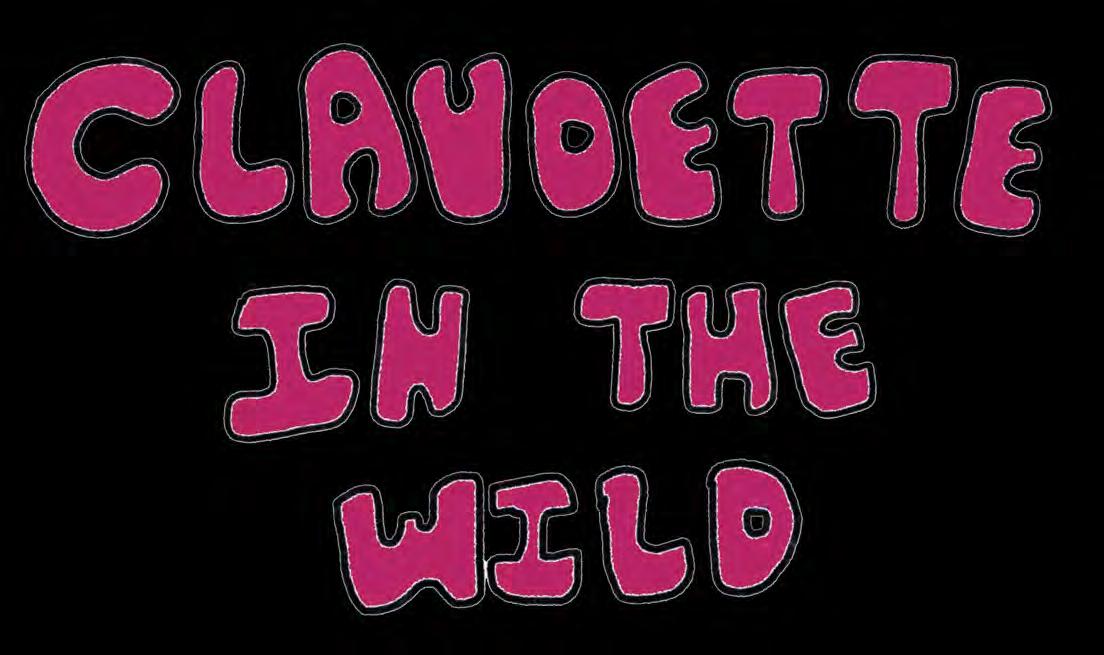
Claudette was born to bridge the gap between opposites, feminine and masculine, happy and sad, peace and chaos. Through honest and intuitive messaging, Claudette gives voice to unspoken thoughts and quiet truths. She calms the ego, puts pride aside, and brings a grounded energy to your fits. In this collaboration with YUNG, Claudette steps into the world of fashion as more than just a muse, she becomes the connector. A visual dialogue between artist and style, this editorial merges illustration and fashion into one fluid story. Claudette’s in action now, right where she belongs.
illustrator LAYAN DABBOUS


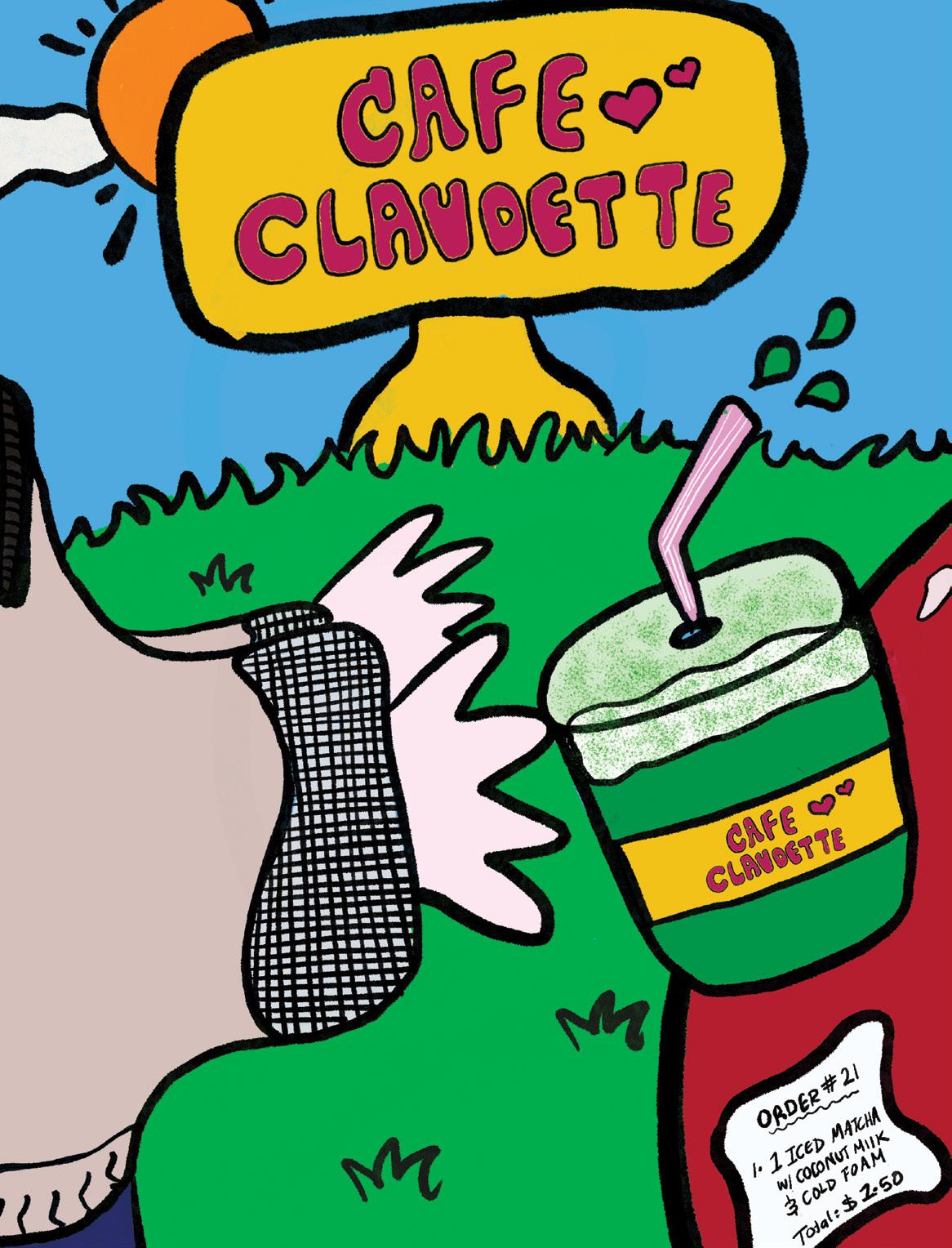


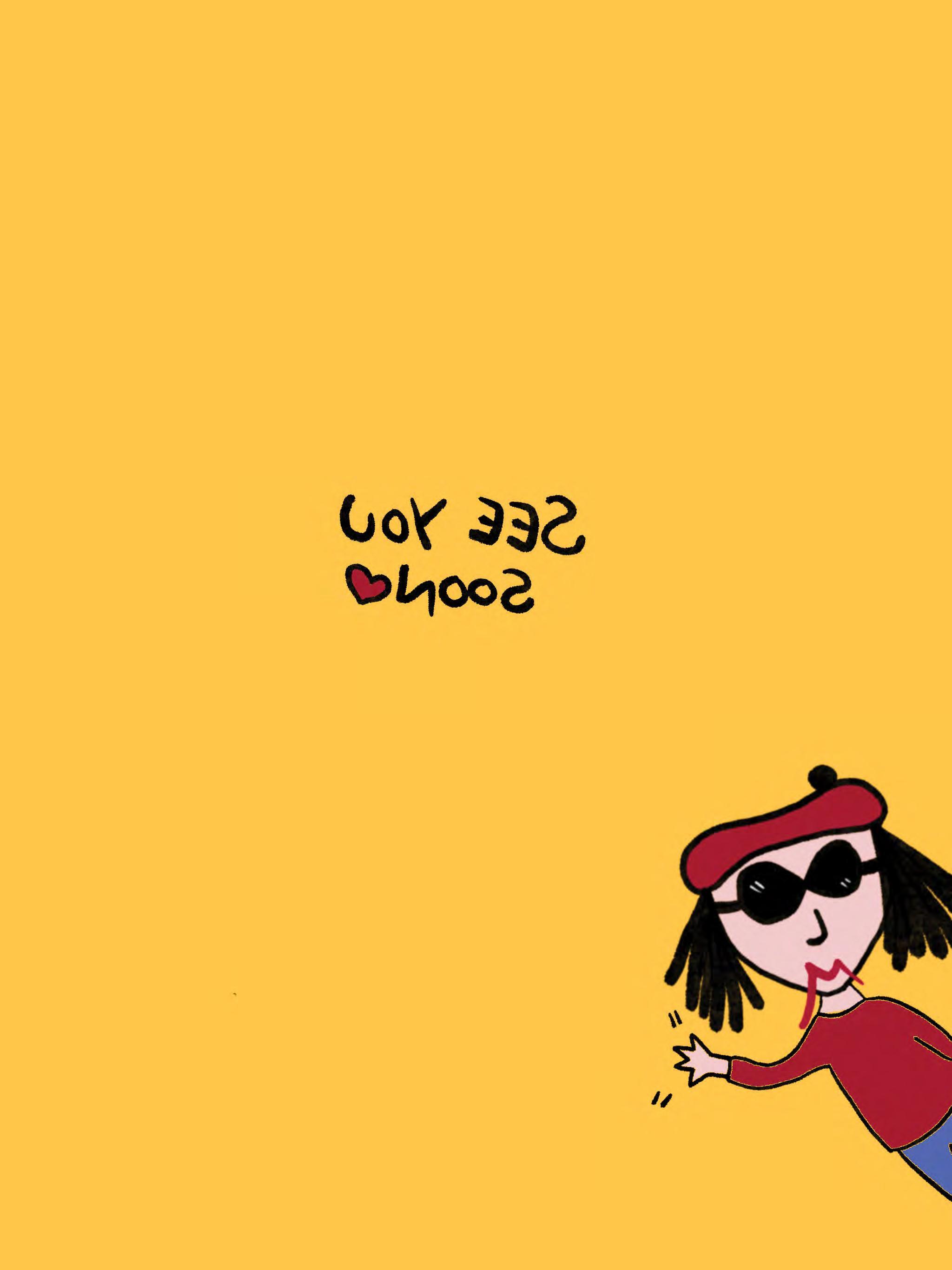



FENDI’s century of legacy, innovation, and iconic style.
words LOUIS PARKS
Step into the world of FENDI, and you enter a realm where heritage and modernity collide. Since its founding in 1925, the Roman fashion powerhouse has pushed boundaries, redefining luxury with an effortless blend of craftsmanship, innovation, and fearless creativity.
From Adele and Edoardo FENDI’s artisanal workshop to the global influence of Karl Lagerfeld, and later the contemporary vision of Kim Jones, Delfina Delettrez FENDI and Silvia Venturini FENDI—this is a story of bold moves, game-changing fashion, and cultural impact. As FENDI celebrates its 100th anniversary, the brand remains a force of nature—one that continuously reinvents itself while staying true to its DNA.
FENDI’s history is woven with milestones that forever changed the fashion industry. In the 1960s, the five FENDI sisters made an unexpected and revolutionary decision— bringing Karl Lagerfeld on board in 1965. The collaboration lasted 54 years, making it the longest creative partnership in fashion history. Lagerfeld introduced the now-iconic FF logo, which originally stood for “Fun Furs,” redefining luxury outerwear and establishing FENDI as a brand synonymous with innovation.
The House continued to break boundaries, staging some of the most breathtaking fashion shows ever seen. From the Great Wall of China to the Trevi Fountain in Rome, FENDI transforms runways into historical moments. The 25th anniversary of the Baguette bag saw an unforgettable tribute at New York’s Hammerstein Ballroom, reminding the world of its enduring cultural impact.
Fashion history was forever altered in 1997 when Silvia Venturini FENDI created the Baguette—a compact yet statement-making bag that redefined accessories. This was no mere purse, it was an attitude, an icon, a phenomenon. When Sex and the City’s Carrie Bradshaw declared, “It’s not a bag, it’s a Baguette,” the world listened.

FENDI expanded this approach to craftsmanship, introducing the Peekaboo bag in 2008, a design inspired by playfulness and a touch of mystery. Each creation was a testament to the brand’s obsession with detail, from the materials to the hand-finished techniques.
The magic of FENDI lies in its ability to evolve without losing sight of its roots. Today, the House continues to shape fashion’s next chapter. Whether through cutting-edge collaborations—like those with Kim Kardashian, Marc Jacobs, Stefano Pilati, Hiroshi Fujiwara, and Donatella Versace —or through moves like the introduction of the heritage-rich FENDI Crest,it remains a brand that thrives on reinvention.
A particularly symbolic moment came when an old sketch by Karl Lagerfeld was discovered in the archives. It read “Ieri, Oggi, Domani”—Yesterday, Today, Tomorrow. A fitting reminder that FENDI isn’t just about reflecting on history; it’s about writing the future of fashion. ■
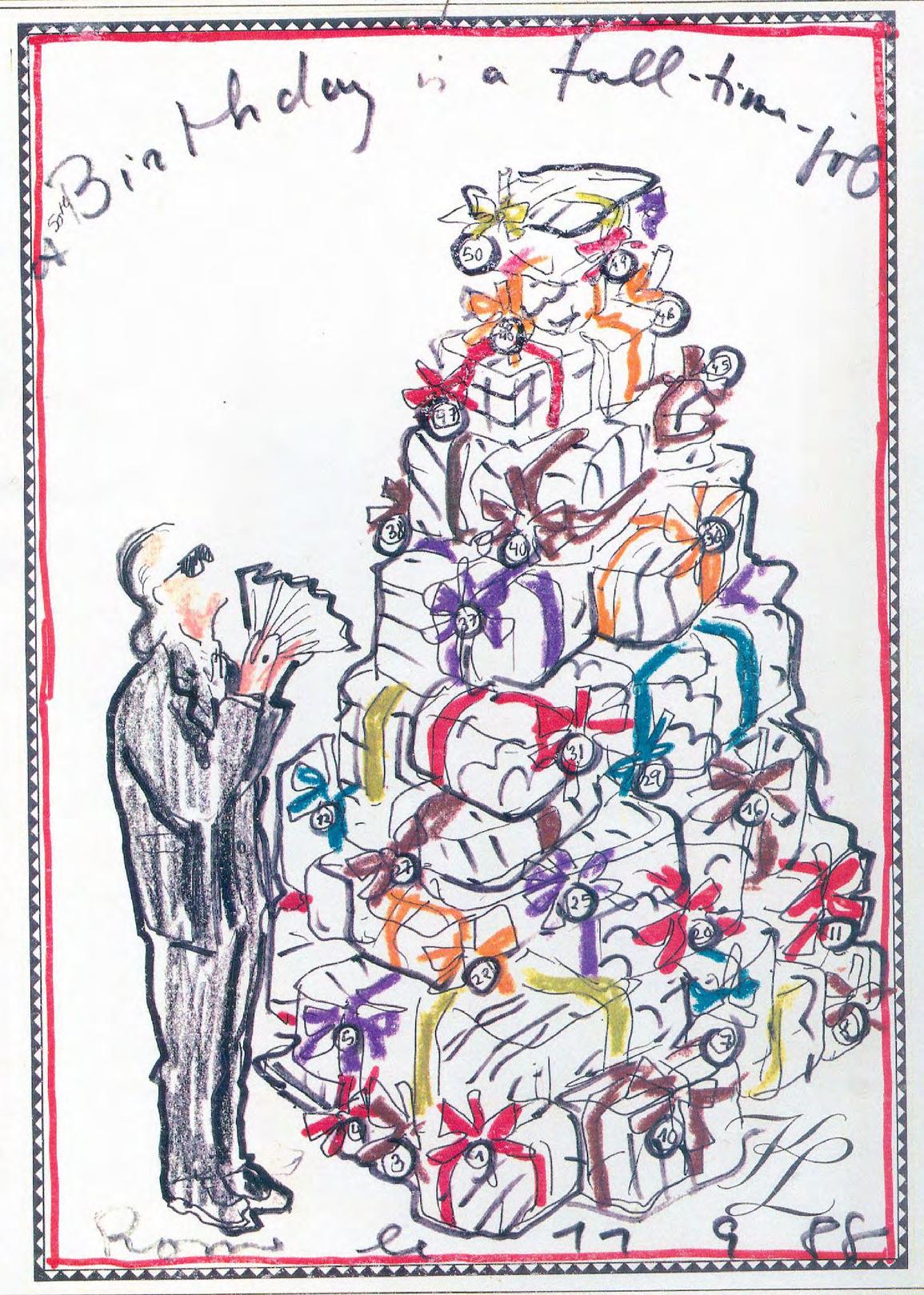

Embrace fresh, luminous skin, soft pastel hues, and bold pops of colour that capture the season’s energy. From dewy finishes to vibrant lips, your ultimate spring beauty refresh starts now!
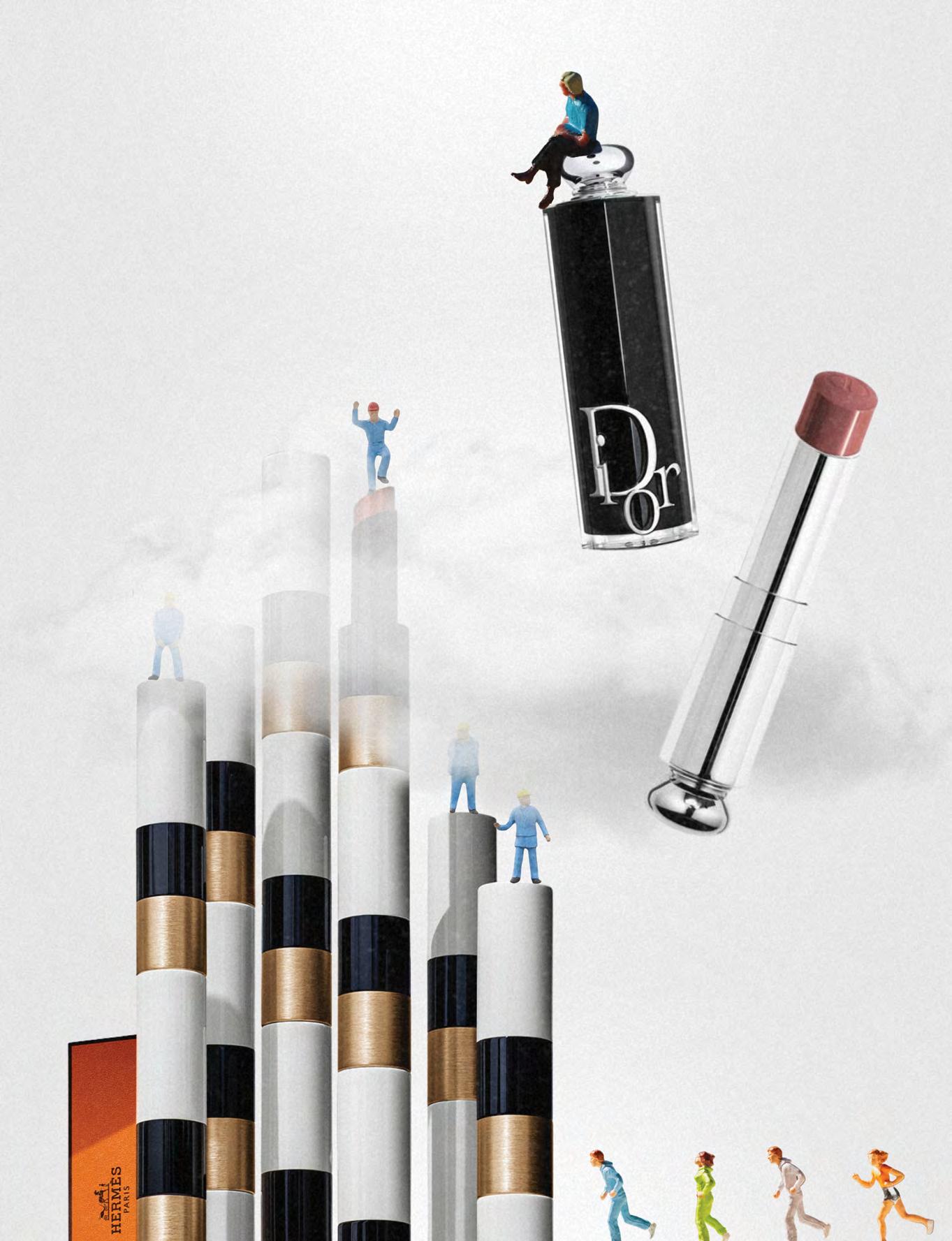


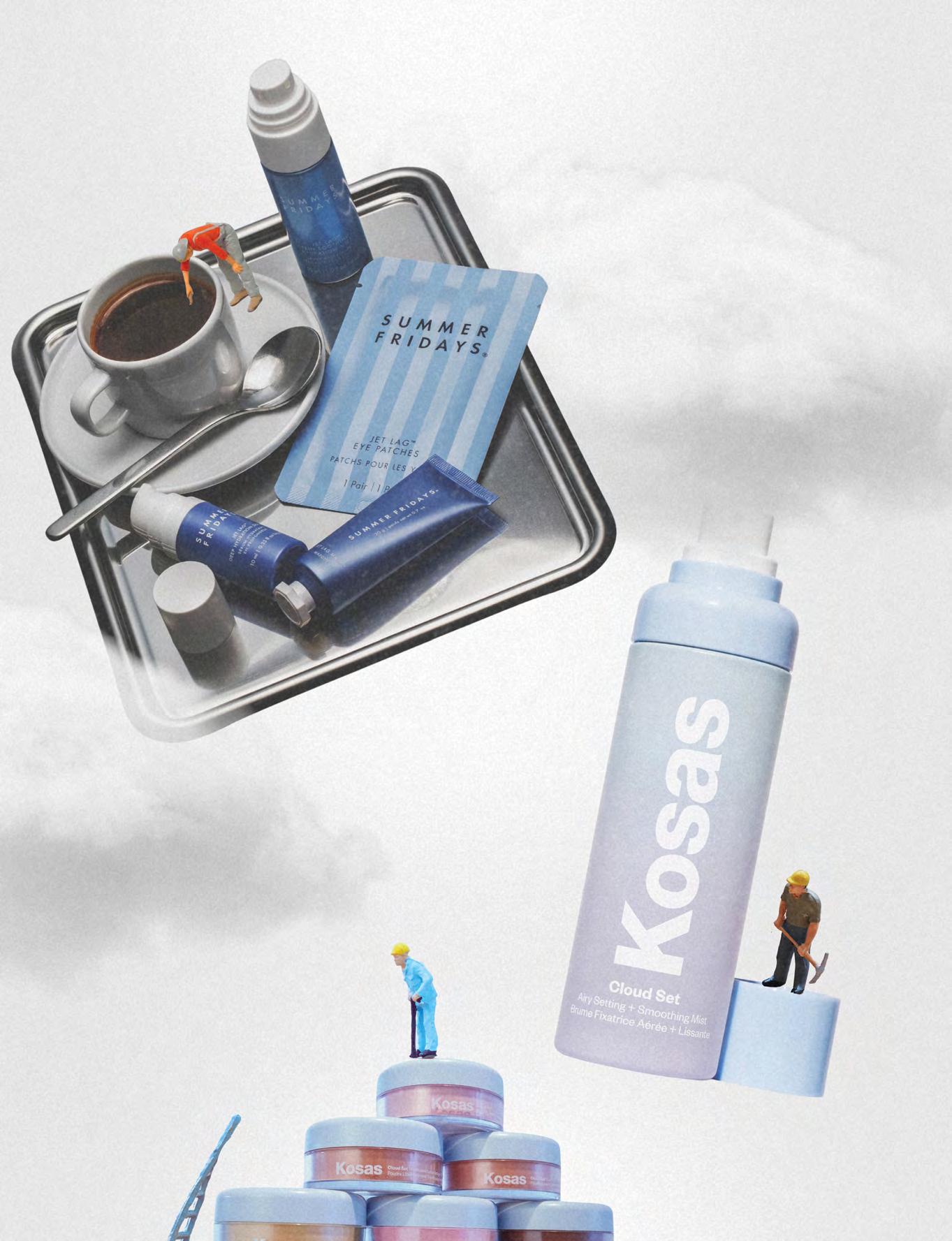

The Sharjah Biennial 16 takes on a journey of movement, memory, and transformation.
words
NADINE KAHIL
The highly anticipated Sharjah Biennial 16, running until 15 June 2025, promises to be a powerful exploration of movement, memory, and transformation. Titled “to carry,” this edition brings together more than 190 artists, including over 200 new commissions, across multiple locations in the Emirate of Sharjah. Curated by Alia Swastika, Amal Khalaf, Megan Tamati-Quennell, Natasha Ginwala, and Zeynep Öz, the Biennial offers a collective meditation on what it means to bear histories, cultures, and personal experiences across time and space.
The theme “to carry” reflects the many ways in which people hold onto identity, heritage, and resilience in moments of transition. Whether through migration, survival, or the weight of intergenerational narratives, the Biennial presents art as a means of navigation. It invites audiences to engage with these shifting dynamics through installations, performances, and immersive experiences spread across sites in Sharjah City, Al Hamriyah, Al Dhaid, Kalba, Al Madam, and beyond.
The curators have approached the exhibition as an evolving dialogue, weaving together diverse methodologies such as residencies, collective production, sonic explorations, and expanded publications. The result is a multi-layered artistic landscape that fosters conversation and reimagines possibilities for the future. By bringing together
a wide-ranging list of artists, the Biennial bridges regional and global perspectives, capturing the complexities of contemporary existence.
“The constellation of diverse methodologies that the five curators have gathered offers audiences the opportunity to engage in thought-provoking dialogues bridging the local context with global narratives about identity, movement, change and collectivity,” said Hoor Al Qasimi, President and Director of Sharjah Art Foundation. “By centring the act of carrying, Sharjah Biennial 16 offers a space for imagining new collective futures while recognizing the weight of shared histories and experiences.”
Among the participating artists are Adelita Husni-Bey, Arthur Jafa, Fiona Pardington, Lorna Simpson, and Michael Parekōwhai, with many presenting newly commissioned works. Their contributions reflect on themes of movement, change, and the passage of knowledge across generations and geographies.
As the Biennial unfolds, it transforms Sharjah into a site of collective storytelling, where histories are carried forward and new dialogues emerge. Through its expansive program, it challenges visitors to reconsider what they hold, what they let go of, and how art can serve as both a vessel and a bridge in times of upheaval and renewal.


Lorna Simpson, From Earth & Sky, 2016–2018. Rennie Collection, Vancouver. Installation view: Sharjah Biennial 16, Al Mureijah Art Spaces, Sharjah, 2025.

Michael Parekōwhai, Te Ao Hurihuri, 2009. Installation view: Sharjah Biennial 16, House of Wisdom, Sharjah, 2025.

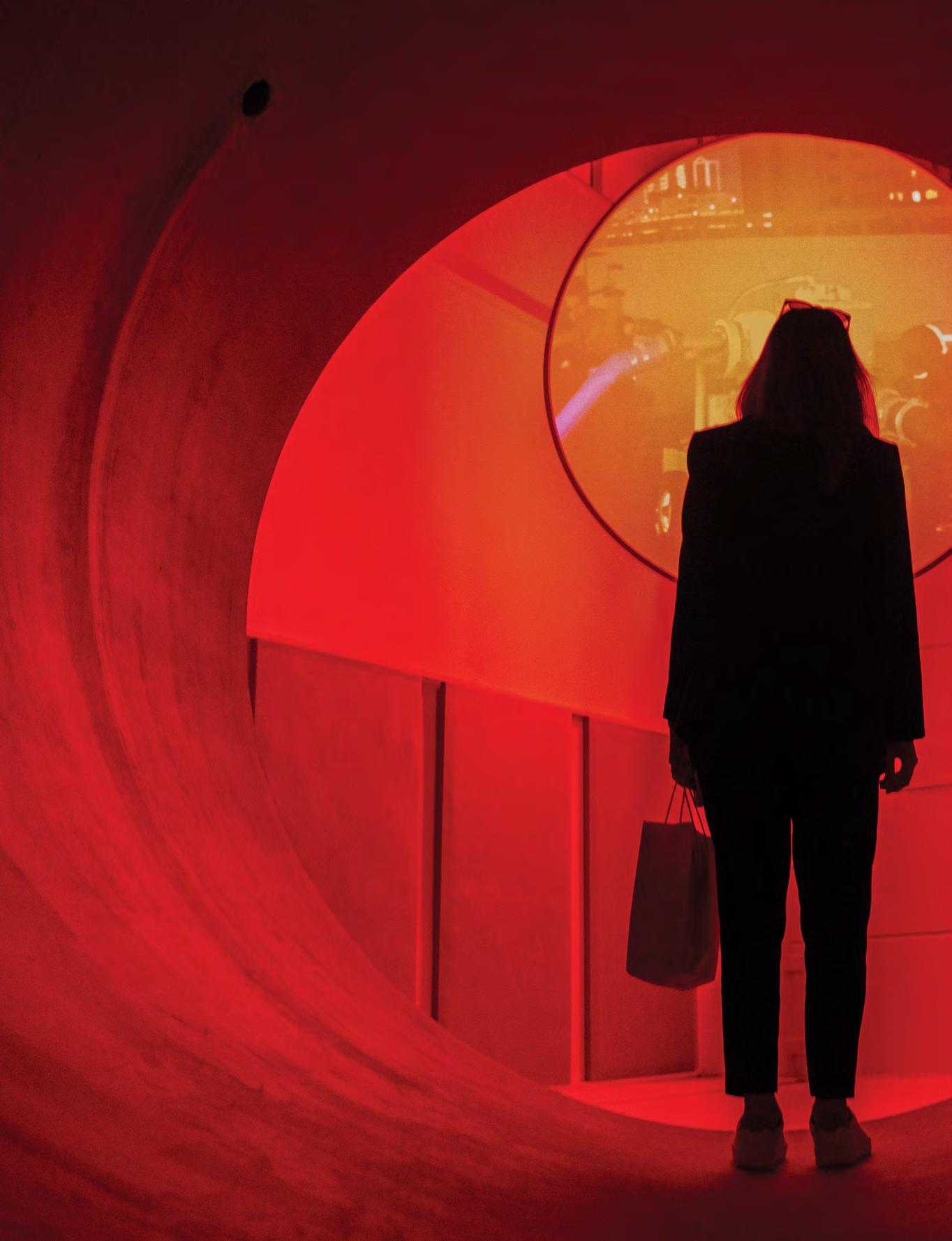
Adelita Husni-Bey, Like a Flood, 2025. Commissioned by Sharjah Art Foundation and made possible by the Italian Council programme (2024), with Alserkal Arts Foundation, Dubai. Project research conducted in collaboration with Shehrazade Mahassini. Installation view: Sharjah Biennial 16, Kalba Ice Factory, Sharjah, 2025.

“By
centring the act of carrying, Sharjah Biennial 16 offers a space for imagining new collective futures while recognizing the weight of shared histories and experiences.”
Hoor Al Qasimi

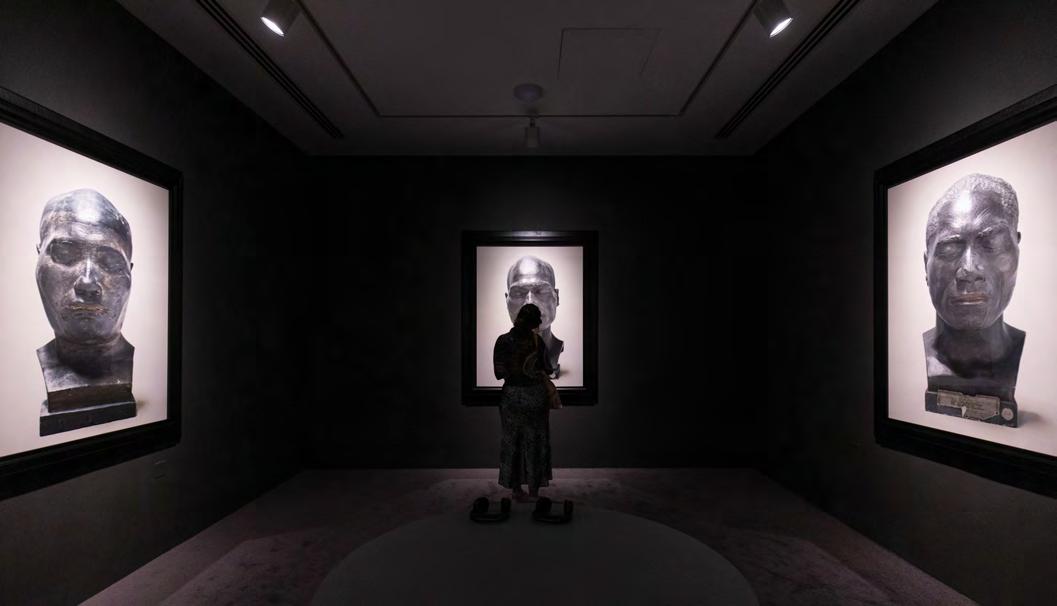
Pardington, selected works from Āhua: a beautiful hesitation, 2010. Courtesy of the artist, Starkwhite Gallery, Auckland, Musée de l’Homme (Muséum National d’Histoire Naturelle), Paris, and Musée du quai Branly – Jacques Chirac, Paris.
Installation view: Sharjah Biennial 16, Old Al Diwan Al Amiri, Hamriyah, Sharjah.

Te Matahiapo Collective, Ā Ē
Ō Ū
Ō
Ā Ū: Ko Pari Haruru, 2025. Commissioned by Sharjah Art Foundation with the support of Creative New Zealand Toi Aotearoa.
Installation view: Sharjah Biennial 16, Kalba Ice Factory, Sharjah, 2025
Modern advances and ancient practices combine as the regional wellness scene continues to innovate.
The Middle East is experiencing a transformative shift in its wellness landscape, seamlessly merging ancient traditions with modern innovations. From the historic streets of Beirut to the serene deserts of Qatar and the dynamic metropolis of Dubai, the region is emerging as a premier destination for holistic well-being. This evolution is marked by the rise of both international luxury retreats and homegrown wellness centres, each offering unique experiences that cater to a diverse clientele.
In the heart of Beirut’s vibrant Gemmayzeh district, Origin Circle stands as a testament to Lebanon’s evolving wellness scene. Founded by lifelong friends Farah Dagher and Michelle Chammas, the studio was born from their shared vision to create a holistic space that integrates fitness, recovery, and community. Their inspiration stemmed from years spent in New York, where they immersed themselves in the city’s dynamic wellness culture. Upon returning to Lebanon, they identified a gap in the market and sought to introduce a concept that seamlessly merges movement and mindfulness.
Origin Circle offers a diverse range of boutique fitness classes, including Lagree on state-of-the-art Megaformer and Microformer machines, as well as infrared-heated yoga and Pilates sessions. These classes are designed to enhance physical performance and promote relaxation. Complementing the fitness offerings are advanced recovery treatments such as cold plunges, infrared saunas, pressotherapy, and therapeutic massages. The services reflect the studio’s commitment to comprehensive well-being.
Beyond its physical offerings, Origin Circle places a strong emphasis on fostering a sense of community. The space features a lush outdoor garden, a rooftop lounge, and communal areas that encourage members to connect, relax, and grow together. By hosting events, workshops, and collaborations with local brands and wellness providers, Origin Circle has become a hub for engagement and the exchange of knowledge, revolutionizing the concept of wellness in Beirut.
Origin Circle has become a hub for engagement and the exchange of knowledge.

Qatar’s Our Habitas Ras Abrouq, located at the edge of the UNESCO-protected Al-Reem Biosphere Reserve, offers a luxury retreat where the desert meets the sea. Just an hour’s drive from Doha, this sanctuary provides transformative well-being experiences inspired by Qatar’s rich heritage.
Guests can unwind in 42 spacious villas, each featuring a large outdoor deck, private plunge pool, outdoor showers, and modern amenities, with views of the Arabian Gulf. The villa decor incorporates earthy tones and natural textures, reflecting the serene desert environment. The resort’s dining destination, Qissa, focuses on nourishing the body with wholesome, ethically sourced seasonal produce cooked over an open coal and wood fire grill. Helmed by Chef Vincente Vidal, Qissa presents an elevated take on classic BBQ with signature dishes including roasted lamb, smoky grilled prawns, and tender beef skewers.
Just steps away from the sea, the Beach Club offers fresh beverages, family-style bites, and interactive mixology workshops, all with breath-taking coastal views. A haven for self-care, Our Habitas Ras Abrouq offers wellness experiences designed to encourage inner peace and restoration. Guests can participate in daily yoga, desert meditation, breathwork, and sound healing sessions, fostering mindfulness and emotional well-being.
The resort’s state-of-the-art wellness centre features a fully equipped gym and longevity-focused amenities to support holistic health. From gentle sunrise stretches to immersive healing practices
under the stars, every element of the retreat is crafted to promote balance and rejuvenation. Rooted in Qatari heritage, the resort offers cultural experiences such as sadu weaving workshops and calligraphy classes.
Visitors can explore the region’s waters with stand-up paddleboarding, glass-bottom kayaking, and kite surfing, discovering the Arabian Sea’s diverse marine life. For fitness enthusiasts, padel tennis courts provide an active yet social way to unwind. Located approximately 1km from Richard Serra’s iconic sculpture, East-West/West-East, guests can visit this landmark and immerse themselves in the natural beauty of the surrounding white dunes with offsite tours and excursions. The resort also features a stainless steel sculpture by artist Khalid Shahin.
Our Habitas has partnered with Atlas Bookstore, founded by Qatari sisters Fatma and Reem Al Sehlawi, for cultural advisory, with Studio Imara contributing to specific design elements and interiors of the resort. More than a luxury getaway, Our Habitas Ras Abrouq is a sanctuary for self-discovery, connection, and personal renewal. Whether you’re seeking stillness through meditation, adventure in nature, or deep cultural immersion, this retreat provides an unparalleled space to slow down, reflect, and embrace holistic well-being.
From gentle sunrise stretches to immersive healing practices

under the stars, every element of Our Habitas Ras Abrouq is crafted to promote balance and rejuvenation.

Ekaya stands out as a sanctuary for holistic well-being, offering a retreat from the hustle and bustle of daily life.
In Dubai’s bustling Arjan neighborhood, Ekaya Wellness Studio emerges as a beacon for those seeking a comprehensive approach to health and well-being. Founded by sisters Chandini and Chanchal Guria, both skilled yoga and Pilates instructors, Ekaya offers a diverse range of classes tailored to accommodate all fitness levels. The studio’s design emphasizes comfort and tranquility, providing a warm and inviting atmosphere that encourages members to prioritize their health while fostering genuine connections.
Beyond its physical offerings, Ekaya serves as a community hub, regularly hosting interactive events such as Matcha Mornings, which combine Reformer Pilates sessions with social gatherings over matcha beverages. Other events include ice baths, social walk clubs, and art
workshops, all designed to encourage members to unwind, connect, and explore new wellness experiences. Chandini and Chanchal’s vision extends beyond physical fitness; they aim to create a space where individuals can engage, relax, and share experiences with like-minded people. In a city that’s constantly on the move, Ekaya stands out as a sanctuary for holistic well-being, offering a retreat from the hustle and bustle of daily life.
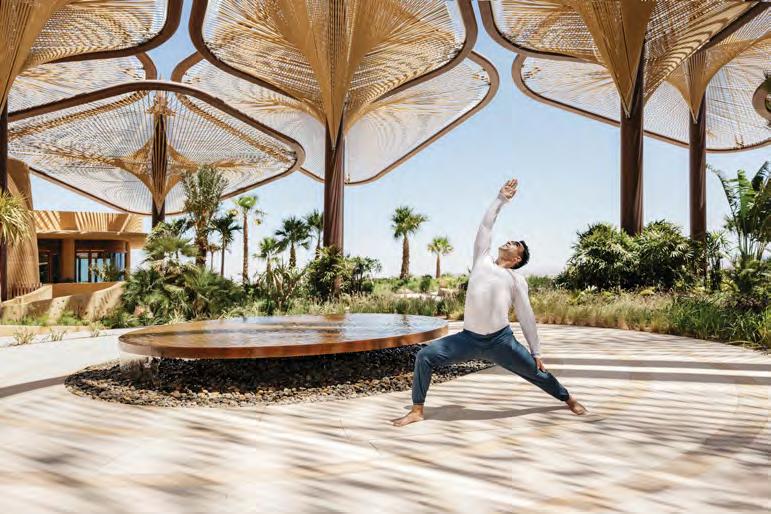


Nestled amidst the undulating dunes of Saudi Arabia’s Red Sea coastline, Six Senses Southern Dunes emerges as a sanctuary where luxury intertwines with holistic well-being. This newly unveiled resort offers an immersive experience that harmoniously blends the rich tapestry of Bedouin heritage with contemporary wellness practices. At the heart of this desert oasis lies the expansive Six Senses Spa, a 3,974-square-metre haven designed to mirror the natural beauty of its surroundings.
The spa’s architecture draws inspiration from the sweeping dunes, with honeycomb-patterned walls guiding guests through a journey of rejuvenation. Spanning two floors, the upper level houses a state-of-the-art fitness centre, complete with a spin studio and yoga suite that offer panoramic views of the golden landscape. The lower level is dedicated to transformative therapies, featuring six treatment rooms, a meditation dome, and a holistic anti-aging centre. Here, traditional healing rituals are seamlessly integrated with cutting-edge wellness technologies, providing a bespoke experience tailored to each guest’s needs. Culinary wellness is a cornerstone of the resort’s philosophy and dining venues emphasize the use of freshly grown, locally sourced ingredients, crafting dishes that nourish both body and soul.
Guests can partake in cooking classes, learning to recreate wholesome recipes that reflect the region’s rich culinary heritage. Beyond the spa and dining experiences, Six Senses Southern Dunes offers a plethora of activities designed to foster a deep connection with the environment and oneself. From stargazing sessions under the unpolluted desert sky to guided hikes that explore the geological wonders of the area, each experience is curated to promote mindfulness and inner peace. The resort’s commitment to sustainability further enhances its wellness offerings, with eco-friendly practices, ensuring that guests can rejuvenate in harmony with nature.
In essence, Six Senses Southern Dunes is a holistic journey that invites guests to rediscover themselves amidst the serene beauty of the Saudi desert. By weaving together traditional cultural elements with modern wellness innovations, the resort crafts an unparalleled experience that rejuvenates the mind, body, and spirit.
As the Middle East continues to redefine its wellness landscape, these centres exemplify the region’s commitment to integrating tradition with modernity. By offering unique experiences that promote health, community, and cultural appreciation, they’re showing how our region can contribute to the global wellness narrative. ■
By offering unique experiences that promote health, community, and cultural appreciation, these centres are showing how our region can contribute to the global wellness narrative.

A night with the multitalented Mo Amer in the heart of Dubai.
Date: Feb 7 2025
Location: REUNION- Dubai
YUNG hosted an incredible evening with Netflix star Mo Amer. The actor and comedian was the life and soul of the party with music provided by the ever amazing Basil Alhadi, aka Karrouhat, on the decks. It’s a night we’ll never forget.




